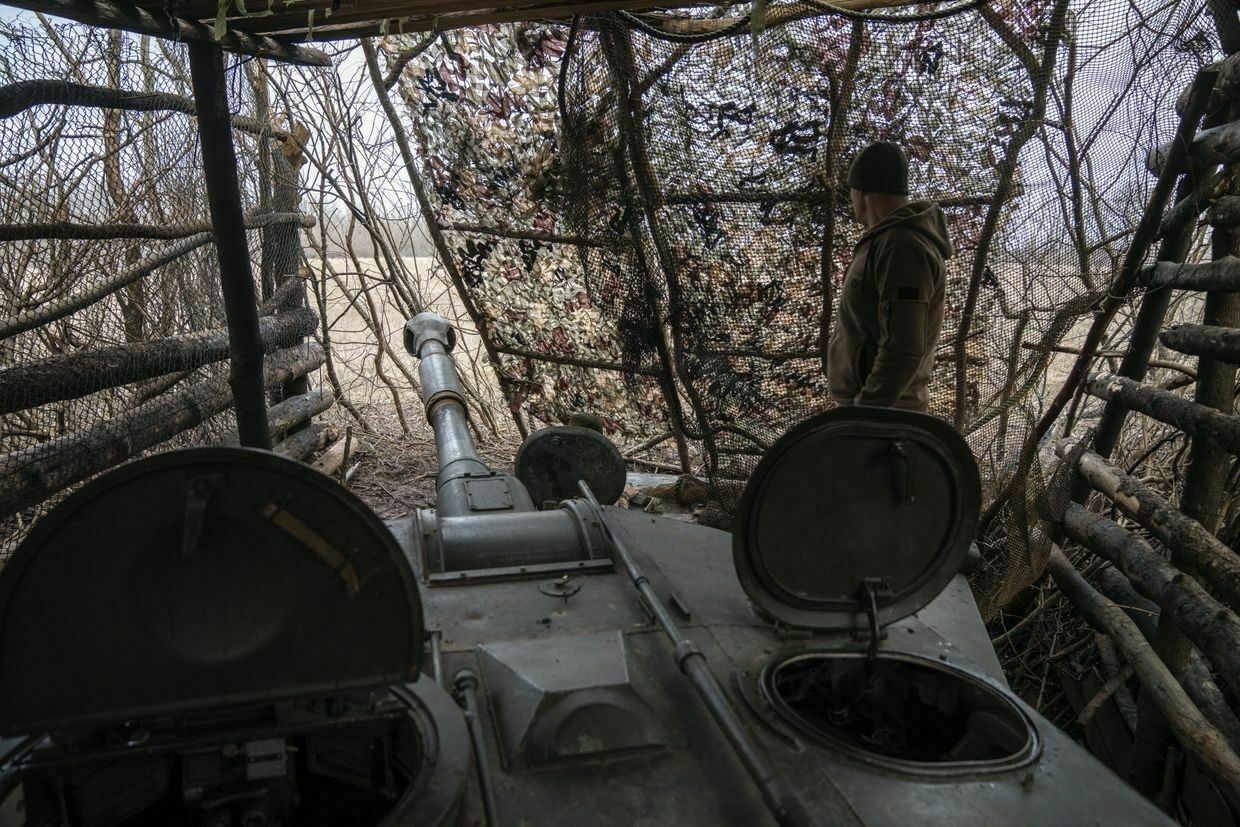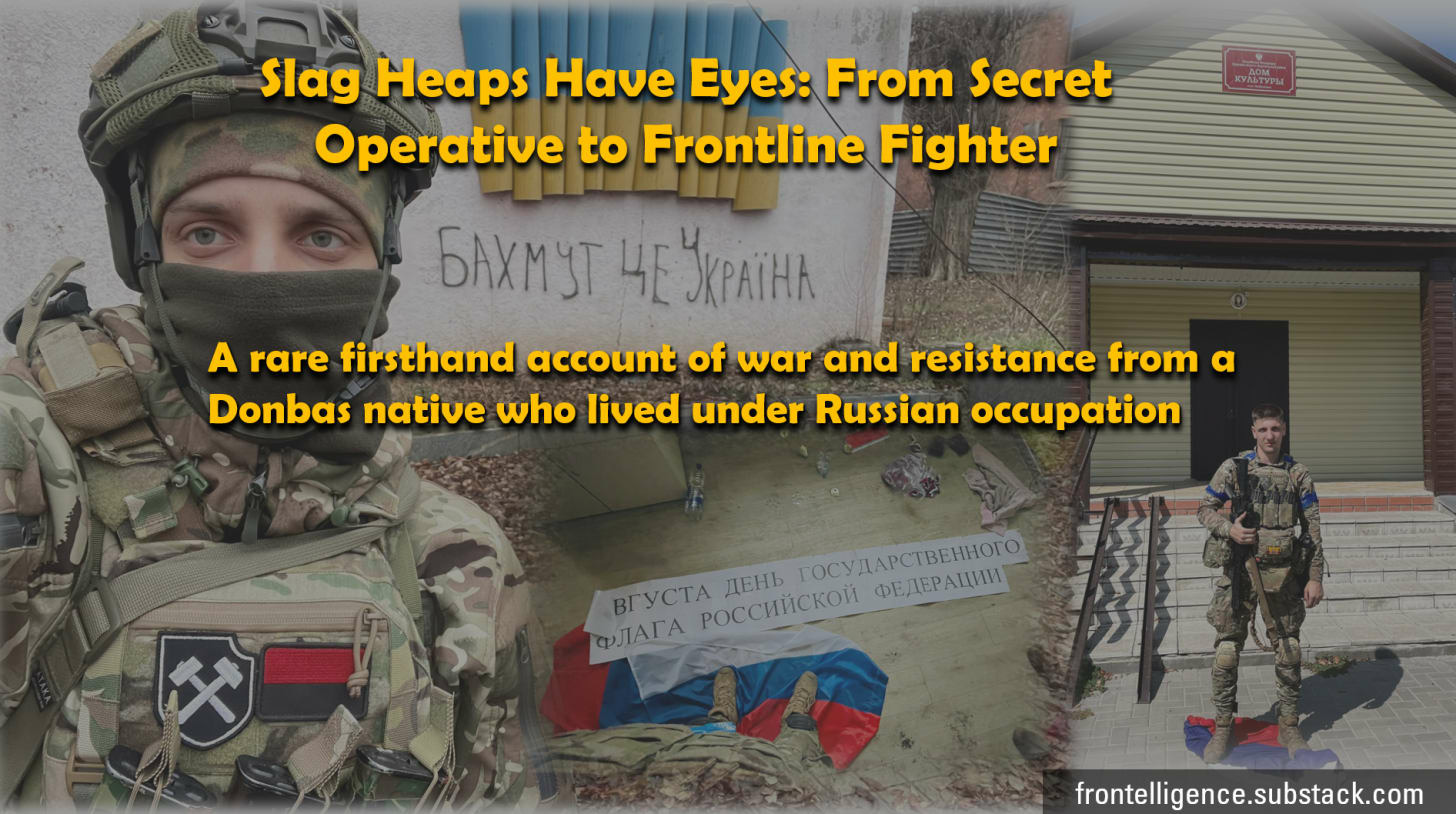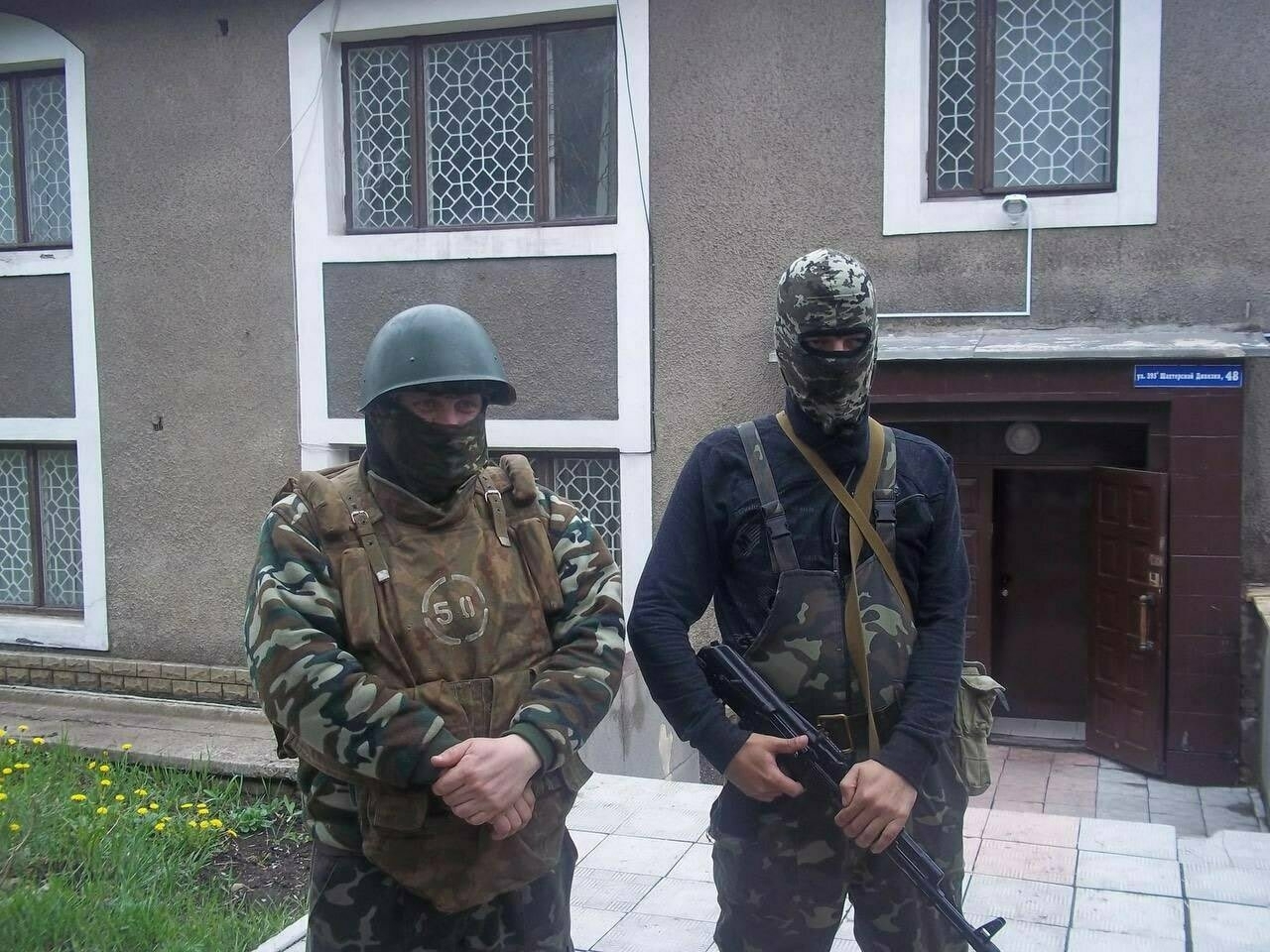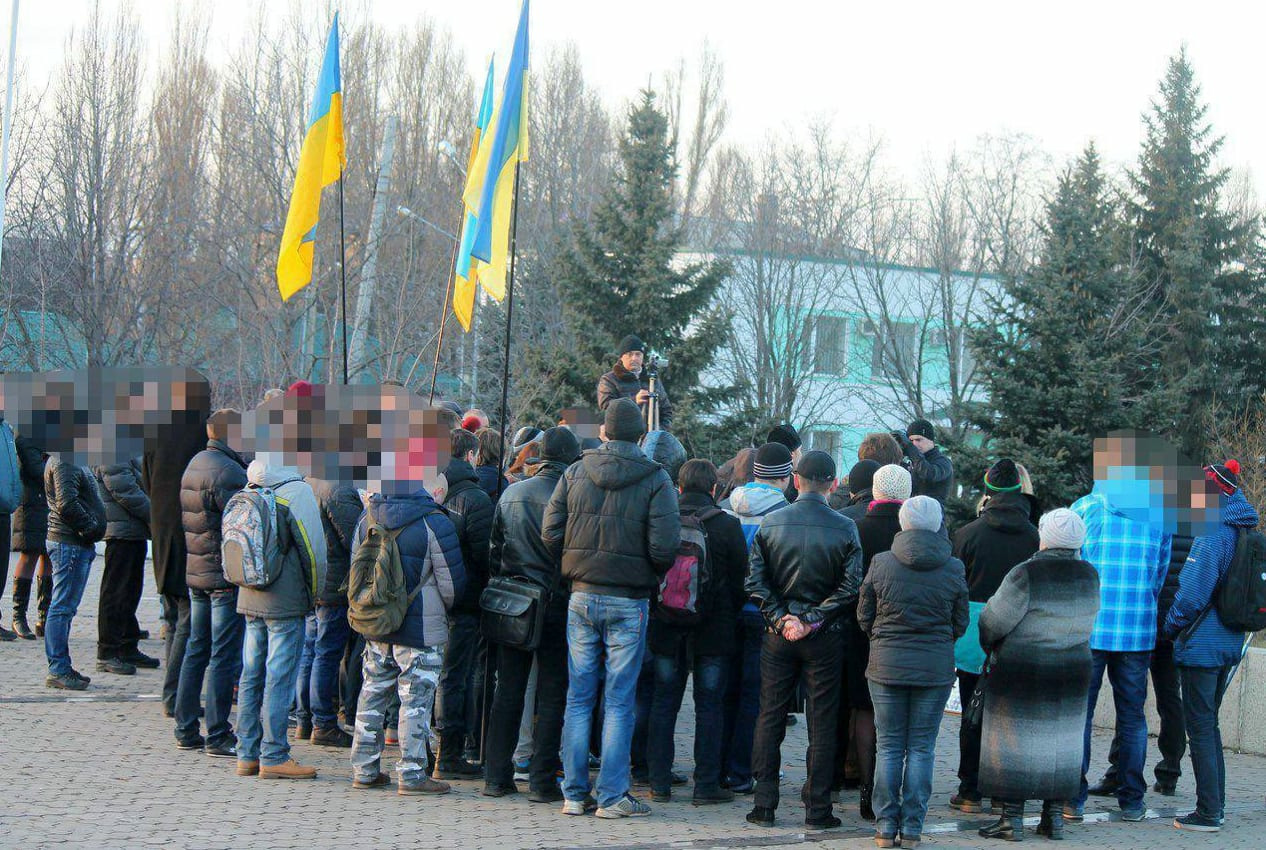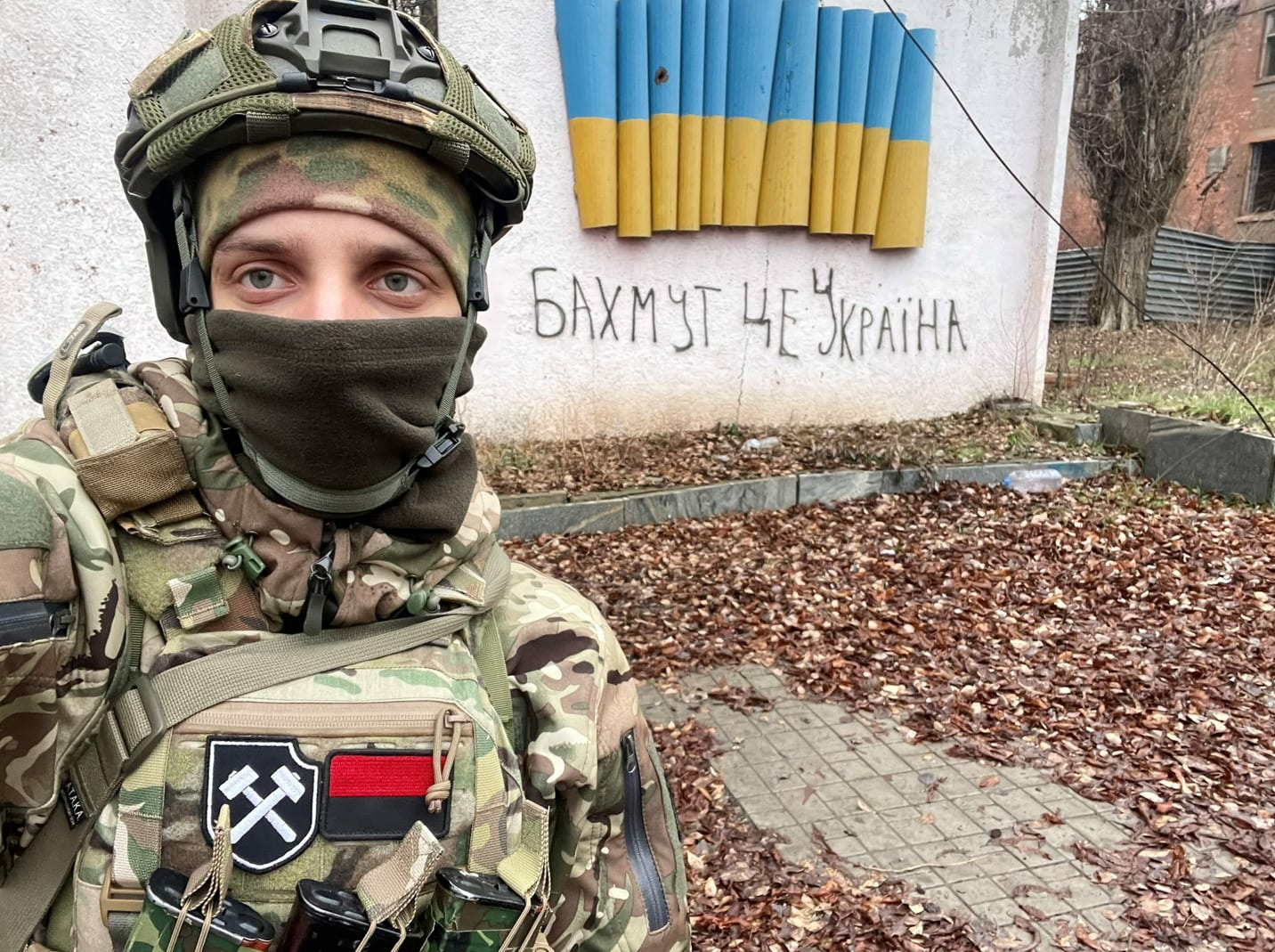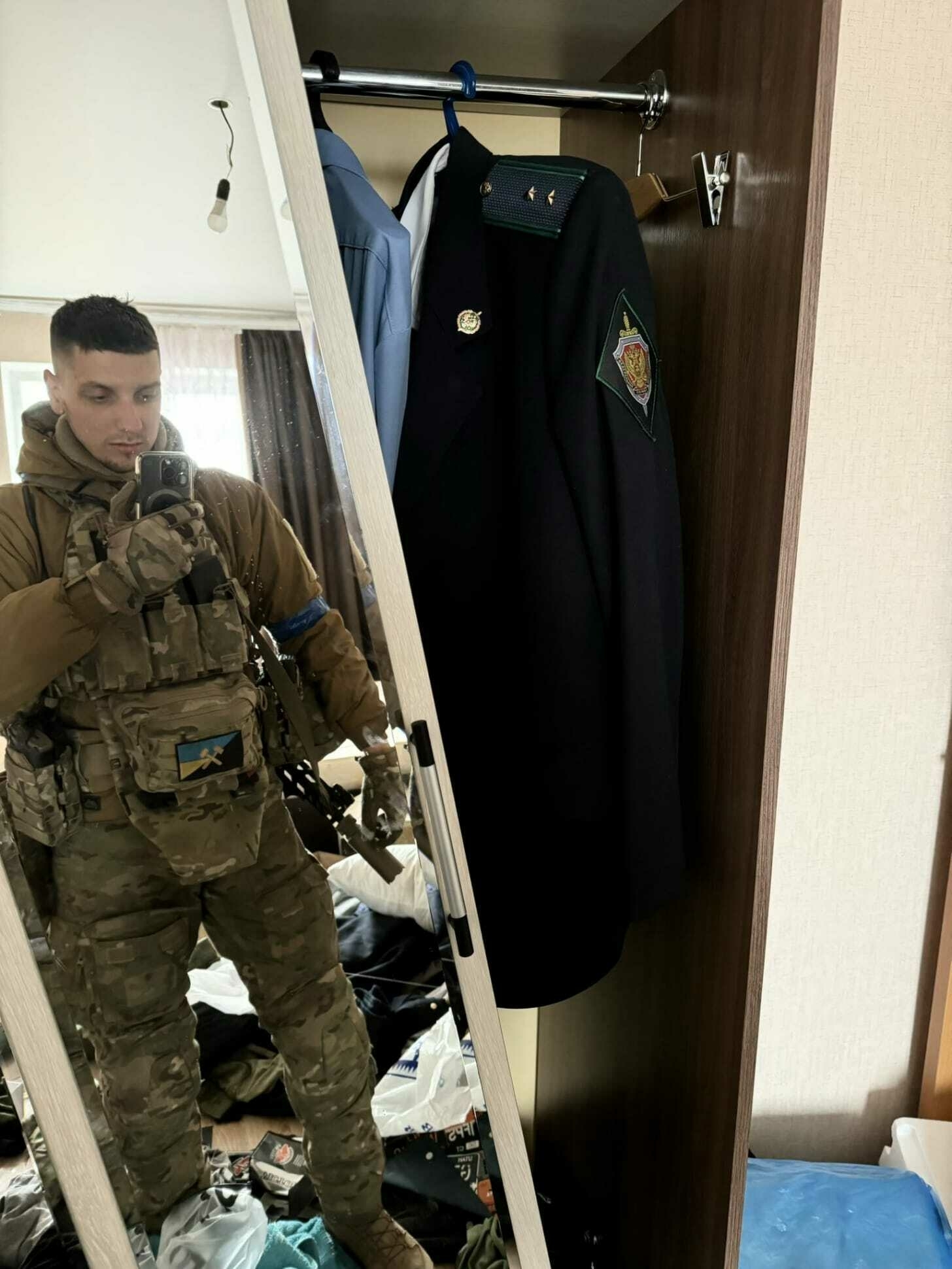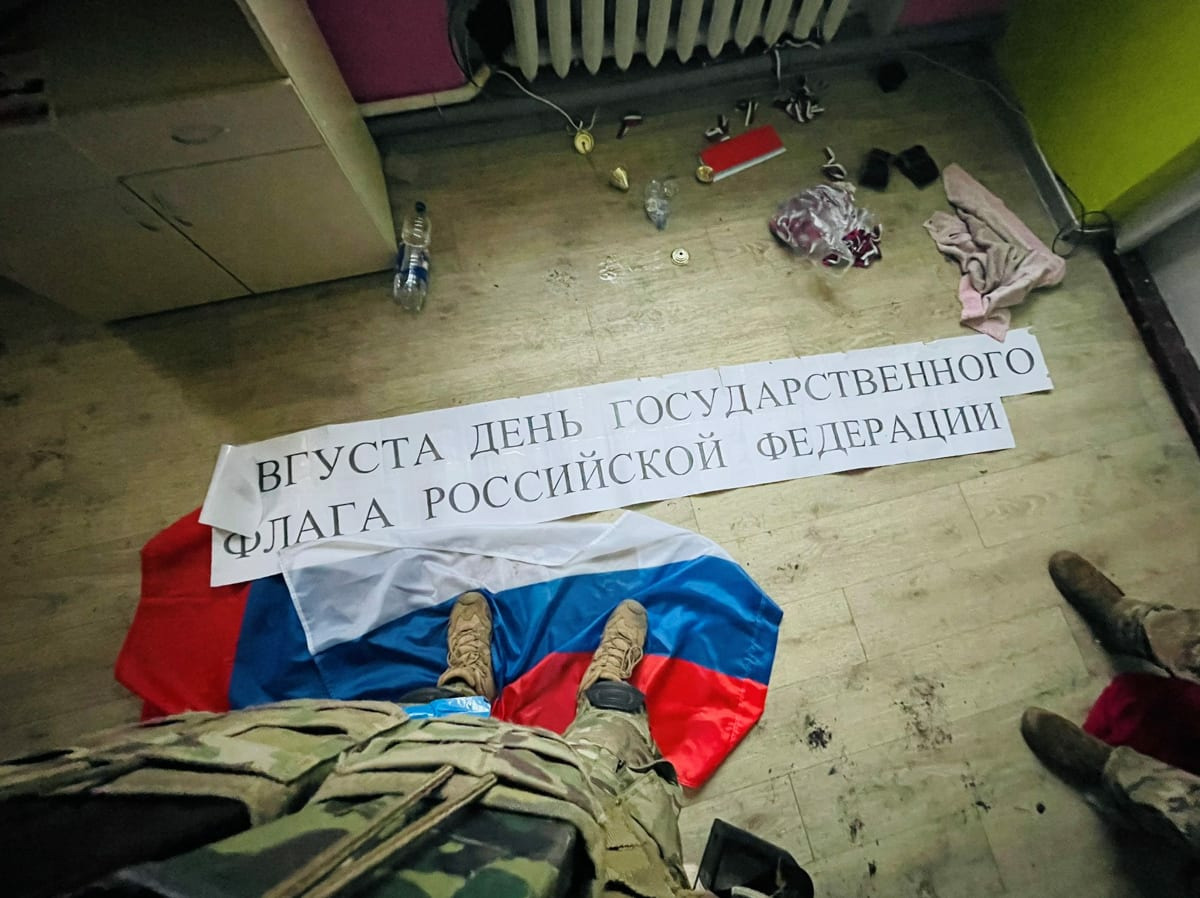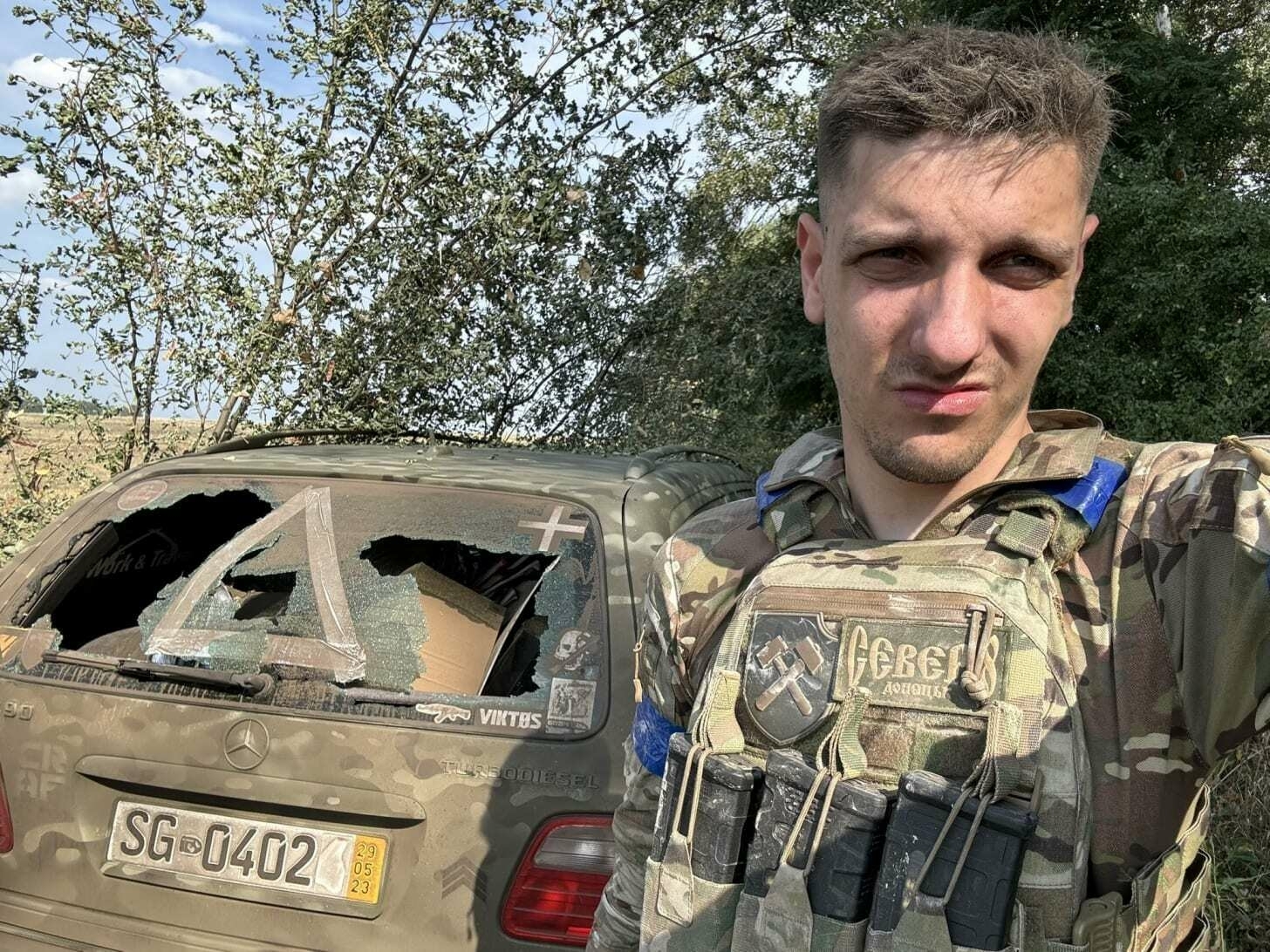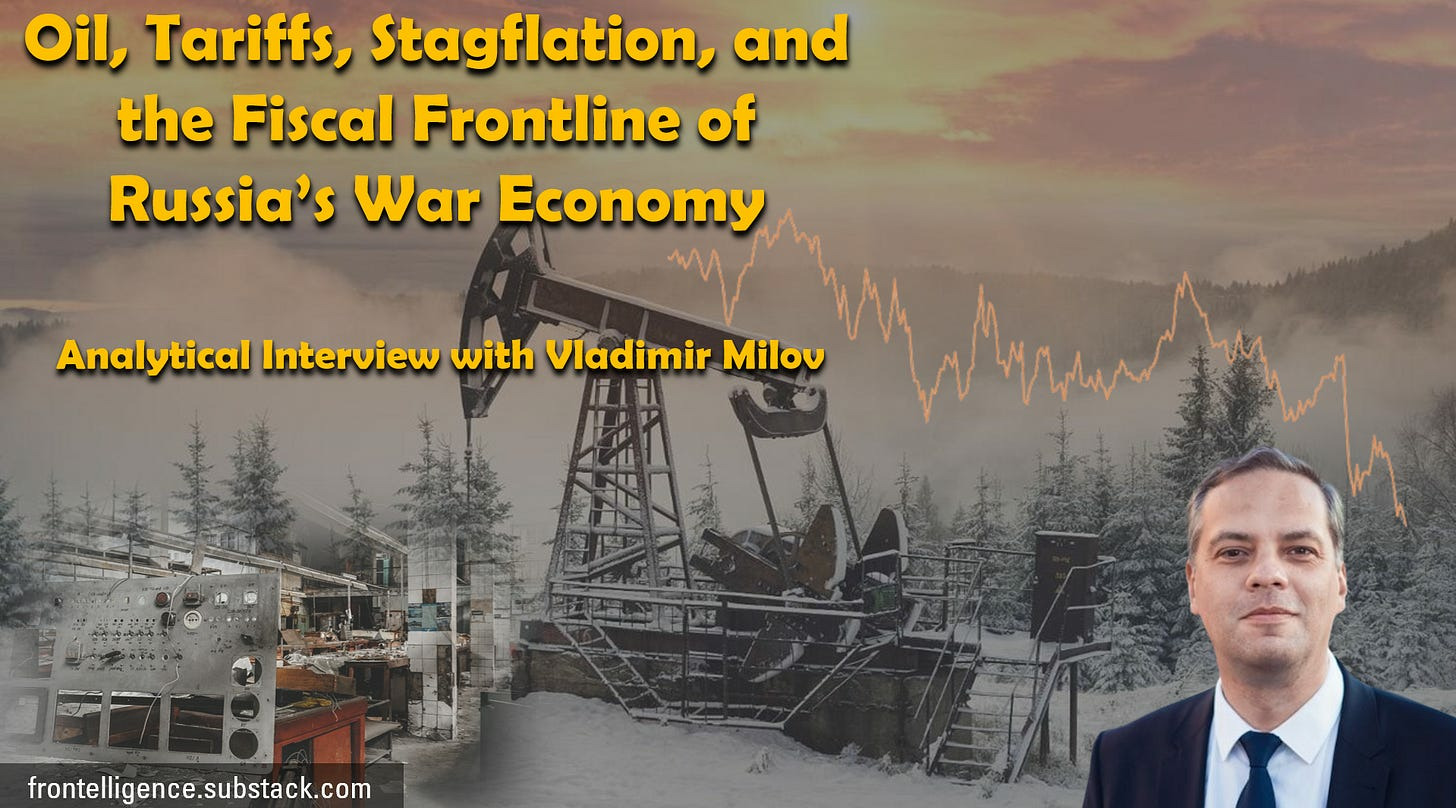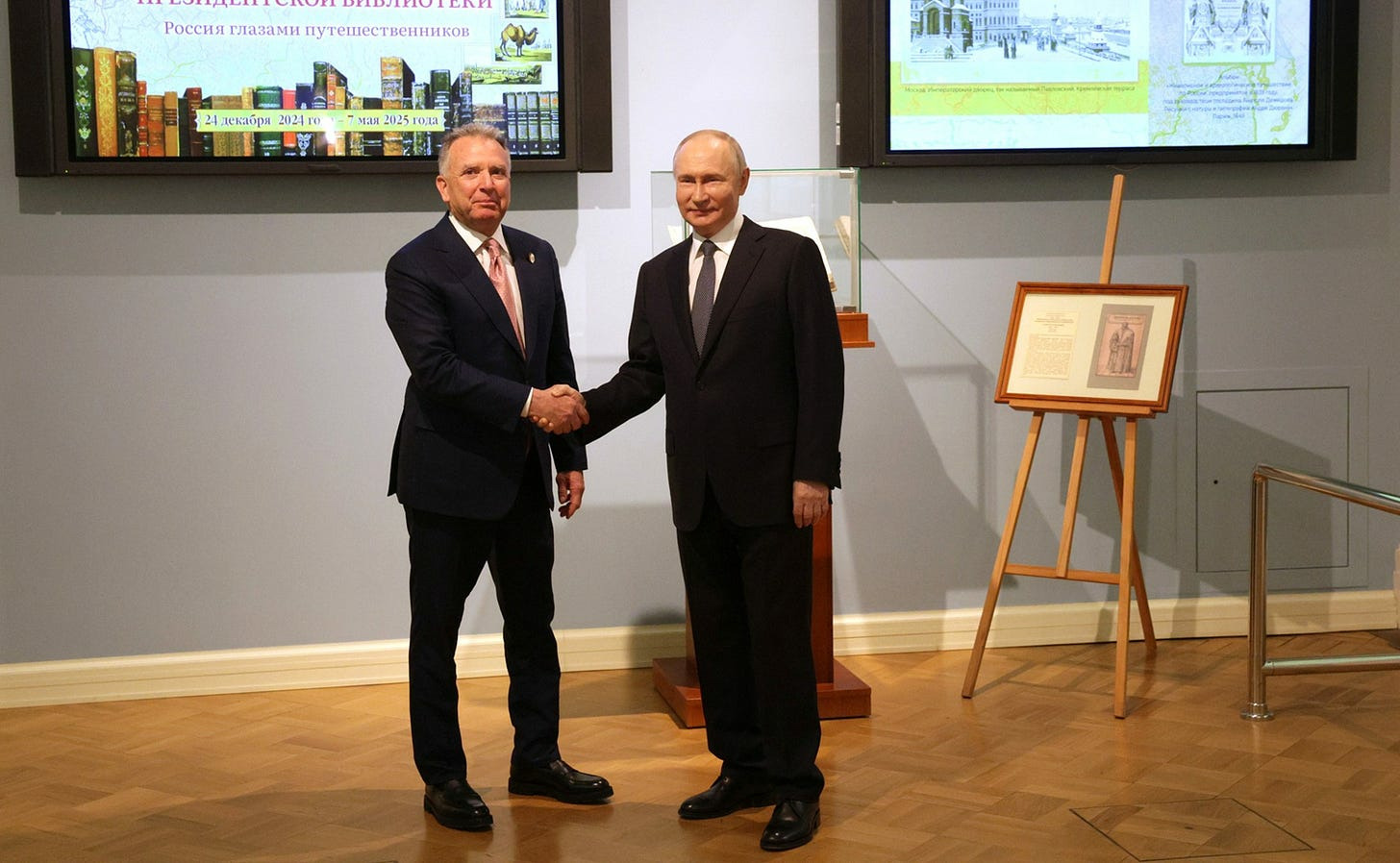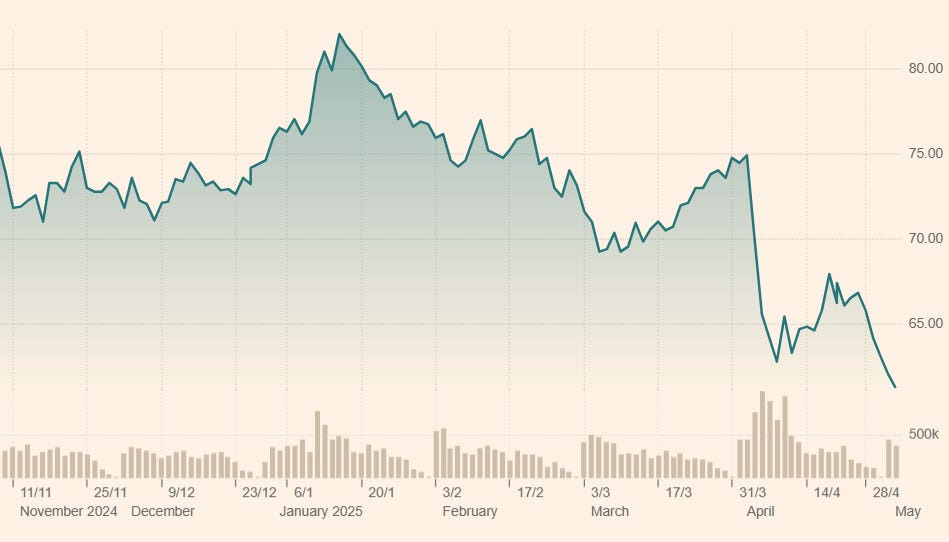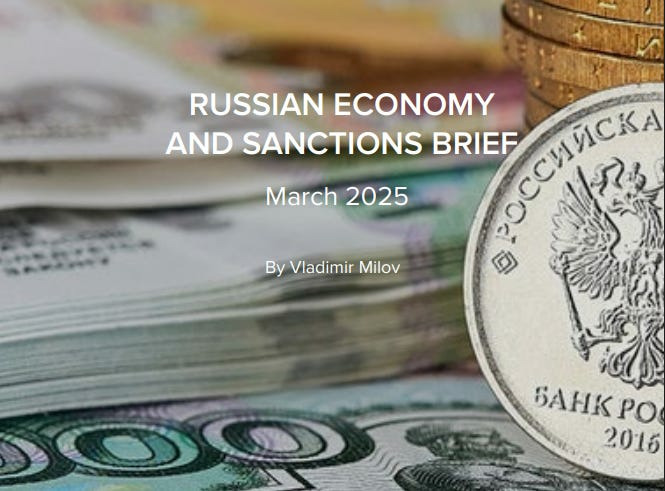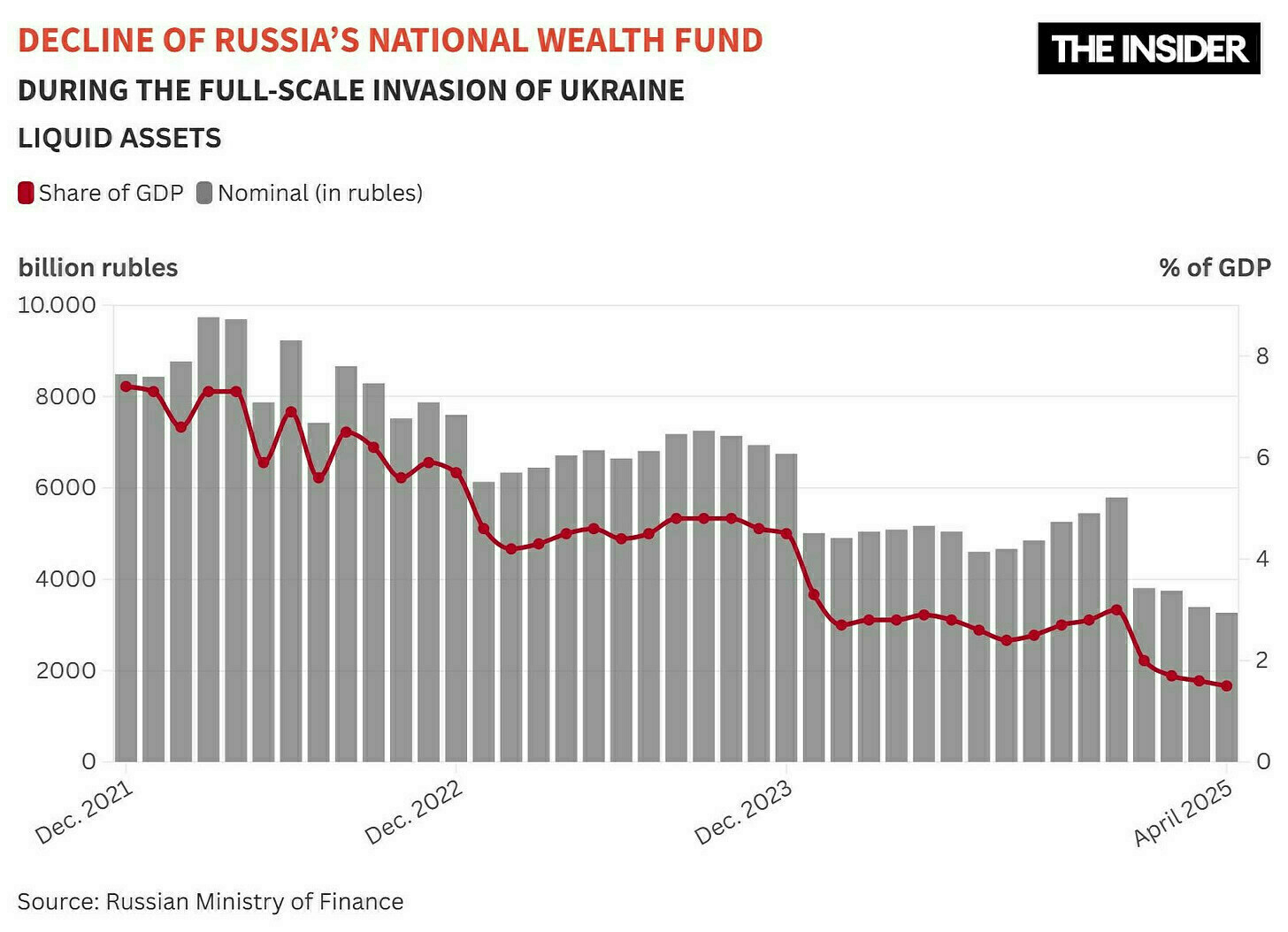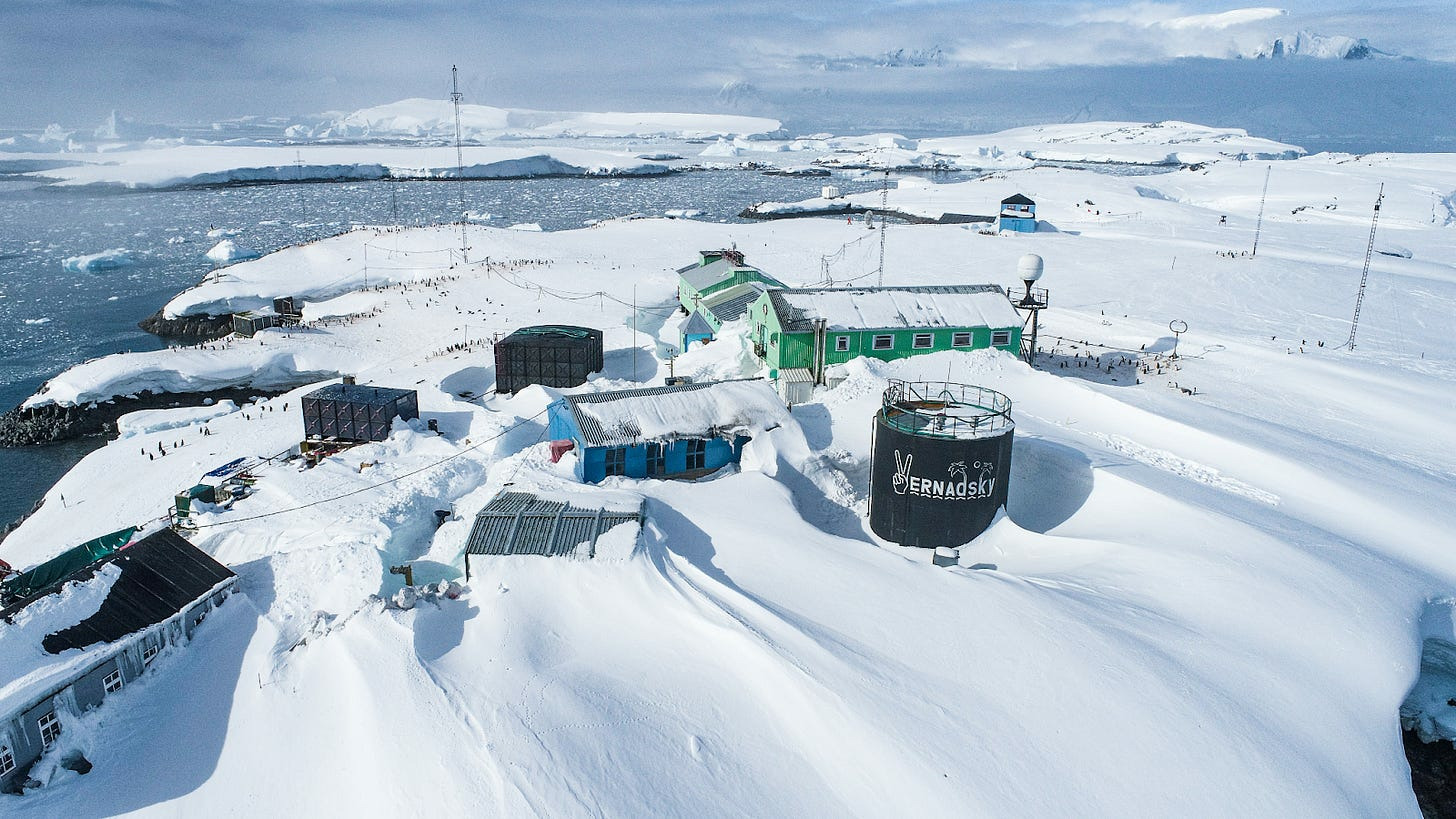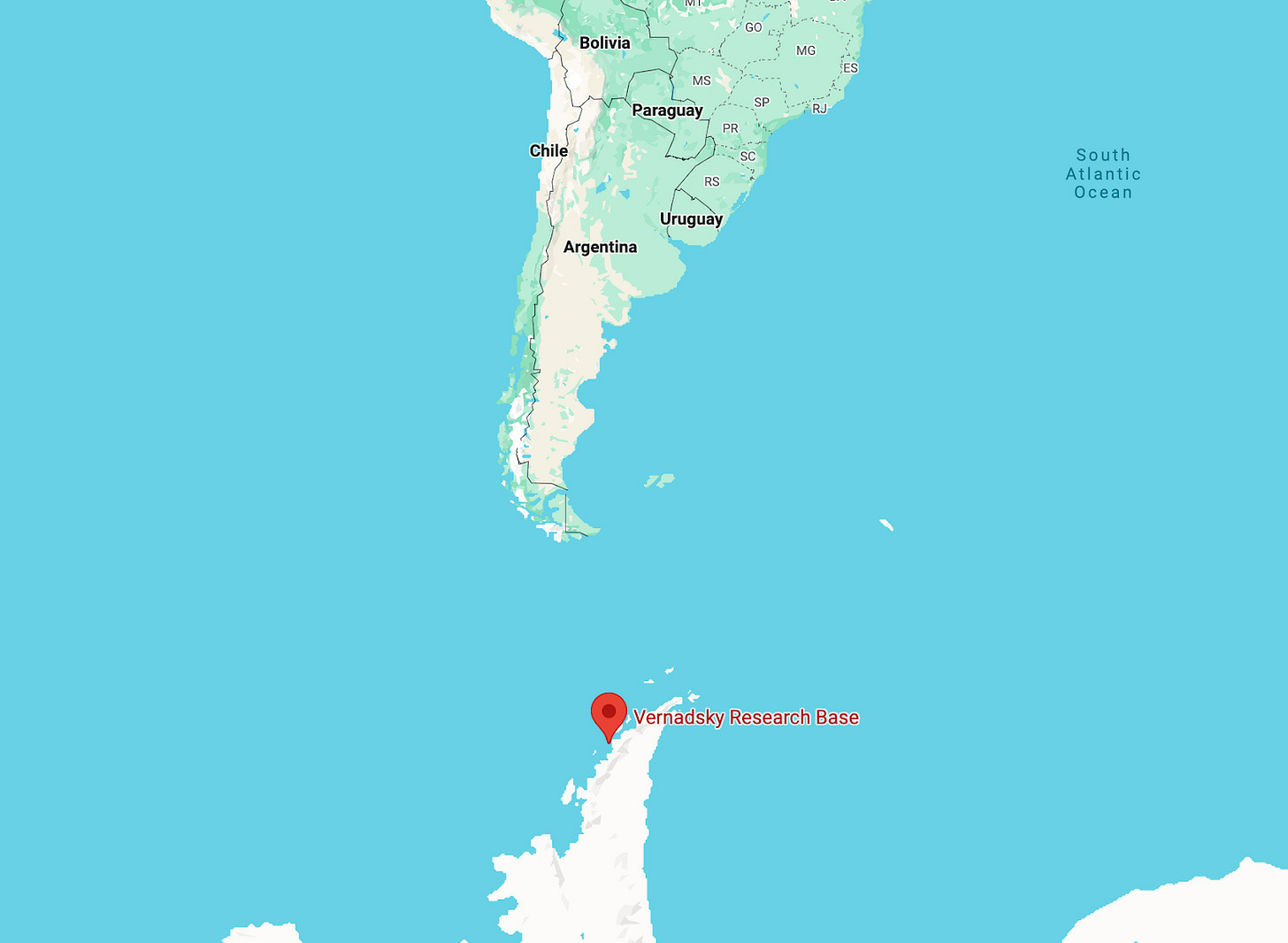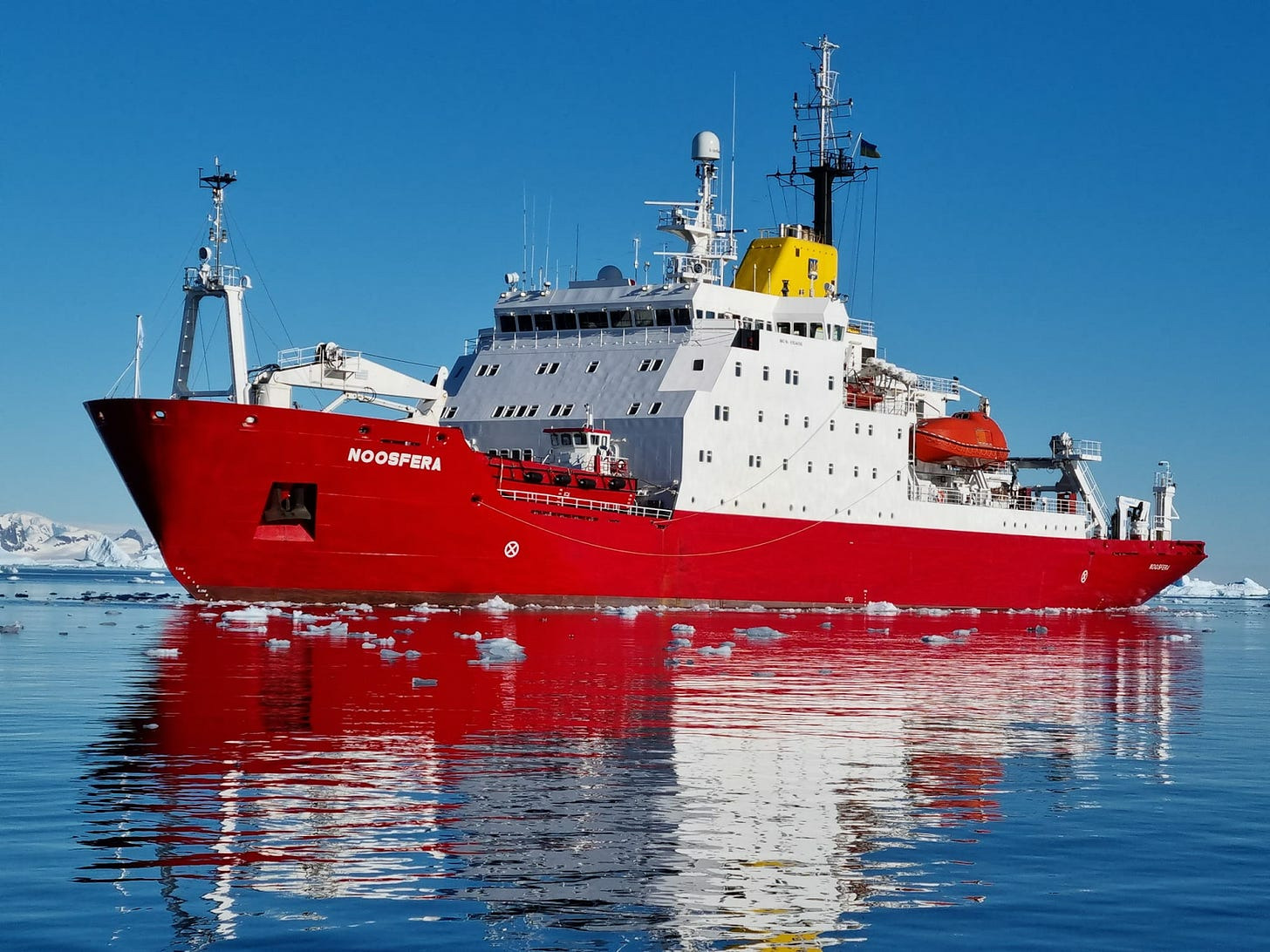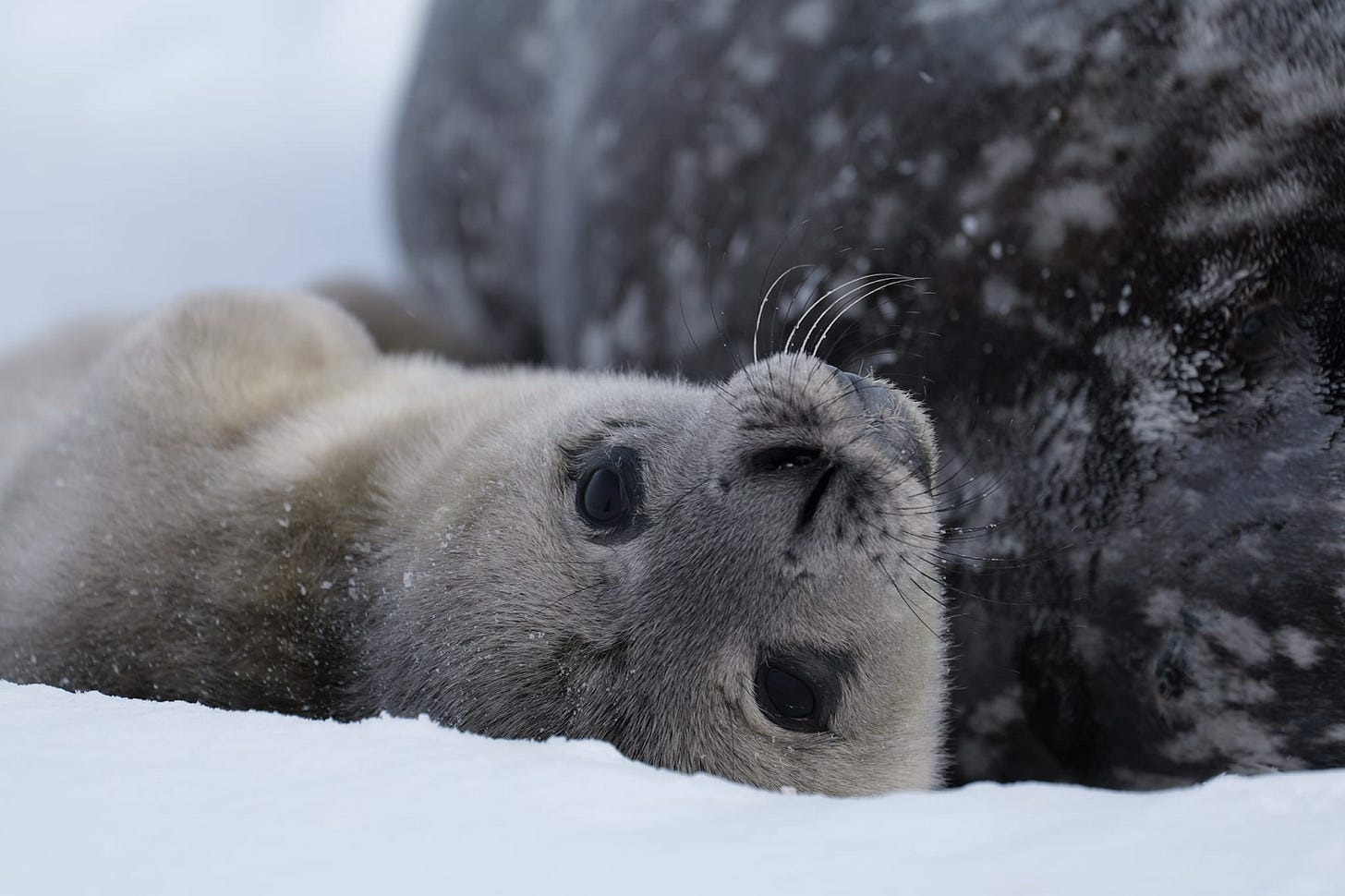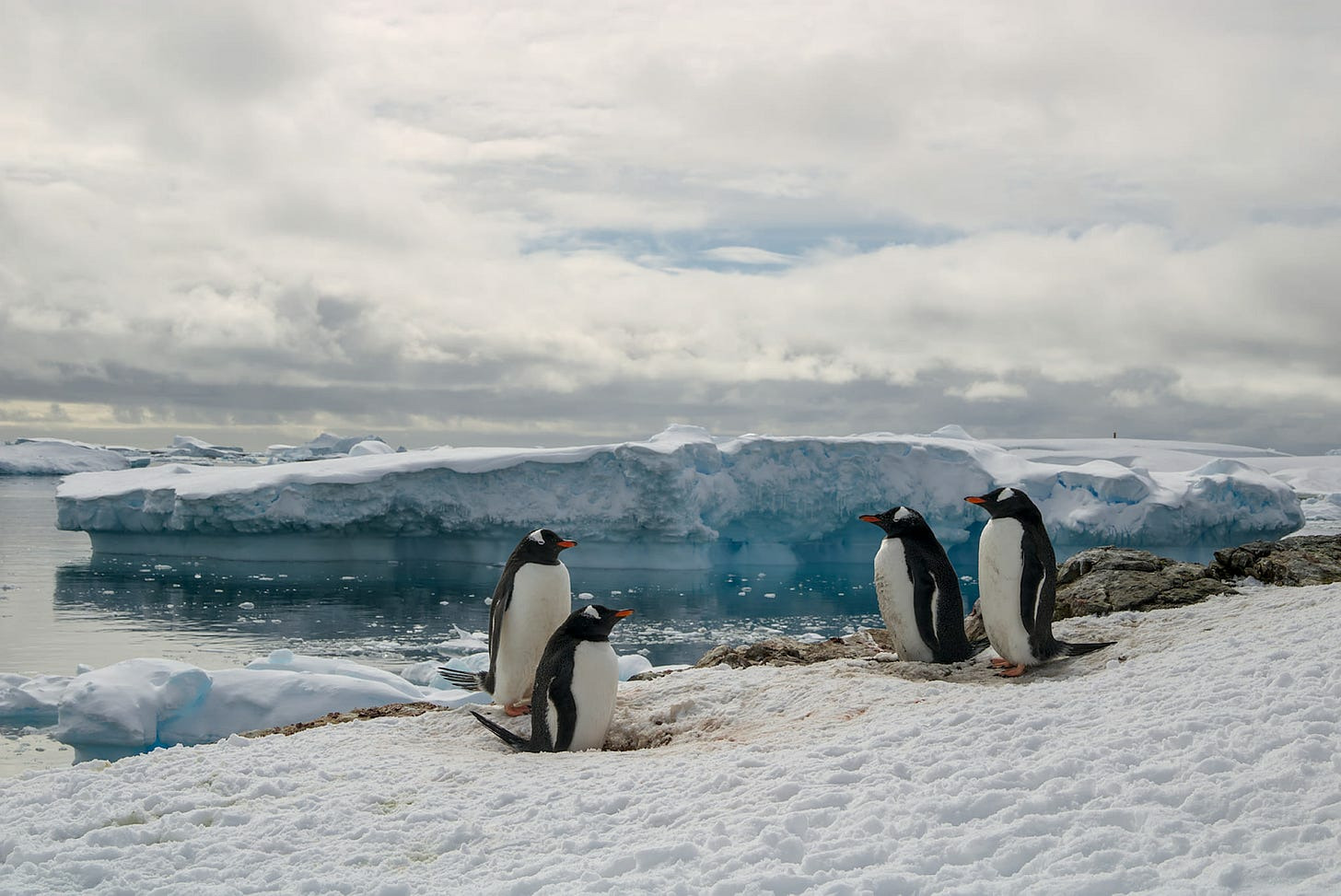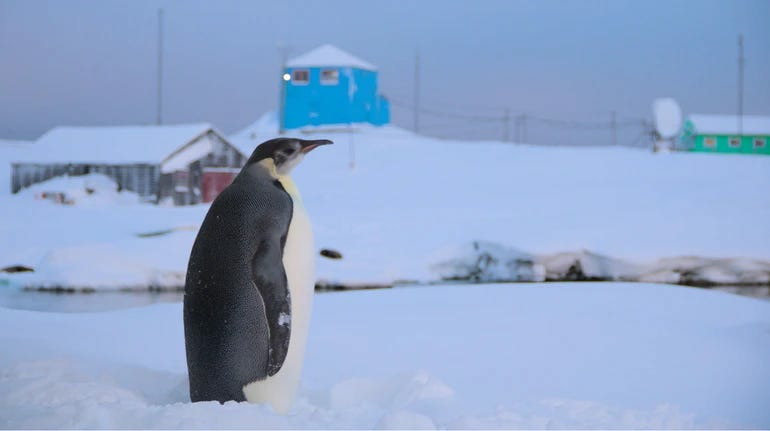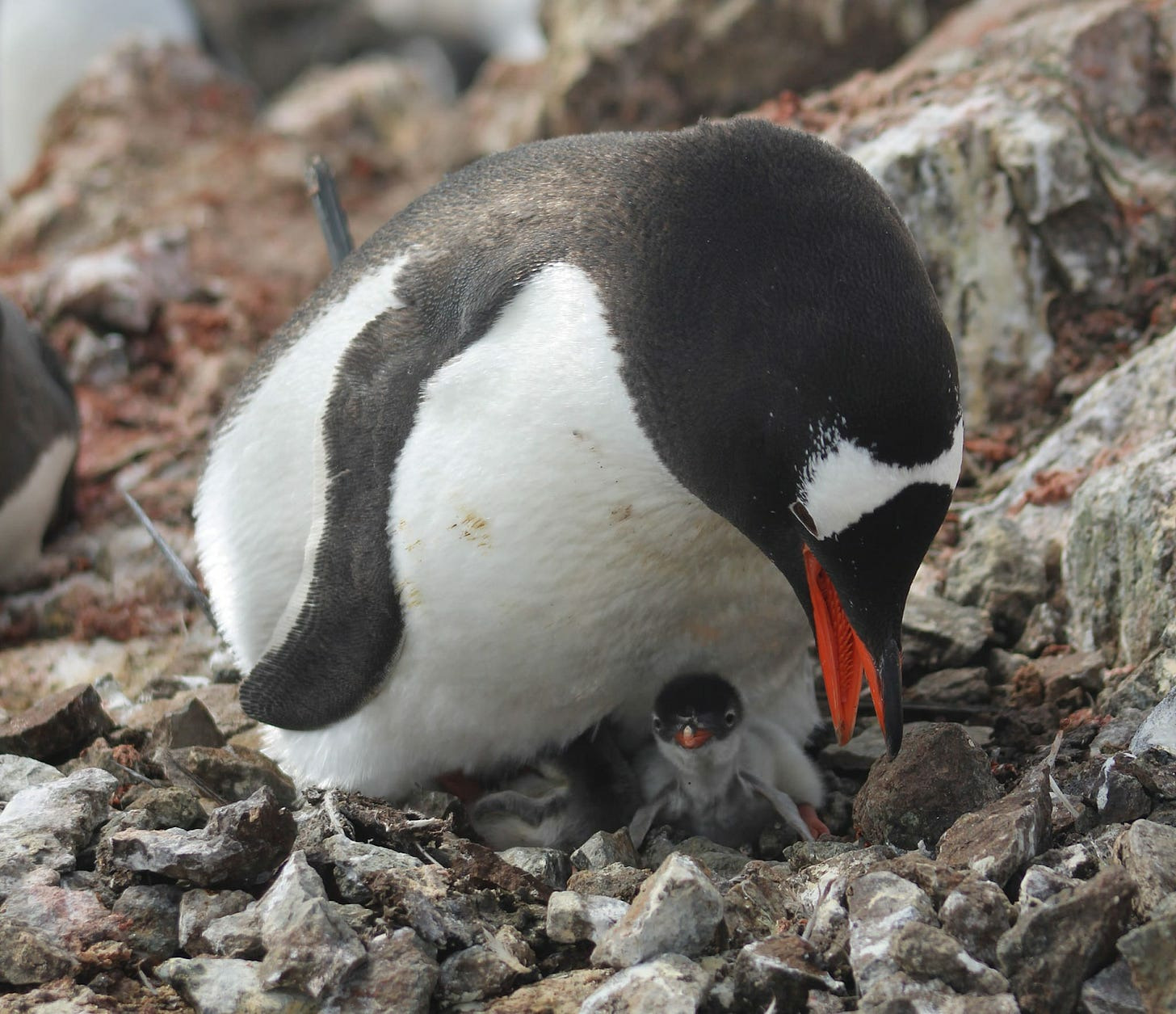-
Slag Heaps Have Eyes: From Secret Operative to Frontline Fighter
A native of Donbas and veteran of Ukraine’s fiercest battles, Artem Karyakin, better known by his nom de guerre, Skhidnyi, offers his firsthand view from the front lines of the war. For years, he operated in secrecy as a spotter for Ukrainian intelligence deep inside occupied territory. When the full-scale invasion began, he joined the ranks of the Ukrainian forces and has since fought without pause - from the defense of Kyiv to the grinding battle for Bakhmut and the incursion in Kursk.
In this special interview, Artem Karyakin traces the origins of the Russian occupation in Donbas, weighs the prospects for reintegration of lost regions, and recounts what the battle for Kursk truly looked like on the ground. To continue our efforts to document this war and the experiences and opinions of participants at this historic moment, we are publishing the full interview
1. Frontelligence Insight (hereafter FI): You are originally from Donbas and witnessed the unfolding of Russian aggression in the region. How exactly did it happen, and what were you doing in 2014?
Artem “Skhidnyi” Karyakin (hereafter - A): It’s important to note that the Russians began preparing for the seizure of Donbas well before 2014. This was especially evident to us—the residents of the region. For example, in my hometown of Kadiivka (formerly Stakhanov) in Luhansk Oblast, a certain “Don Cossack” organization appeared in the early 2000s. It consisted of marginal figures dressed in red Cossack hats and carrying whips. It looked strange, as our city had always been known for its mining industry and had no historical connection to the Don Cossacks.
This organization attracted people with chauvinistic views, fanatically devoted to the idea of reviving the USSR and uniting the "Slavic peoples." For instance, in 2012, a march commemorating the Ukrainian Insurgent Army was held in our city, in which I also participated. The march was disrupted when we were attacked by the same Don Cossack group, along with paid activists from the “Party of Regions.” Even back then, these “Cossacks” were confiscating our Ukrainian flags. That moment was very telling.
By 2014, the same “Cossacks” in red hats were seizing government buildings in our city - only now they were armed and operating under Russian flags. Many of them weren’t even born in our city - they came from the Russian Federation, as did some of those who helped them seize power by force in the spring of 2014.
We — the pro-Ukrainian residents of the city — were organizing events in support of Ukrainian unity at that time. Our first event was a memorial rally honoring the “Heavenly Hundred” (Editor’s note: The "Heavenly Hundred" refers to those who were killed during the 2014 protests against the Yanukovych regime in Ukraine). That was in late February 2014. Later, we held car rallies for Ukrainian unity, events on the birthday of Taras Shevchenko, and actively distributed pro-Ukrainian leaflets and stickers around the city, and painted Ukrainian flags.
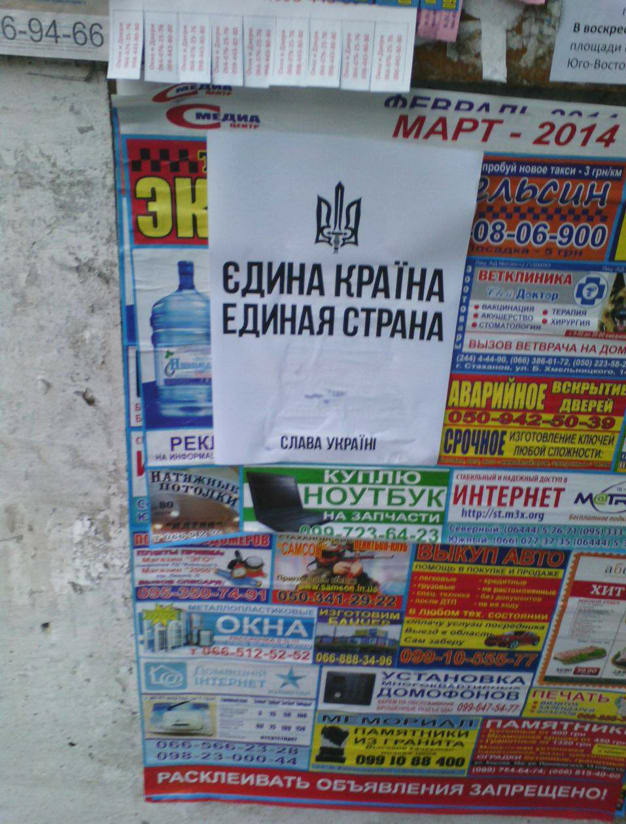
Pro-Ukrainian flyer titled "United Country" pinned to a public notice board, March 2014. Photo shared by Artem “Skhidnyi.” All our activities in the spring of 2014 were dangerous, as there were already armed Russians and local pro-Russian militants in the city.
The point of no return came in late spring 2014, when two young guys — still in school — put up a Ukrainian flag on a slag heap in the center of town. They were fired upon with a handgun for doing so. After that, many pro-Ukrainian residents began leaving the city, as it had become clear that they could simply be killed for their love of Ukraine.
2. FI: What happened to the pro-Ukrainian activists? Are there still people who maintain a pro-Ukrainian stance under occupation?A: I remained in my occupied city until the end of 2021, as did many others who loved Ukraine but, for obvious reasons, could not express it publicly. Today, the situation has worsened for those who support Ukraine in the Russian-occupied cities.
There are still many such people, but they are forced to live in fear, expecting to be arrested at any moment. Russian security services have dedicated significant resources to identifying and detaining pro-Ukrainian residents in the occupied territories. There are constant filtration procedures and ongoing inspections. Special attention is given to public sector workers and even to children. For example, in schools, there are mandatory checks of students’ mobile phones to look for subscriptions to Ukrainian media or messages expressing pro-Ukrainian views.
To love Ukraine under Russian occupation is already an act of courage.
Nevertheless, even today, a large number of true Ukrainians remain in the occupied territories: people who, risking their lives daily, help us in the fight against Russia by sharing intelligence, carrying out sabotage, and participating in other acts of resistance against the Russian army. This is true heroism and further proof that this land is rightfully Ukrainian.
3. FI: You continued to support Ukraine even when your city was already under occupation. What exactly did your activities involve?A: In July 2014, while already living under occupation, I created my first Twitter account. The goal was to shed light on the situation in the occupied territories from the perspective of a pro-Ukrainian resident who hadn’t left their home. At the time, neither people in Ukraine nor the rest of the world fully understood what was actually happening. Many believed that all the locals who had stayed supported Russia. I wanted to show the world that our city was occupied by Russia, and that there were still Ukrainians there who were not happy about it and were waiting for the Ukrainian army.
In addition to general updates, I also posted information about the locations of Russian troops in my city. These were public tweets, sometimes with maps marking where Russian military equipment was stationed. In the fall of 2014, I was contacted via direct message on Twitter by representatives of Ukrainian intelligence services as well as acquaintances from the Ukrainian army. They explained to me that it was better to share intelligence privately rather than posting it publicly on Twitter.
Since then, I began secretly passing on various types of information to the Ukrainian army and intelligence services - details about the movements, positions, and firing points of Russian forces in my city and surrounding occupied areas. Over the years, this also came to include information about factories and enterprises operating under Russian control, the socio-political climate under occupation, local sentiment, and data on collaborators - those who had joined the Russian side in combat or taken positions in the Russian-controlled security services.
4. FI: In 2021, you moved to Ukrainian-controlled territory, and the full-scale invasion began the following year. How did you join the Armed Forces, and what was your first battle?A: From the very first days of Russia’s full-scale invasion, I began looking for a unit where I could fight against Russia. The early days of the big war were chaotic—there was disorganization and confusion everywhere. I was living in Kyiv, and in one of the first days of March, I simply approached some guys with rifles and offered my help. That very same day, I was already standing night watch with Kalashnikov's hand-held machine gun in my hands.
It was one of the Territorial Defense Force units. We took up a defensive position on the outskirts of Kyiv, on the Bucha-Irpin side. In the summer of 2022, I joined the fighters of the 8th Regiment of the Special Operations Forces, where my friend was already serving and had invited me to join his group.
My first combat deployment was in August 2022 in Bakhmut, which at that point was already under assault by Russian forces, including Wagner PMC fighters. Shortly after Bakhmut, we took part in the liberation and clearing of the city of Lyman, in Donetsk Oblast. For me and many of my fellow soldiers, it was our first experience liberating our native land - a moment we will remember forever.
5. FI: You’ve taken part in important operations - both in Ukraine and on Russian territory, specifically in the Kursk region. Did you notice any significant differences between combat operations in Ukraine and in Kursk?
A: The Kursk operation was unique in every sense and differed from my past experiences in Ukraine in many ways. It was in the Kursk region that I first encountered the concept of maneuver warfare, and I can say that, personally, combat along a clear front line is easier for me.
It was also in Kursk where we first faced FPV drones connected via fiber optics and a new Russian tactic—using specialized FPV drone teams to strike our logistics routes from as far as 10–15 km deep. This tactic is now widely used by Russian forces along nearly every front.
In this operation, we also faced the enemy’s best FPV crews, all concentrated in one relatively small sector. These teams had been withdrawn from other areas and redeployed to Kursk specifically.
Another major difference was that, for the first time, we were acting as a “foreign army” in populated areas. Each soldier had their own reaction to that: for some, it felt like justified revenge; others felt a strong pull back toward our own land and a kind of inner resistance to advancing on foreign soil.
I count myself among the former. For me, it was an act of rightful retribution and a way to shift the war onto the aggressor’s territory. Yet I constantly reminded myself that I didn’t want to behave like the Russians did in my hometown. On Russian territory, I acted very differently than they had in ours. To every civilian I encountered in the Kursk region, I explained why we were there, how it all began, and that we simply want to liberate our own cities - not seize theirs.
The Kursk operation was very well planned and executed at the outset, but unfortunately was marred by a series of key mistakes and issues at various levels. These mistakes must be carefully analyzed so they are never repeated. I sincerely hope this experience proves useful in the future—it was unique in many respects.
Regardless, everyone who took part in that operation became part of history. We shattered the myth of the invincibility of a nuclear power and the so-called greatness of the Russian army. We drew significant enemy forces away, slowing their advance on our territory. And we were also the ones who fought against the armies of two different totalitarian states. The experience of facing North Korean forces is also something that sets this apart from the war in Ukraine—even though their tactics in Kursk didn’t differ much from what Wagner used in Bakhmut.
6. FI: Assuming that Russia eventually loses control over Donbas - how do you envision the process of reintegrating these territories? How deeply has Russian propaganda taken root there over the years?A: The most important thing is to drive the Russians out of our land. And with Ukrainians, just like us, we’ll quickly find common ground.
The main issue with those who fell under the influence of Russian propaganda during the occupation is that they know very little about the rest of Ukraine. Many have never been to other regions and know nothing about them. Everything they do know about Ukraine comes from what they’ve seen on Russian TV channels.
Another problem is that Russia created conditions in which every second family in occupied Donbas has lost a relative in the war. This is a direct result of the forced mobilization of men from the occupied territories into the Russian army.
But you have to understand — Donbas, especially the part that’s been under occupation since 2014, is a region where people generally lack any strong civic engagement or passion. Their opinions and actions are shaped entirely by the environment they live in.
If Ukraine returns to these territories, people will quickly adapt to new rules and new flags flying over their homes. And soon, they will realize that life under Ukraine is freer and more breathable. Without the presence of Russian troops, these people would never have fought for the Russian flag. I know them — I lived among them for most of my life.
Even now, many of them no longer see Russia as something positive. After living under the Russian flag long enough, they’ve come to realize that there’s little good there, and that the sacrifices they were forced to make for that flag were not worth it.
7. FI: When the war ends, what do you see your life looking like? Do you have any dreams or plans for peacetime?
A: The most important thing is for the war to end with our victory. We must preserve Ukraine and bring back our land and our people. I’m turning 28 this year, and I’ve spent 11 of those years living through war — it’s hard to imagine myself without it now.
But of course, I have a personal dream as well: to start a family of my own. During the years of occupation, I lost my parents and my grandmother, and since then, the feeling of loneliness has never left me. My dream is a family… my children, who will never know what war is.
============================================================================
Artem “Skhidnyi” Karyakin, in an exclusive interview with Frontelligence Insight. You can follow him on the X platform for firsthand updates from the front.This Substack is reader-supported. To receive new posts and support my work, consider becoming a free or paid subscriber.
-
Investing in wartime Ukraine requires ‘nuanced understanding of risk’ but is worth it, says head of world’s largest business organization
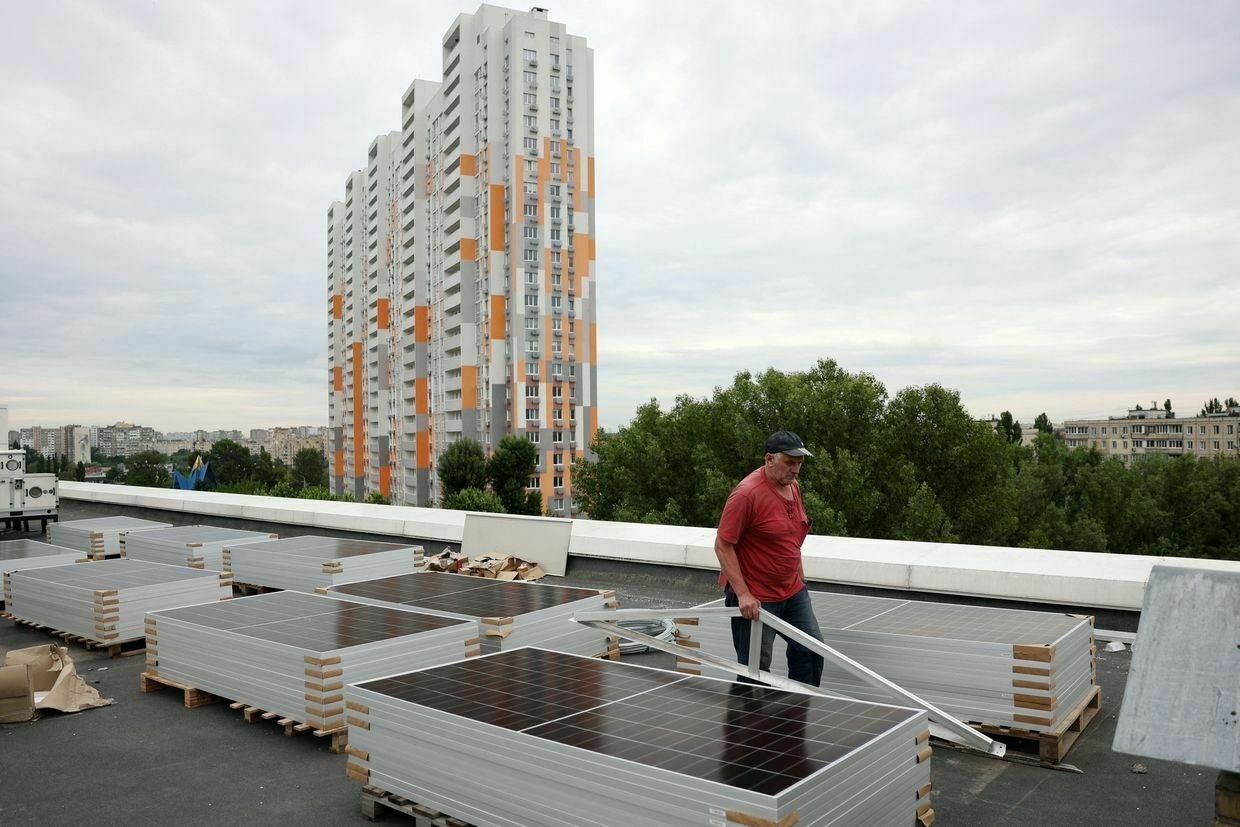
When John Denton first visited Ukraine weeks into Russia’s full-scale invasion, he knew that for the country to survive, businesses needed to stay alive.
Denton is the secretary general of the world’s largest business organization, the International Chamber of Commerce. Active in 170 countries, the organization enables $17.5 trillion worth of economic activity every year, accounting for 22% of the world’s gross domestic product (GDP).
Denton has been a vocal supporter of Ukraine’s businesses and the country’s economic recovery, which is crawling back from the massive 29.1% fall in 2022. The International Chamber of Commerce will attend the upcoming Ukraine Recovery Conference (URC) in Rome on July 10-11, alongside governments and major players in the global private sector.
In a sit-down interview at the Kyiv School of Economics (KSE) on June 12, Denton told the Kyiv Independent how the International Chamber of Commerce has supported businesses in Ukraine, how investors can mitigate risks, and why doing business in Ukraine is worth it despite the wartime challenges.
“There needs to be a more nuanced understanding of risk in Ukraine. It’s not one risk quota for the whole of the country. It helps people understand that there are investable opportunities,” Denton said.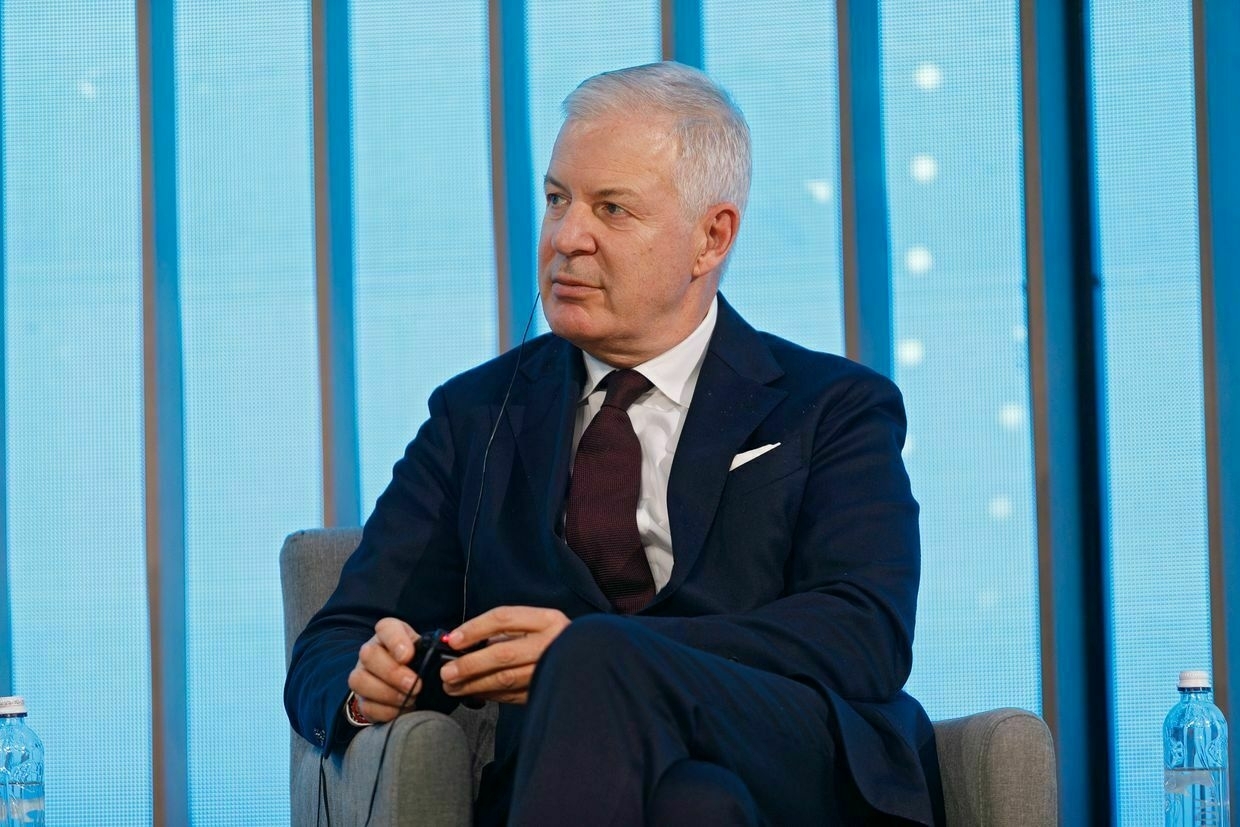
Secretary General of the International Chamber of Commerce (ICC) John Denton attends the “Ukraine and Europe: Toward a Common Future” panel at the Kyiv International Economic Forum in Kyiv, Ukraine, on Nov. 7, 2024. (Ukrinform / NurPhoto via Getty Images) The International Chamber of Commerce has been active in supporting Ukraine’s economic front in partnership with the Ukrainian Chambers of Commerce. This includes the Center of Entrepreneurship, which supports small and medium-sized businesses (SMEs) as well as refugees.
Denton believes Ukraine’s recovery needs a strong private sector and access to global markets. To help build up trust and encourage foreign investors, he announced that the International Chamber of Commerce will cut arbitration costs for foreign investors involved in reconstruction-related disputes in Ukraine during his last trip to Ukraine in November 2024.
This interview has been edited for length and clarity.
Kyiv Independent: This is your fourth trip to Ukraine. What is your current assessment of Ukraine’s business climate?John Denton: The reality is challenging, but Ukraine is not a monolith. There are different opportunities. I drove from Warsaw through western Ukraine, and you can sense that there’s a level of vibrancy in the economy there.
The more challenged regions need focus. It’s hard to attract opportunities and to keep people. At the same time, people are there, paying taxes, keeping businesses running, even in complex places. They need support and want visibility.
It’s going to be much harder to rebuild Ukraine if the economy is not functioning. We’ve always seen the private sector and the functioning of the economy here as the economic front. One dimension is just keeping tax flows moving and businesses running. The other is morale. It’s devastating if you have a collapsed economy plus military challenges.
Subscribe to the NewsletterUkraine Business Roundup<span data-sanitized-id="ukraine-business-roundup-info" data-sanitized-class="ukraineBusinessRoundup__info"></span> <button data-sanitized-id="ukraine-business-roundup-subscribe-btn" data-sanitized-class="ukraineBusinessRoundup__form_button"> <span data-sanitized-class="ukraineBusinessRoundup__form_label">Subscribe</span> </button> </div>The Kyiv Independent: What would you say to investors who are standing by on the sidelines, waiting for the war to end before putting their money into Ukraine?
John Denton: They've got to make commercial decisions in the best interests. You have to make certain your risk appetite matches the risk that's available.
There's a different level of risk for the allocation of capital in this place. Existing businesses here tend to understand that a little better. The investment you're seeing in Ukraine is coming from existing businesses that understand the terrain. They're reinvesting in the economy, and those investments are often very successful.
You can't completely de-risk, but you can take away some of the extraordinary risks.
The danger with waiting too long is do you then have the relationships in place to participate in the rebuild? That's going to be one of the challenges.
There's a lot more that can be done to facilitate de-risking. You can't completely de-risk, but you can take away some of the extraordinary risks.
We can help export agencies understand that their participation is really important to allow companies to close deals here. Some of them can only provide coverage up to 97%. That (missing) 3% matters. At the URC, we're helping export agencies understand this and problem solve risk coverage.
Ukraine’s long-awaited weapons tech investment boom is finally kicking offUkrainian weapons startups are finally seeing an inflow of funds from Western investors who have long been intrigued by the Ukraine’s defense tech sector but have so far kept their money out of the war-torn country. Financial analysis firm Pitchbook provided the Kyiv Independent with data showing a four-fold riseThe Kyiv IndependentKollen Post
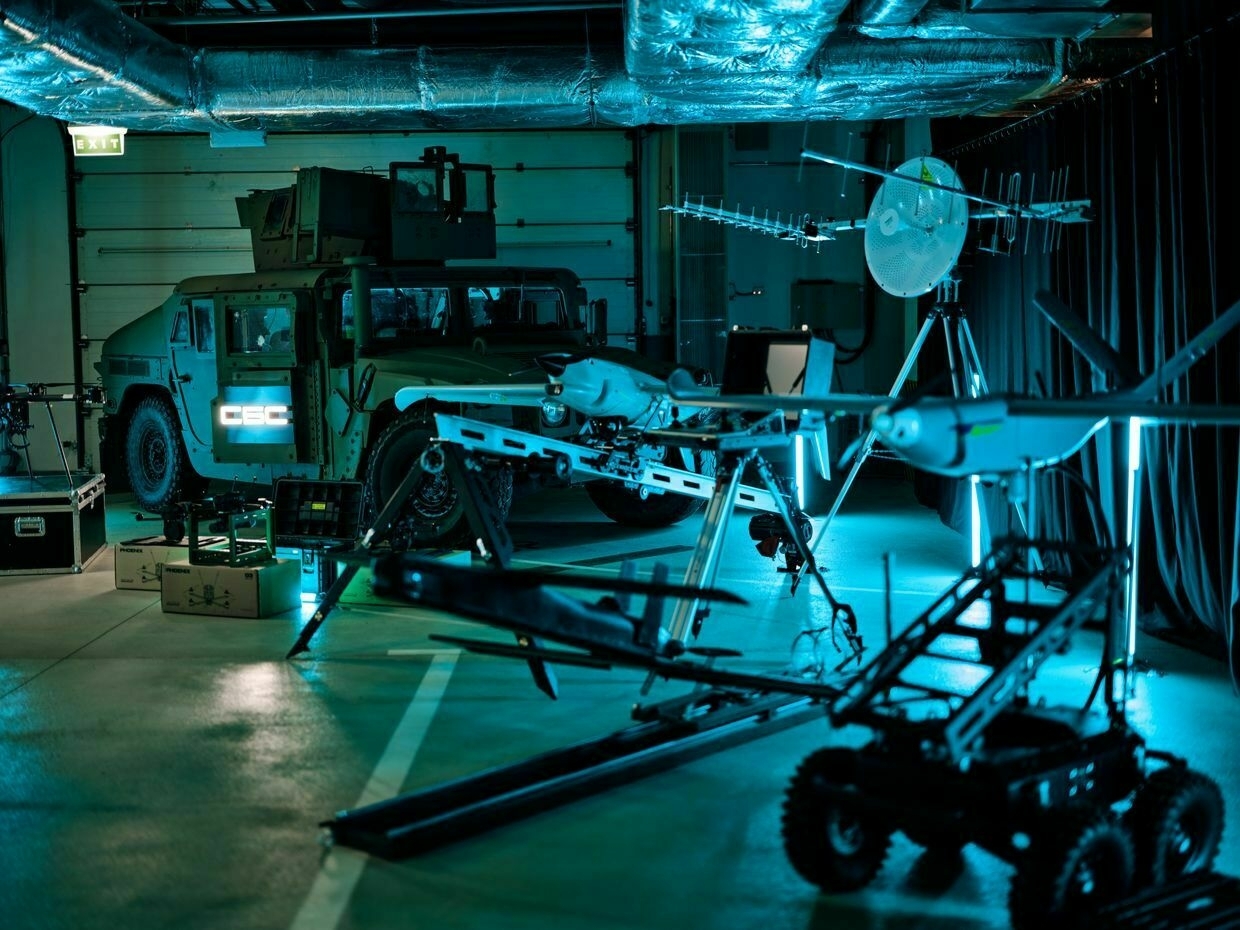
Kyiv Independent: What are the barriers to foreign and domestic investment in Ukraine, and how are you helping break those down?
John Denton: There's just the reality that there's a war going on. It inhibits one's decision-making, but it doesn't mean you don't make the decision.
The other is that there are issues with the application of the rule of law here. We've come up with a solution which I know the Ukrainian government is very happy with – if people are worried that that's an inhibitor, we will use the International Chamber of Commerce Court of Arbitration. You can be 100% sure of the independence.There's still a perception of corruption. Many say the country is different than five years ago or before the war. That's true. But sentiment clouds upfront decision-making.
The other thing is, do we actually have clear investment frameworks? Has the government articulated key priorities? Do you want to attract investment only into the most complex areas of Ukraine, or are you neutral as to where it is? There is a risk of mixed messages.
I think the government and the private sector here are working on all those areas. We're seeing better presentation and understanding of projects capable of attracting capital.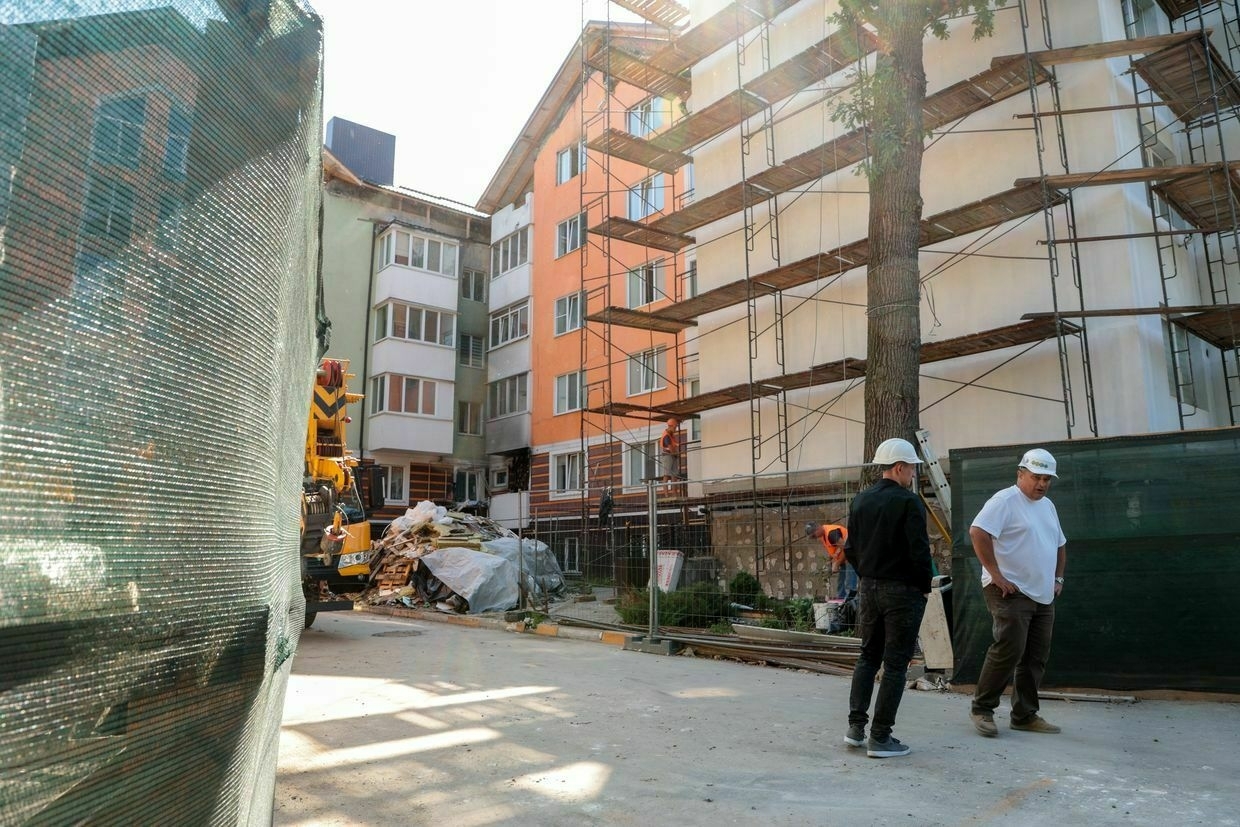
Ukrainian authorities restore residential buildings destroyed by Russian forces in the suburbs of Kyiv, Ukraine, on Aug. 1, 2023. (Sergii Kharchenko / NurPhoto via Getty Images) Kyiv Independent: Have we seen any results yet from the decreased arbitration costs?
John Denton: It’s too early to tell. There's certainly a lot of interest in it. It's creating an ecosystem of confidence around settling disputes.
Kyiv Independent: The Ukraine Recovery Conference is taking place in Rome next month. Is reconstruction being taken seriously despite there being no end to the war in sight? What can we expect from the International Chamber of Commerce at the conference?
John Denton: There is increasing interest from the private sector about how to manage the risks that will be involved in the reconstruction of Ukraine. And that's why we're involved.
There is a particular challenge with export finance that needs to be thought through. We will be using the URC as a great convening space to do that. The other is more broadly around identifying the inhibitors to private sector engagement in this process and coming up with a roadmap to actually remove those barriers.
The URC creates space for these discussions. We hope this starts more aggressively, not just on future reconstruction, but reconstruction now. To rebuild on a broken system is much harder than if we have a functioning private sector and economy now.Note from the author:
Hi, it’s Dominic, thank you for reading this story. Investment and the role of the private sector in rebuilding Ukraine is going to be a hot topic at the upcoming Ukraine Recovery Conference in Rome this July. For now, many investors are holding back their money, but John Denton makes a good point that it's important to invest now to keep the economy alive. To help us keep you up to date with all the latest news from Ukraine, please consider becoming a member.
Ukraine must look beyond the EU for its agricultural futureThe end of the European Union’s tariff-free trade preferences for Ukrainian agricultural products is more than just a policy change, it’s a wake-up call. For years, the EU has served as the largest and most reliable market for Ukraine’s agricultural exports. But as Brussels rolls back preferentialThe Kyiv IndependentMark Iwashko
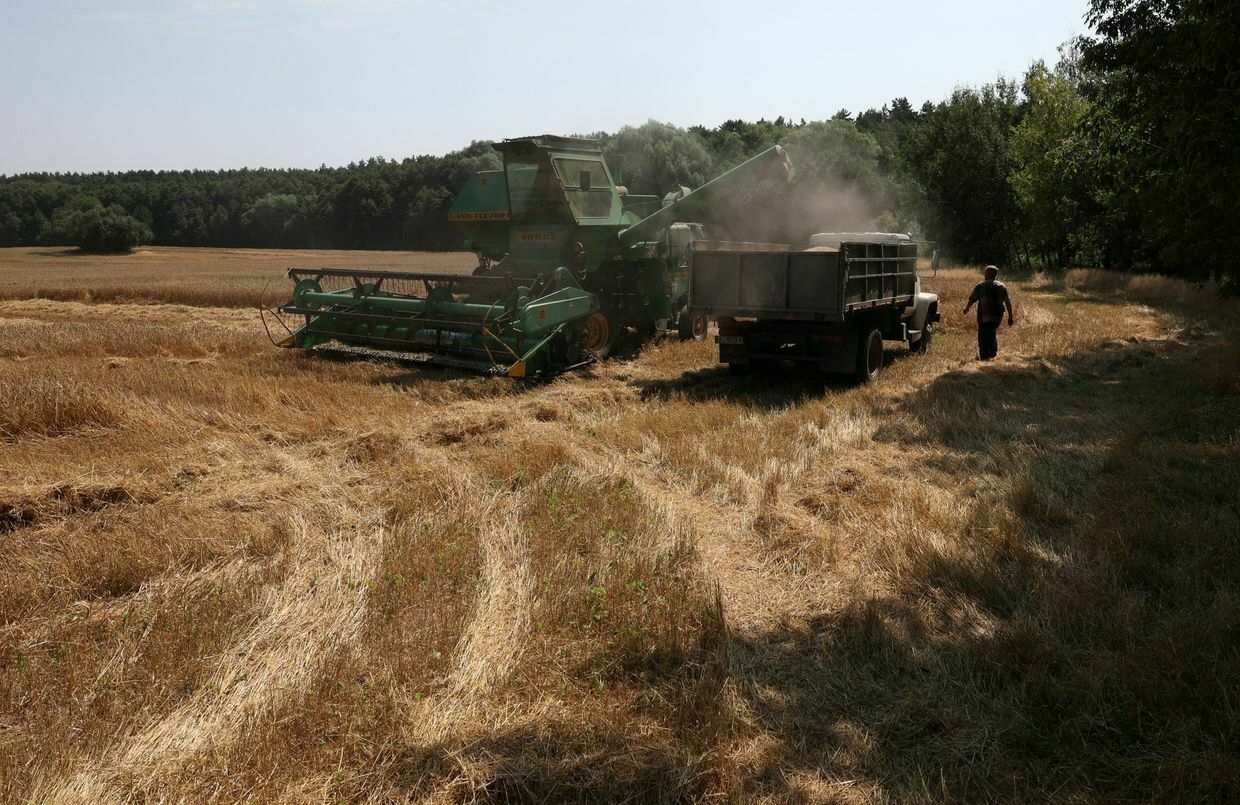
US opposes lowering G7 cap on Russian oil, Bloomberg reports
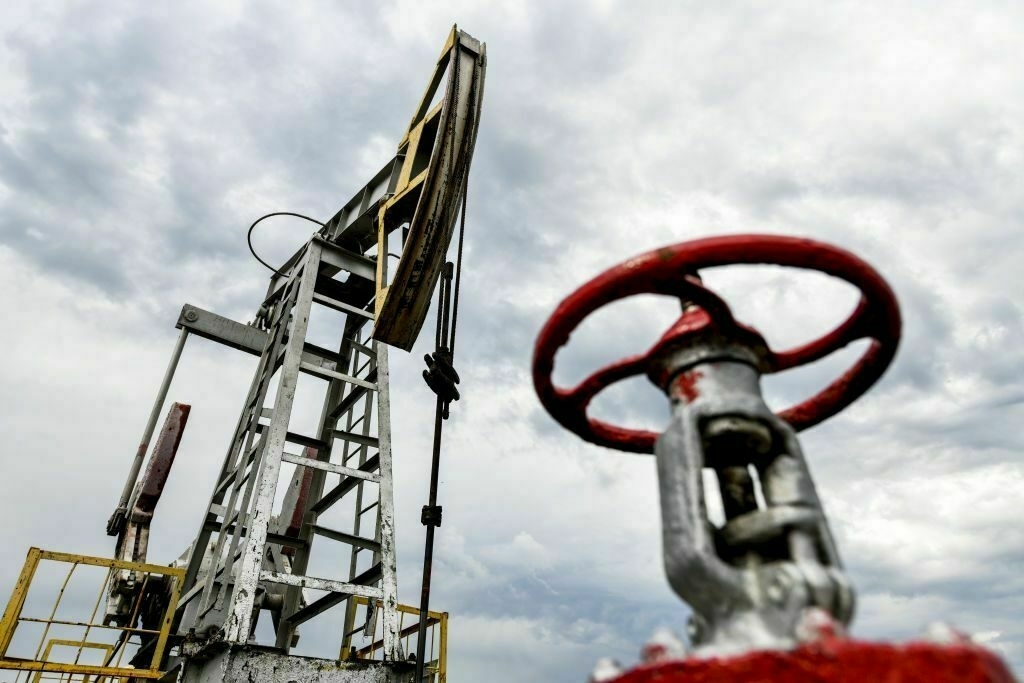
The United States is opposing a proposal by other Group of Seven nations to lower the price cap on Russian oil, Bloomberg reported on June 13.
Citing unnamed sources, Bloomberg said the U.S. remains opposed to reducing the cap from $60 to $45 per barrel – a position it first took earlier this year when Treasury Secretary Scott Bessent declined to support a similar effort.
The price cap, introduced in December 2022 as a measure to limit the Kremlin’s ability to finance its war against Ukraine, prohibits Western companies from shipping, insuring, or otherwise servicing Russian oil sold above $60 per barrel.
Despite U.S. resistance, the European Union and United Kingdom – backed by other European G7 countries and Canada – have said they are prepared to move forward with the proposal, even without Washington’s endorsement.
One source told Bloomberg that the EU and U.K. could explore lowering the cap without the U.S., as most of Russia’s oil is transported in European waters. However, a unified G7 agreement would carry greater impact if it could be enforced by the U.S.
The price cap debate has become more urgent as oil prices, which had fallen below the $60 cap in recent months, surged following Israel’s strikes against Iran in the past 24 hours.
G7 leaders will revisit the price cap discussion during the upcoming summit, hosted by Canada from June 15-17 in Kananaskis County, Alberta.
The summit agenda will also include topics such as support for Ukraine in the Russian war, global economic stability, digital transformation, and climate change.
The G7 currently includes Canada, France, Germany, Italy, Japan, the United Kingdom, and the United States. The European Union is also represented in the group.
Israel-Iran war could provide economic boost Russia needs to continue fight against UkraineIsrael’s “preemptive” strikes against Iran targeting the country’s nuclear program and killing top military officials could have far-reaching implications for Ukraine and could boost Russia’s ability to continue its full-scale invasion, experts have told the Kyiv Independent. Iran has been one of Russia’s staunchest allies throughout the war, providing thousandsThe Kyiv IndependentChris York
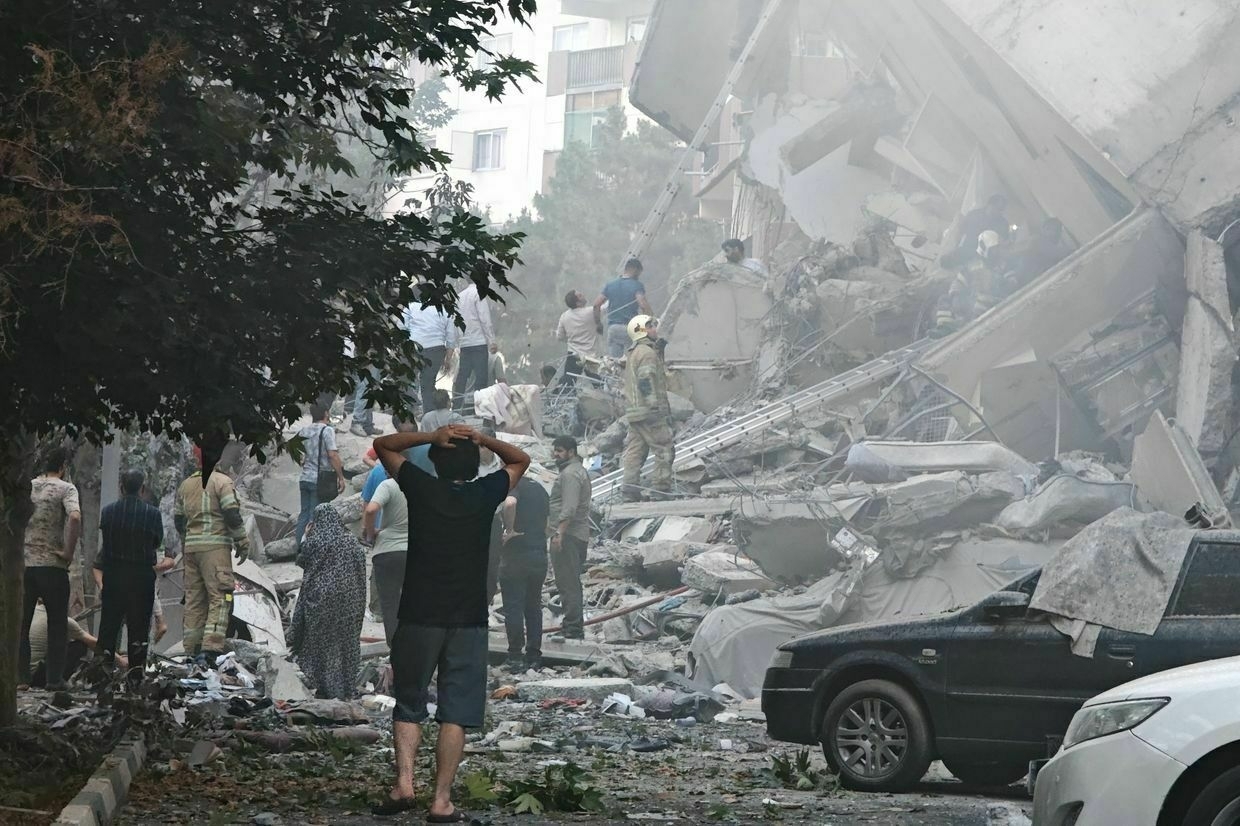
G7 ready to lower Russian oil price cap without US support, Reuters reports
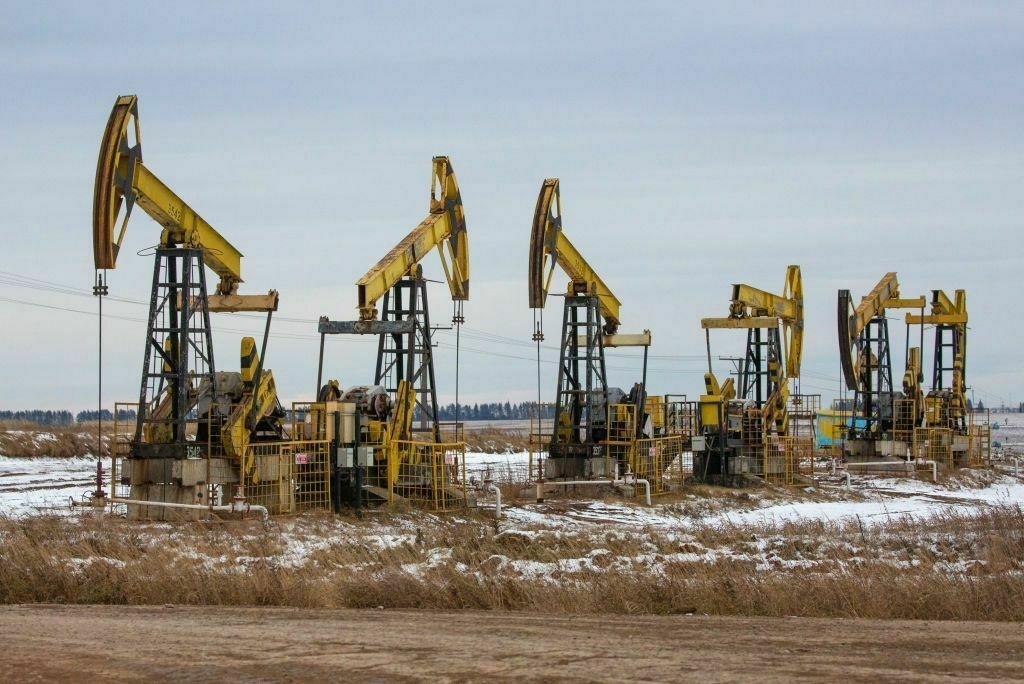
Most Group of Seven (G7) nations are prepared to lower the Russian oil price cap from $60 to $45 a barrel even without support from the United States, Reuters reported on June 12, citing unnamed sources familiar with the matter.
According to Reuters, the European Union and United Kingdom, backed by other European G7 countries and Canada, are ready to lead the charge in lowering the Russian oil price cap – even if U.S. President Donald Trump opts out.
The price cap, which bans Western companies from shipping, insuring, or otherwise servicing Russian oil sold above $60 per barrel, was first introduced in December 2022 as a measure to limit the Kremlin’s ability to finance its war against Ukraine.
The G7 had previously attempted to lower the Russian oil price cap; however, the proposal was dropped after U.S. Treasury Secretary Scott Bessent reportedly declined to support it.
It is unclear whether the U.S. will support the decision this time around. Japan’s position is also undecided.
Participating country leaders will revisit the price cap discussion at the upcoming G7 summit. Canada, which holds the G7 presidency this year, will host the summit on June 15-17 in Kananaskis County, located in the western province of Alberta.
The summit agenda will include topics such as support for Ukraine in the Russian war, global economic stability, digital transformation, and climate change.
President Volodymyr Zelensky is expected to attend the summit and seek a meeting with U.S. President Donald Trump.
EU could impose Russian oil price cap without US support, Kallas saysThe European Union can impose an additional price cap on Russian oil without U.S. support, EU High Representative Kaja Kallas said at the Brussels Forum on June 11.The Kyiv IndependentVolodymyr Ivanyshyn
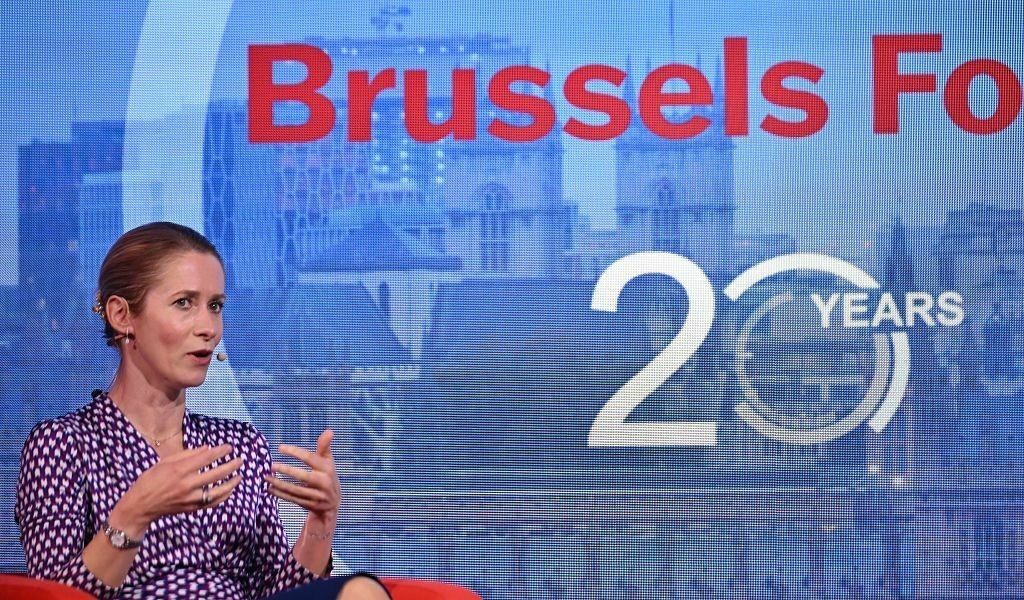
EU, Germany boost Ukraine's energy efficiency fund with 18 million euros
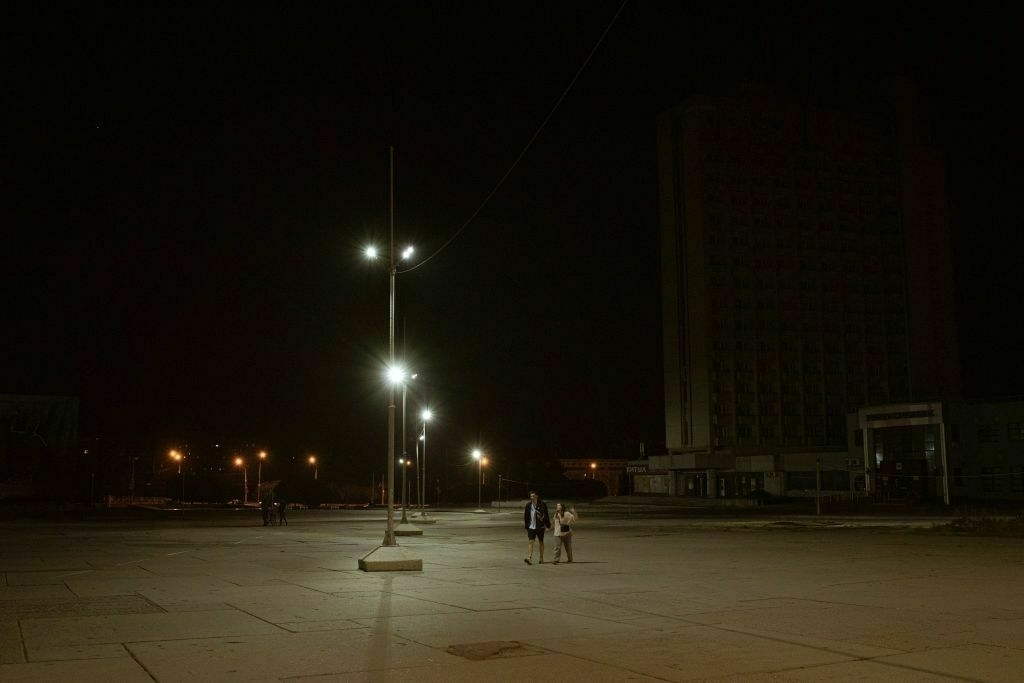
The EU and Germany have topped up Ukraine’s Energy Efficiency Fund (EEF) with an additional 18 million euros ($20.7 million) to expand their support for Ukraine’s energy independence and green recovery, the EU Delegation to Ukraine said on June 11.
The move was announced at the 10th meeting of the delegation’s Coordination Council in Kyiv.
The EU provided 13 million euros ($15 million) of the new funding, while Germany’s International Climate Initiative (IKI) provided 5 million euros ($5.7 million).The International Finance Corporation (IFC), the investment arm of the World Bank, will continue to manage the EEF’s trust fund.
The fund, established in 2019, is split into two programs: VidnovyDIM, which helps repair war-damaged homes, and EnergoDIM, which co-finances grants to cut energy consumption and costs by installing new insulation, windows, and heating systems.
“Today, when Russia is shelling Ukrainian homes almost every night, the VidnovyDIM Fund program helps families cover the costs of repairing walls, roofs, and windows so that they can return home safely and with dignity,” EU Ambassador to Ukraine Katarina Maternova said.
“In parallel, through the EnergoDIM program, we continue to support the thermal modernization of old buildings, which allows us to reduce energy consumption and monthly costs.”
Since 2021, the fund has grown from 90 projects to 1,500 projects, in cooperation with homeowners’ associations, and helped Ukraine save 300 kilowatts per hour in energy consumption– as much as the city of Chernivtsi consumes. The EEF has helped over 217,000 families modernize and repair their homes, of which half were covered by the VidnovyDIM program.
The new financing will improve the efficiency of grants, raise the grant size to meet demand, and help more people under Ukraine’s environmentally sustainable “Build Back Better” principle. The grant limit should increase to more than 200,000 euros, said Ukraine’s Development of Communities and Territories First Deputy Minister Alena Shkrum.
The EFF will now be able to resume requests, which were paused due to the high number of applications. Around 10% of Ukraine’s housing stock has been damaged or destroyed, while much of the country’s heating system is from the Soviet era and inefficient, with apartments unable to control the heating in the winter.
Ukraine’s energy grid has been targeted relentlessly by Russian attacks, causing widespread energy instability across the country. At the same time, bills have increased for electricity and heating, frustrating citizens who have already taken a financial hit due to the war.
The fund has modernized homes and schools to become more energy efficient, which not only cuts costs but also retains warmth during blackouts, said the Shkrum. More Ukrainians are beginning to understand the importance of energy efficiency due to Russian attacks, “which is why the fund should continue functioning, reforming, and developing further,” she added.DTEK to build one of Europe’s largest energy storage facilities, company announcesUkraine’s largest private energy company DTEK secured a $72-million loan to build one of the largest battery energy storage complexes in Eastern Europe, the company said on June 3.The Kyiv IndependentDominic Culverwell
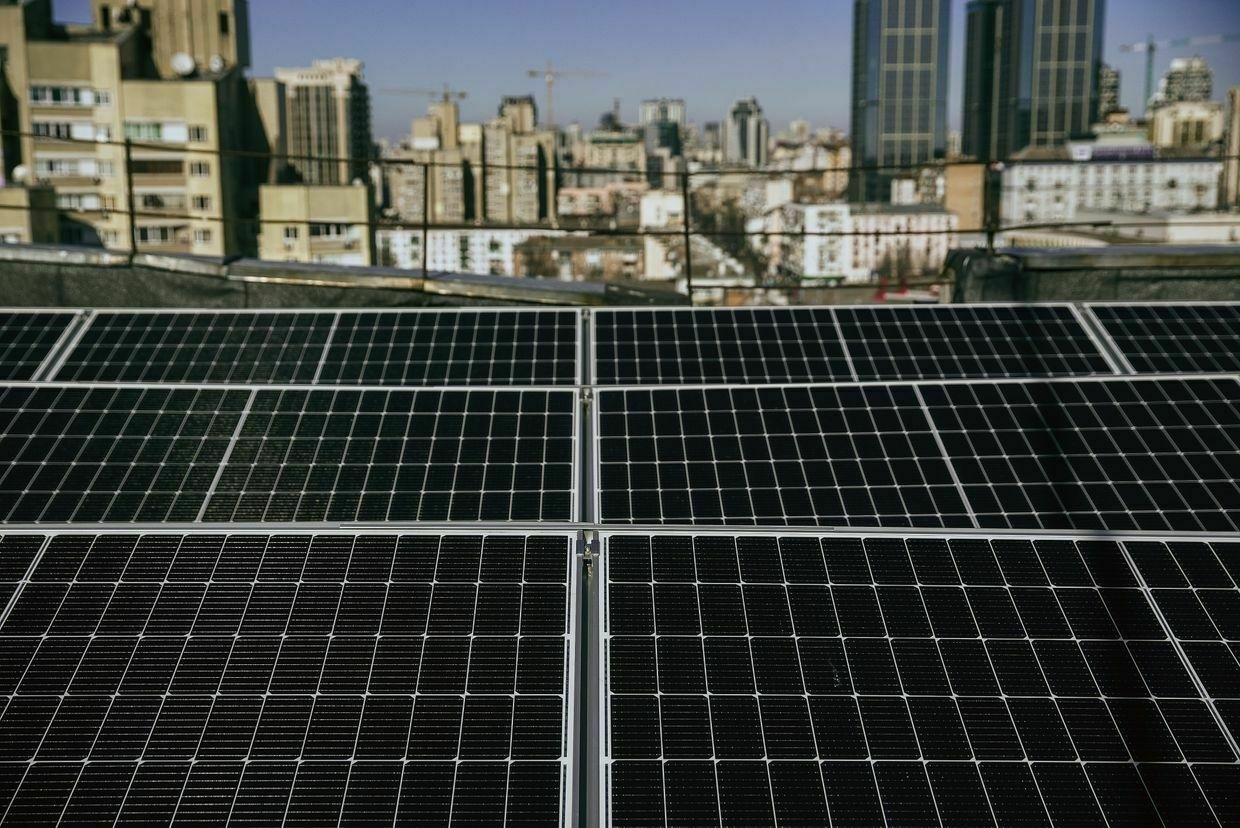
Exiled Russian scholar on why Dugin is no philosopher, and Russia no defender of ‘traditional values’
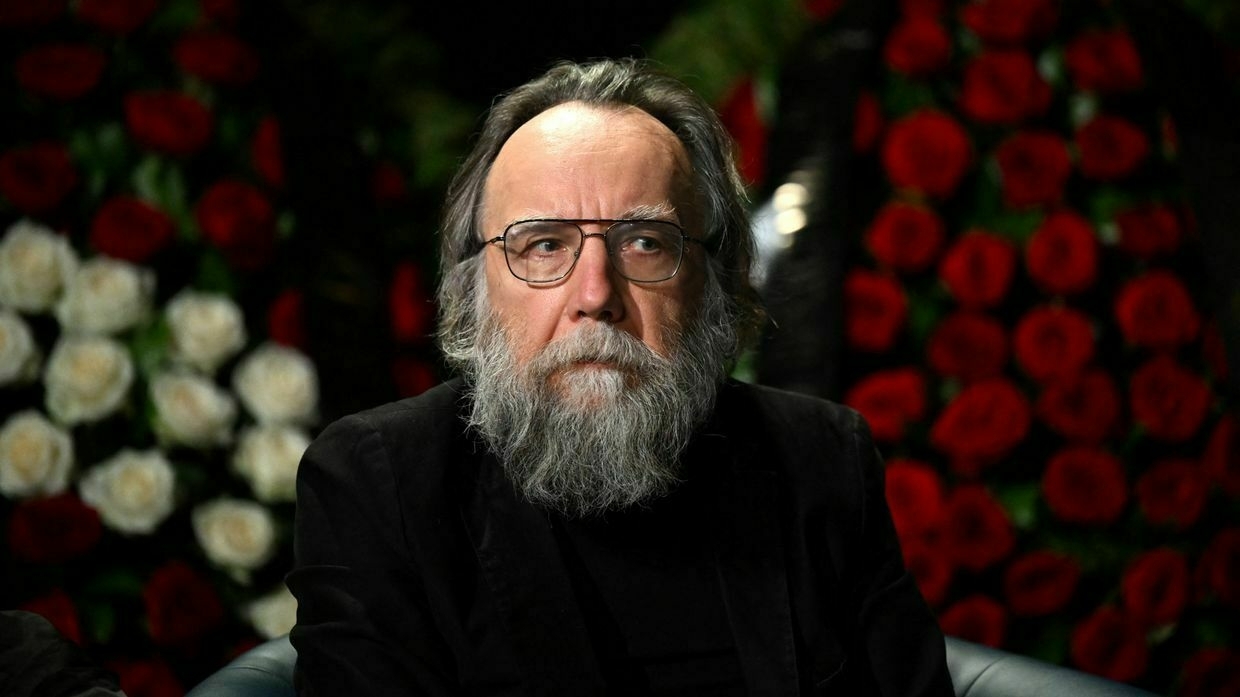
In recent years, the Kremlin has sought to cast Russia as a bastion of so-called traditional values, positioning itself in stark contrast to what it describes as the morally decaying West. Yet beneath this veneer, a more complex reality persists. As exiled Russian philosopher Alexey Zhavoronkov told the Kyiv Independent, “conservative rhetoric and concepts are employed to mask a different reality.”
Within the framework of traditional conservative thought, personal liberty is regarded as a foundational principle. But in today’s Russia, such freedom is markedly absent.
As Zhavoronkov observes, those advancing the narrative of a “conservative” Russia frequently do so less out of ideological conviction than opportunism — aligning themselves with the Kremlin to serve as de facto spokespeople for President Vladimir Putin’s regime while also enriching themselves.
Among those frequently cited as intellectual architects of the Kremlin’s “traditional values” worldview is Alexander Dugin, referred to in Western media as “Putin’s brain” — a title that belies the ambiguous and likely overstated nature of his actual influence.
Dugin, who has openly called for the genocide of Ukrainians and maintains a network aimed at exporting his ideology far and wide abroad, presents himself as a philosopher. But as exiled Zhavoronkov explained to the Kyiv Independent, Dugin’s work is marred by intellectual incoherence and lacks the philosophical depth required for serious consideration.
This interview has been edited for length and clarity.
The Kyiv Independent: Some right-wing contingents in the West claim that Russia is a last holdout for “traditional values.” Could you go into more detail about the image that Russia is trying to project versus what is really happening there?
Alexey Zhavoronkov: This concept of “traditional values” — and by that I mean the political use of the concept of traditional values — is very illustrative because there are hundreds of its interpretations in different documents and publications. If we look at official documents like Russian national development strategies, which offer lists of specific “traditional values,” most of these values are not strictly conservative. We see notions like individual freedom, or we see something more associated with the philosophy of enlightenment (like the idea of human dignity) — meaning that traditional values are more along the lines of liberal thought. There are also certain concepts, such as collectivism, that were carried over from the Soviet period.
Conservative values mentioned in Russian official documents are mostly centered around ‘traditional family’ — beyond that, there isn’t much. This serves as a good example of how conservative rhetoric and concepts — sometimes even borrowed from Western traditions, which are officially condemned in Russia — are employed to mask a different reality.
If we look at the conservative tradition in the U.S. and compare it to the Russian tradition, the differences are striking — they’re two entirely different worlds.
The Kyiv Independent: How so?
Alexey Zhavoronkov: The differences exist on many levels, including political practice. But if we start with the theoretical side, the Anglo-American conservative tradition has a long and deep history. It doesn’t begin as a reaction to the French Revolution (in the 18th century), but rather can be traced back to 15th- and 16th-century England. There’s a lot to examine when analyzing this tradition.
There was no major rupture in the American conservative tradition after World War II. In contrast, the Bolshevik Revolution (in 1917) in Russia effectively severed the continuity of the country’s conservative tradition. In the U.S., there have certainly been political crises within the conservative movement, but the development of the tradition was never interrupted. Moreover, in the U.S., after World War II, much of the conservative movement was defined by anti-communism. Overall, if we look at major themes and the political policies associated with them, there’s very little overlap between the Russian and American traditions.
Russia sees itself as having a unique role in the world — it believes it should save the world, but it will save it by means of destruction.
The Russian tradition faced multiple issues that differentiated it from the American tradition — which itself had internal problems, such as the split between neoconservatives and paleoconservatives since the 1970s. I’ll return to that later, because I think there are some similarities between American and Russian neoconservatives, though only at the level of the international political agenda.
As I mentioned, in Russia, we see a major interruption in the conservative tradition. There was certainly a conservative tradition before the revolution, though by the end of the 19th century, it was already in decline. It’s also quite telling that as soon as the Russian (imperial) government, under Emperor Alexander III, officially adopted conservative rhetoric, conservatism as an intellectual movement practically disappeared. The government wasn’t interested in serious programmatic works; it only needed slogans, which were mostly supplied by the official press.
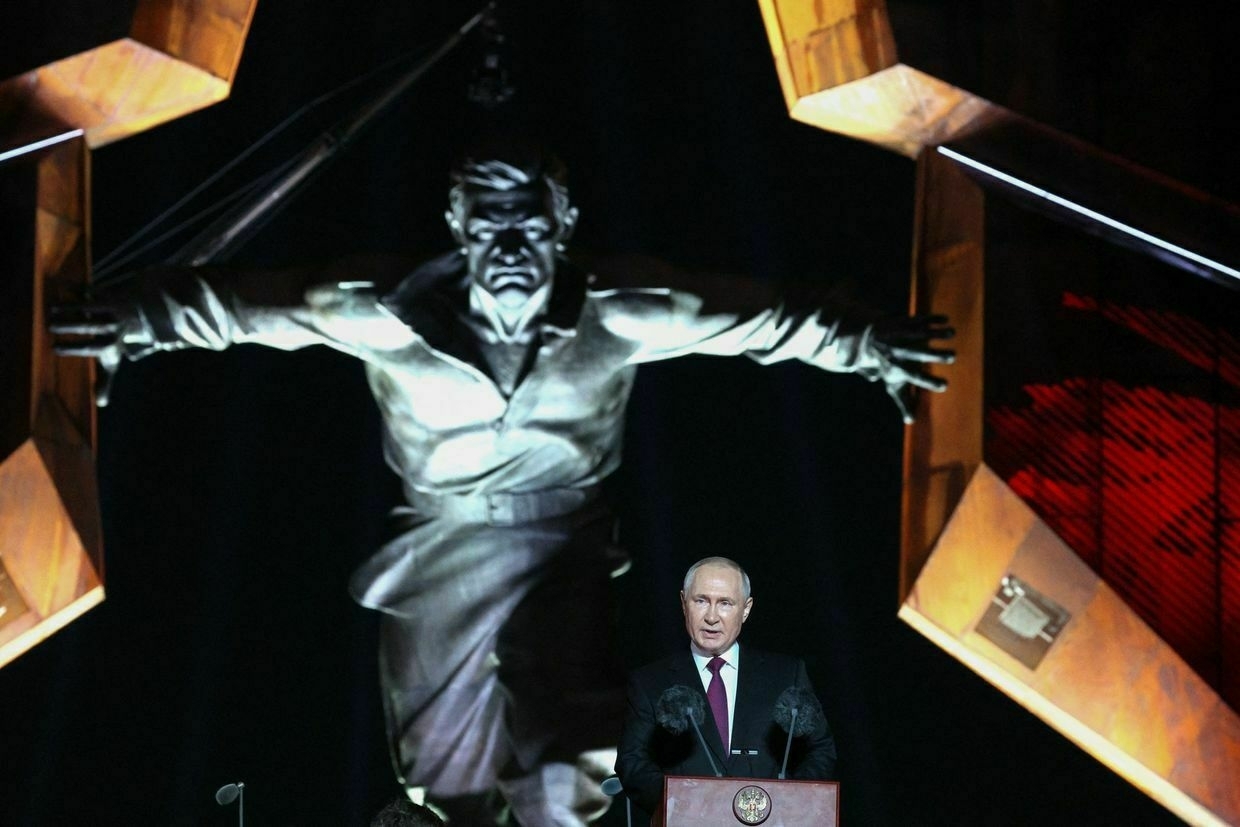
Russian President Vladimir Putin addresses the audience in Kursk, Russia, on Aug. 23, 2023. (Gavriil Grigorov/Pool/AFP via Getty Images) 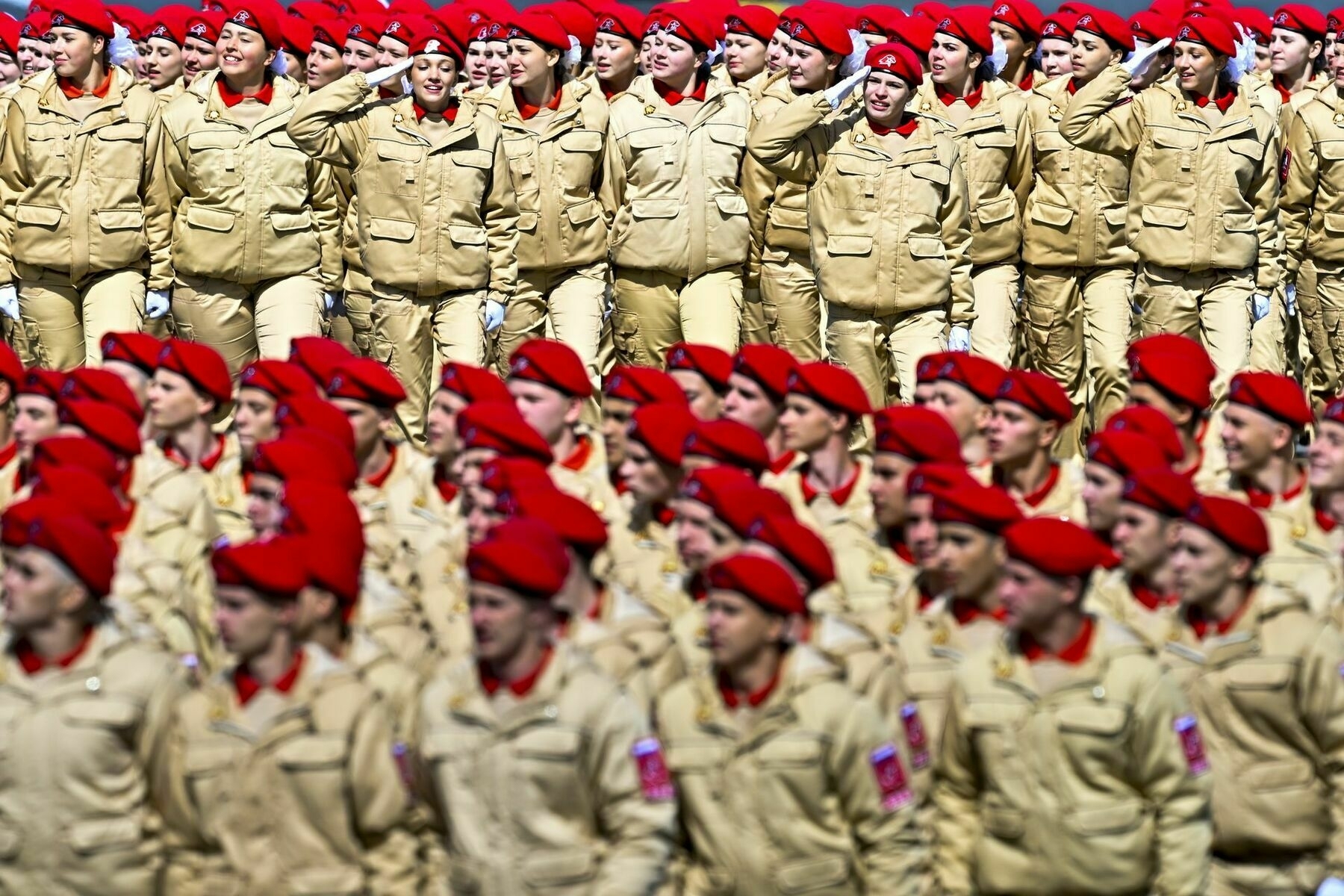
Young Army Cadets National Movement members march toward Red Square during the 80th anniversary celebrations of Victory Day in Moscow, Russia, on May 9, 2025. (Sefa Karacan/Anadolu via Getty Images) There were a plethora of newspapers and some journals that labeled themselves as conservative, but there were virtually no intellectual platforms for Russian conservatives. The golden era of Russian conservatism — associated with the Slavophile movement in the mid-19th century — was already long gone. It wasn’t revived later under Emperor Nicholas II, and then came the revolution. After that, there were only limited attempts to revitalize the conservative tradition during the Soviet period, by figures like Alexander Solzhenitsyn, for instance. There were also some more radical conservative, mostly Orthodox, movements during the Soviet period. But aside from a few collections of essays and Solzhenitsyn’s publications, there were no major works that could be considered significant intellectual manifestos. So we are left to piece together fragments from various texts — texts that are neither philosophical in nature nor structured as political programs.
I think the last truly meaningful intellectual exchange between Russian conservatives and Russian liberals was the debate between Solzhenitsyn and Andrei Sakharov in the 1970s and 1980s. Both of them had clearly defined (but incompatible) visions of Russia’s future.
Many aspects of that debate are either no longer relevant or problematic, such as Solzhenitsyn’s idea of the nation. But still, it was a genuine (direct and indirect) debate that highlighted fundamental differences in how each thinker envisioned Russia’s path forward over the coming century.
The Kyiv Independent: Why do you think the Russian government following the USSR’s collapse, chose the path of neoconservatism?
Alexey Zhavoronkov: I think if we return to the issue of tradition, it’s clear that there has been a break in its continuity. Contrary to what the Russian government suggests, this tradition has not been restored. Instead, the government is attempting something similar to what American anti-traditionalist neoconservatives aimed to do starting in the 1980s — namely, to formulate a global political agenda based primarily on the country's national interests rather than on international agreements and rules. These national interests are used to justify what I would describe as aggressive, even imperialist, policies aimed at establishing or maintaining dominance in various regions of the world.
Of course, the economic weight of a country like the U.S. is incomparably greater than that of Russia. Russia represents only a small fraction of the global economy and is now largely isolated from many international markets. Therefore, the Russian government had to come up with a different kind of justification for its imperial ambitions.
This justification has taken on a radical Orthodox form. This is where figures like Alexander Dugin come into play, along with many other ideologists who popularized the concept of “Katechon” — which has become one of the key notions in Russian politics today.
The Kyiv Independent: Could you explain what that is?
Alexey Zhavoronkov: This concept enforces the idea that Russia is the world’s sole and last protector against the Antichrist. Instead of American political and economic exceptionalism, which is manifested in (U.S. President Donald) Trump’s policies, Russia has its own form of exceptionalism, but with different pillars supporting the ideology. For the U.S., the pillar is economic dominance, as seen in Trump’s obsession with tariffs. For Russia, the pillar is spiritual or radical Orthodoxy, which contains strong elements of messianism. Russia sees itself as having a unique role in the world — it believes it should save the world, but it will save it by means of destruction. And to protect the world, Russia must be in a constant state of war with those who worship the Antichrist, namely with the ‘Collective West.’
The so-called ‘Collective West’ is another political concept actively used in Russian politics. The permanent state of war also means a permanent state of exception within Russia, because war serves as a perfect justification for almost any political action. In such a situation, established rules no longer apply. The government can always claim that it’s an exceptional circumstance.
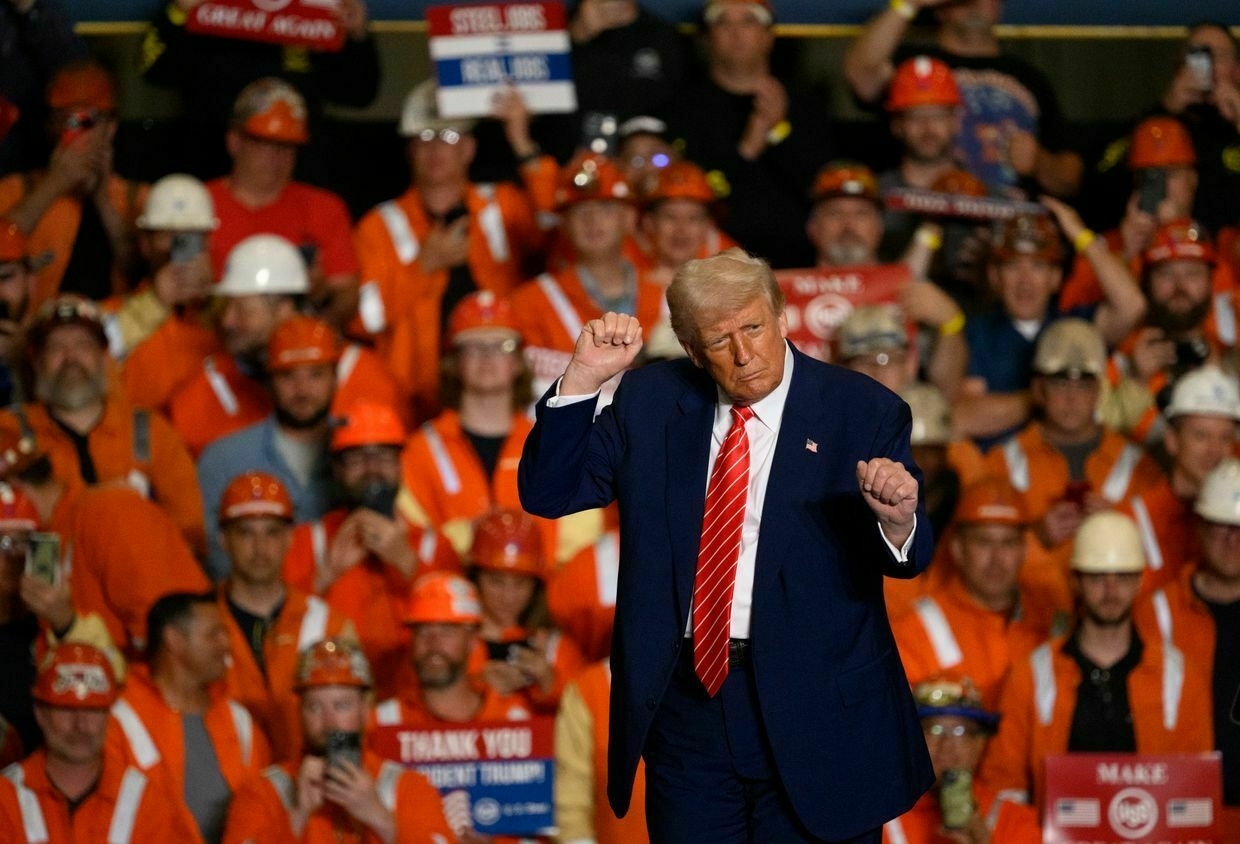
U.S. President Donald Trump speaks during a rally at the U.S. Steel-Irvin Works in West Mifflin, Pennsylvania, U.S. on May 30, 2025, after approving the U.S. Steel–Nippon Steel merger. (Jeff Swensen/Getty Images) The Kyiv Independent: You mentioned Alexander Dugin. Could you just go into who he is and how he came into prominence? In the West, they call him “Putin's brain.” But his connections to Putin are highly debated. Does he have any real influence in Russia or is it just an outward projection?
Alexey Zhavoronkov: Yes, Dugin is a really interesting figure from the perspective of how he's seen from the West. For a long time — even in Western political science — he was widely regarded as Putin’s favored ideologist, someone with direct access to him and the ability to advise him on key issues. This was, of course, not the case. And this still isn't the case today, although Dugin has gained significantly more favor in recent years for various reasons, one of which is the murder of his daughter.
I think Dugin is perhaps the most eclectic ideologist in Russia as of today. What he writes is mostly eclectic and situational commentary on what the Russian government does. At the heart of his “philosophy” is the so-called Fourth Political Theory, a framework intended to create a new political ideology to replace existing ones such as Liberalism and Marxism. This idea is understandable on an elementary level, but there is no intellectual content in this theory. It consists only of slogans about the need to establish such a theory, without offering any clear explanation of what that theory should actually be. It's also evident that Dugin has no intention of developing it further, and neither do other ideological figures in Russia, largely due to the nature of Russian politics.
Contemporary Russian politics — much like during the reign of Emperor Alexander III — has no need for intellectual manifestos. The role of ideologists is largely to retroactively justify actions already taken. Their task is to claim, for example, that they have long supported a particular policy or alliance, referencing something they wrote in a book a decade ago.
The Russian government uses the strategy of fusionism. It has encompassed pretty much all movements that existed around it. Nowadays, we have Marxists and Stalinists who support Putin, but also traditionalists like Dugin, fascists, etc. This is a wild mix of people from diverse backgrounds who, in theory, should hold differing opinions — but in practice, they do not, at least not publicly. Many of them even collaborate within government-affiliated organizations, such as the Izborsky Club (a Russian think tank which Dugin is a member of, among others).
What we see in Russia is an eclectic blend of very different ideologies, all loosely labeled as conservatism. To better disguise this inconsistency, Putin — or more accurately, his speechwriters — occasionally reference conservative literature, sometimes even theories by Western authors.
Take, for example, Putin’s speech from October 2021 — just a few months before the war began. In it, there’s a noteworthy section where he offers a clear definition of conservatism. Interestingly, this definition closely aligns with liberal conservatism as understood by scholars like Michael Freeden and others. Conservatism, in this context, is portrayed as cautious progress based on principles of healthy realism and anti-isolationism, a framework of cultural relations that emphasizes respect for different traditions and viewpoints, aversion to extremism, etc.
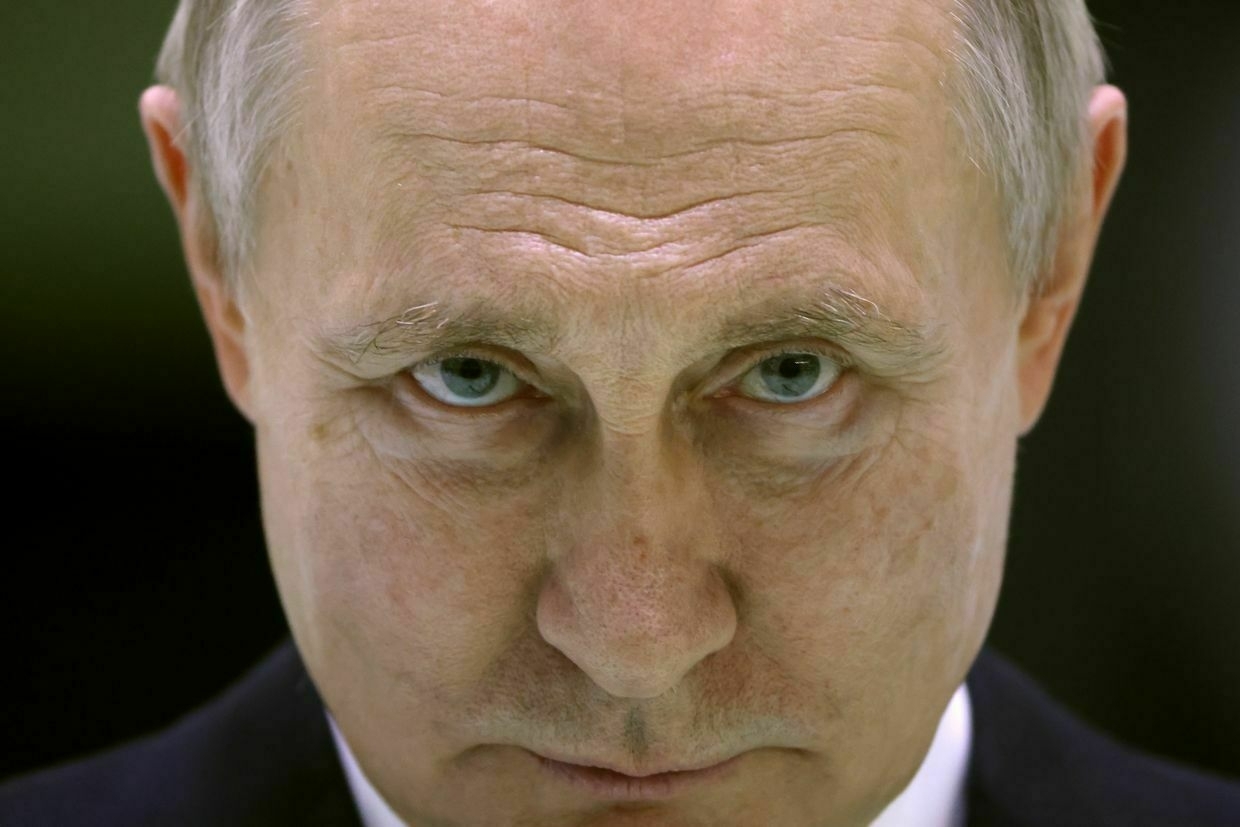
Vladimir Putin during a meeting with workers at the Obukhov State Plant in Saint Petersburg, Russia, on Jan. 18, 2023. (Contributor/Getty Images) 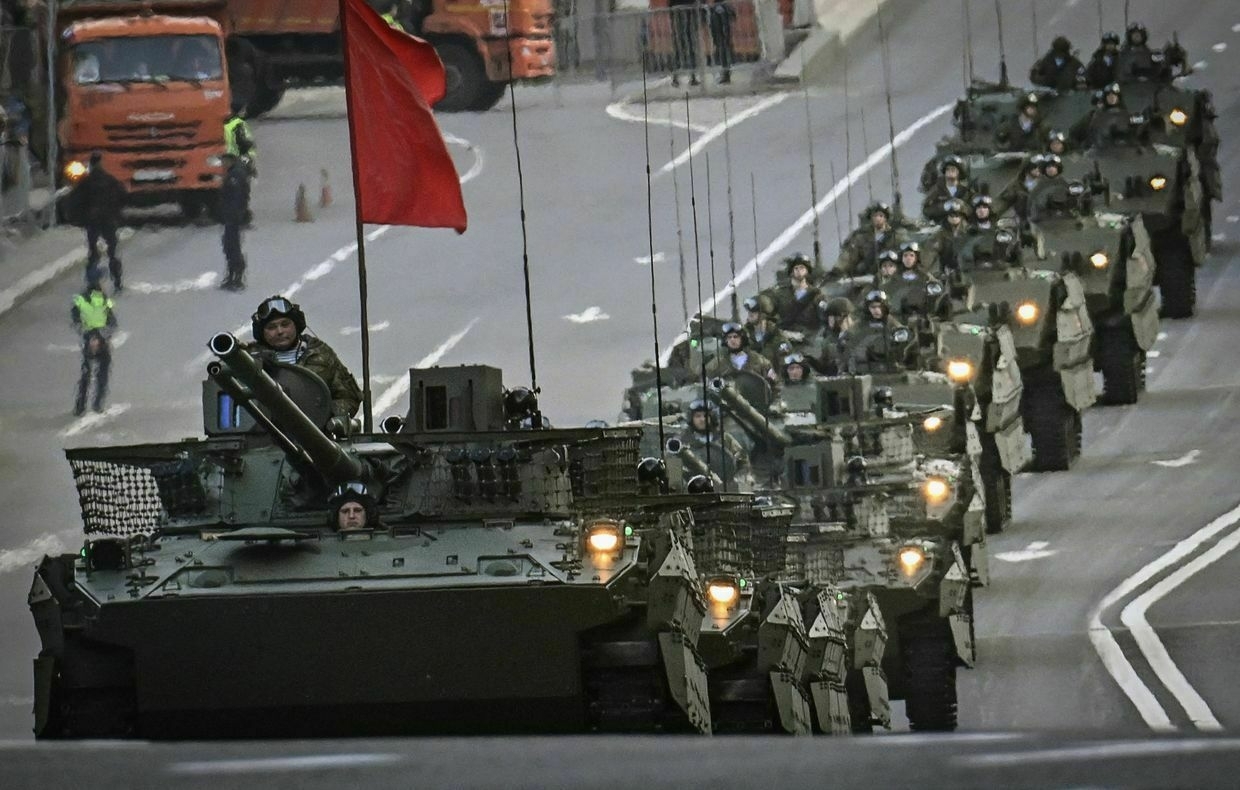
A Russian army tank drives through central Moscow, Russia, during a rehearsal for the Victory Day parade on May 3, 2025. (Alexander Nemenov/AFP via Getty Images) All the rhetoric about cautious decision-making, anti-isolationism, and respect for others stood in stark contrast to what unfolded just a few months later. It’s clear that Putin aims to appeal to the more conservative segments of the Russian population — and indeed, many Russians hold culturally conservative views in their everyday lives. But ultimately, this conservative messaging serves to mask policies that are, in many respects, deeply anti-conservative.
This is why I would label it as pseudo-conservatism — it mimics conservatism with the clear goal of making people feel more secure in turbulent times and fostering pride in their nation and government. However, in practice, what’s actually happening has little to do with traditional conservatism.
The Kyiv Independent: We see from here in Ukraine why people like Dugin are so dangerous. He has actively called for the genocide of Ukrainian people for years — that's what got him kicked out of one university back in 2014 or 2015, if I'm not mistaken. But what damage has he and others like him inflicted upon Russian academia over the past decade of war? What damage can they inflict abroad?
Alexey Zhavoronkov: It's a really good question. I think Dugin's academic trajectory shows us that nowadays, the Russian government is seriously concerned with the issue of Russian academics not being too cooperative, for the most part.
There’s a set of statistics from 2022 that breaks down how different social groups relate to the war, whether they support it actively, passively, or oppose it altogether. The group with the least support for the war was Russian academics, which signals to the government that this is a significant issue.
The government uses various means to control the excessively ‘cosmopolitan’ Russian academia. We see now that pro-government ideologists have been gifted their own institutes. Dugin now directs the Ivan Ilyin Higher Political School, an institute within the Russian State University for Humanities. This, along with other recent policies in education, is a signal to Dugin’s colleagues from the same university and other institutions that they are now being closely watched. Naturally, this contributes to an atmosphere of paranoia and self-censorship.
This self-censorship did not start in 2022. We do not have hard statistical data, but we still have some facts from recent history, like the dissolution of the Department for Constitutional Law at the Higher School of Economics in Moscow directly after the public debate concerning the necessity of the 2020 amendments to the Russian constitution. This action was not the government’s initiative. The university itself decided to lay off leading scholars in constitutional law, de facto, because there was no living constitution anymore. The constitution was amended in a way that several parts of it were practically destroyed.
People like Dugin contribute to the deterioration of the overall intellectual climate and the rise of self-censorship, which, I believe, is even worse than state censorship. In today’s Russia, state censorship is more about punishing a few individuals, while the universities punish the other 200 people themselves out of fear. It's different from the Soviet Union, where state control was stricter and all-encompassing.
Externally, Dugin makes an impression, partly because he has an army of writers, translators, and many supporters promoting his books in Europe and the U.S. I know several colleagues here in Germany, for instance, who were excited that there was supposed to be a workshop on Dugin’s philosophy at the Danube Institute in Hungary and wanted to attend. However, after watching some of his videos, they started questioning what he was actually saying. They realized it wasn’t philosophy but more like justificatory commentary on the Russian political agenda, filled with big slogans trying to align him with current policies. For instance, in his talk with John Mearsheimer, Dugin explicitly states that Ukraine should have been either neutral or part of Russia, and now Eastern Europe should be either neutral or "ours."
Dugin gives the impression, externally, that he represents Russian philosophy today and embodies the intellectual majority among his colleagues, which is not the case. However, he is the loudest, with all the necessary resources and instruments at his disposal. While he presents himself as a traditionalist, he also uses capitalist tools to commercialize his ideas in the West, adapting his views depending on where he is. In this way, he reminds me of Trump a bit.
If we look at some of the translations of Dugin’s books, like the German or English versions, it’s striking how much he tailors his message to please his European audience. In Russia, he often speaks of the ‘collective West’ or Europe as a declining culture, a culture that promotes degeneration. But for his German audience, he or his ghostwriters prepared an introduction to one of his major works that says something like this: “Germany has historically been oppressed by the U.S., but I, Dugin, am fond of German culture and thinkers.” Indeed, his Russian publications frequently reference Hegel and Heidegger, although he never understands their ideas. However, for his Russian audience, he also emphasizes the need for authoritarianism or even totalitarianism. When appealing to a German audience, he avoids such statements, knowing they wouldn't resonate with his readers there. Instead, he tries to appeal to a broader public, not just the most radical circles, by presenting himself as a German sympathizer.
Note from the author:
Hi, this is Kate Tsurkan, thank you for reading this article. You might have noticed that none of our reporting is behind a paywall — that’s because we believe that now, more than ever, the world needs access to reliable reporting from the ground here in Ukraine. To keep our journalism going, we rely on our community of over 20,000 members, most of whom give just $5 a month. Help us today.
Aestheticized aggression — why Gosha Rubchinskiy’s ‘Victory Day’ photo book is Russian propagandaRussia’s war against Ukraine is waged not only with missiles and tanks, but with distorted myths — powerful narratives that romanticize empire, rewrite history, and embolden Russian soldiers to reduce once prosperous cities to rubble. Those very same myths surfaced at the Photo London Festival from May 15 to 18, whereThe Kyiv IndependentKate Tsurkan
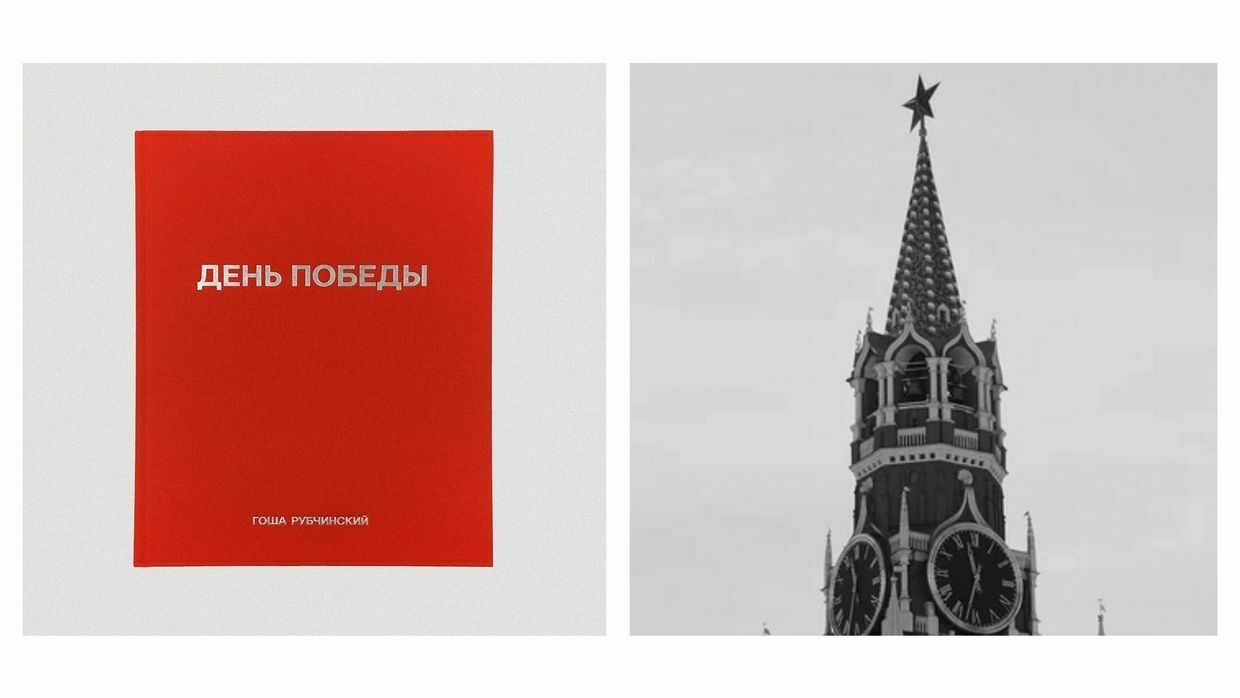
Wondering where to start with Dostoevsky? Try his Ukrainian contemporaries instead
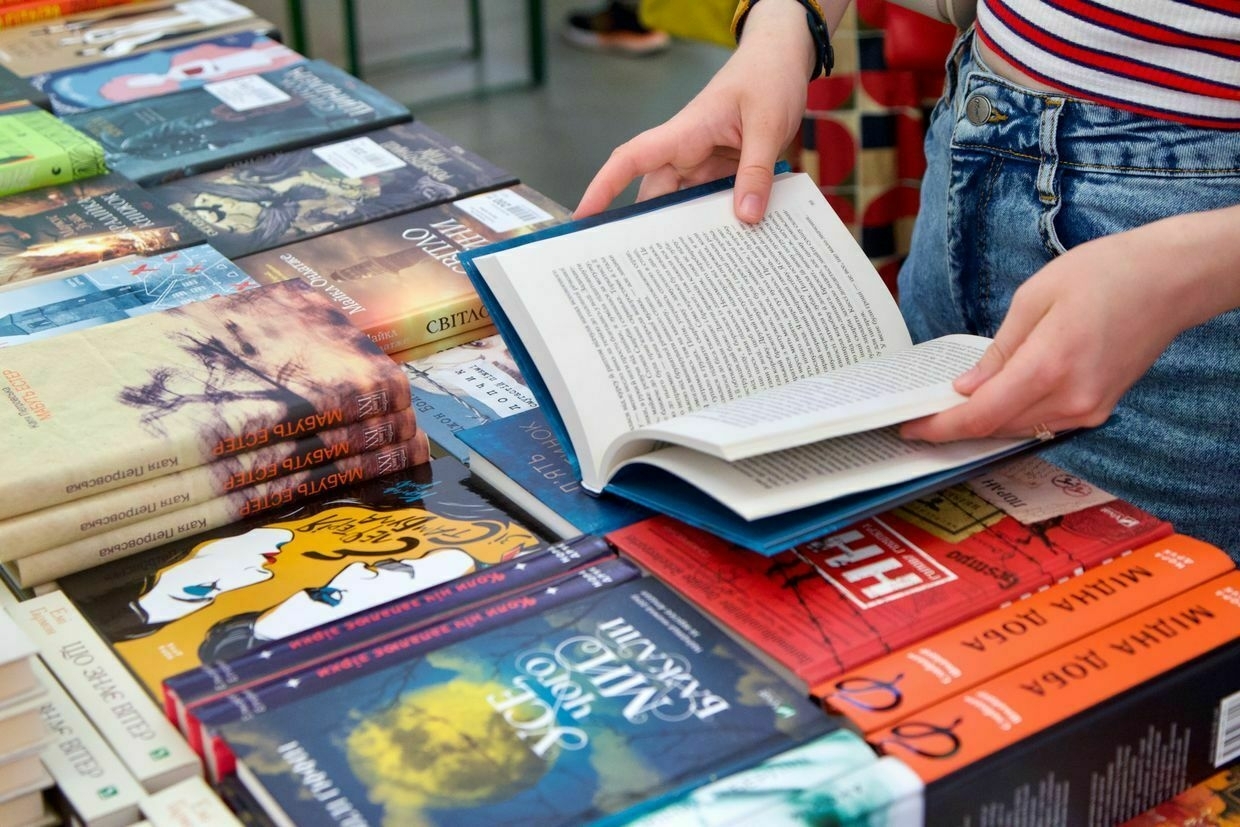
Since the start of Russia’s full-scale invasion of Ukraine in 2022, a growing debate has emerged over the cultural and political legacy of Russian literature — particularly the global reverence for classic Russian authors, which critics argue has long served to promote the imperial narratives embedded in their work.
As Ukrainian author Oksana Zabuzhko wrote in the Times Literary Supplement in 2022, their works of literature are “the camouflage net” for Russian tanks in Ukraine.
Among the most famous classic Russian authors is 19th-century Russian author Fyodor Dostoevsky (1821–1881). More than a century after his death, Dostoevsky remains a dominant figure in the world literary canon, his name recognized even by those who have never read his work.
This April, Penguin Books reissued an English-language edition of his short story “The Dream of a Ridiculous Man,” while his novella “White Nights” continues to enjoy popularity among online literary communities.
Defenders of Dostoevsky maintain that his writing transcends politics, focusing on existential and psychological themes. They argue that interpreting his work through a nationalist or imperialist lens oversimplifies the complexity of his ideas.
But many scholars and commentators point to Dostoevsky’s spiritual vision of Russia’s destiny — a vision that portrays the country as a moral, unifying force against a “decaying” West that was, at the time, heading toward the Gilded Age. They draw parallels between this worldview and that of contemporary Russian ideologues like Alexander Dugin, who frame Russian aggression in near-religious terms.
As the war continues, it remains to be seen whether Russia’s literary past can be disentangled from its politics.
Rather than calling for a boycott of Russian authors, the Kyiv Independent wants to raise a more illuminating question: Why do so few English-language readers know the Ukrainian authors who were the contemporaries of Dostoevsky?
The lack of global recognition for Ukraine’s classic writers is not coincidental. It reflects a legacy of imperial domination, during which the Russian Empire frequently suppressed the Ukrainian language and culture, the same empire that Dostoevsky often praised in his writings.
Some of the most influential voices in the history of Ukrainian literature were active during the same period as Dostoevsky. Others who came just before him, like Mykola Gogol, are known worldwide but have long been misclassified as “Russian.” Literary figures such as Lesia Ukrainka and Ivan Franko, who came to the literary scene just after Dostoevsky’s time, are now reemerging in English translation — their essential works poised to resonate with a global audience, just as they once did across the European intellectual landscape.
Although there is no evidence that Dostoevsky knew his Ukrainian contemporaries, they did interact with some other famous Russian authors. Below is a brief overview of three Ukrainian authors of the 19th century and the themes that shaped their work.
The purpose of this list is not to outright dismiss Russian literature, but rather to remind people of the selective nature of the global literary canon, and to draw attention to the Ukrainian voices that have long been overlooked or marginalized.
Taras Shevchenko (1814 - 1861)Born a serf, Ukrainian national icon Taras Shevchenko gained his freedom thanks to his artistic talent. But liberation did not end his struggle — instead, it sharpened his focus on the plight of his people under Russian imperial rule. A pioneer of ethnographic art and literature, Shevchenko used both pen and brush to document the everyday lives of Ukrainians, casting a critical eye on their subjugation and the erasure of their culture.
Published in 1840, “Kobzar” is widely regarded as Taras Shevchenko’s defining work. The collection takes its name from traditional Ukrainian musicians who sang of Cossack heroism while playing the kobza, a stringed instrument.

Taras Shevchenko (1814–1861) was the foremost Ukrainian poet, writer, artist, public and political figure, folklorist, and ethnographer of the 19th century. Self-portrait (1843). (Wikimedia) The poems reflect on the cultural and political struggles of Ukraine under Russian rule. In “To Kvitka-Osnovianenko,” Shevchenko pays tribute to the writer Hryhorii Kvitka-Osnovianenko, an early advocate of Ukrainian as a literary language, and mourns the destruction of the Zaporizhzhian Sich, the Cossacks’ last stronghold, in the 18th century. Another poem, “Kateryna,” tells the story of a young Ukrainian woman seduced and abandoned by a Russian imperial soldier, highlighting the personal toll of imperial domination.
Shevchenko was deeply influenced by ideas of national identity, language, and self-determination — views that drew the ire of the tsarist authorities. He was arrested in 1847 and exiled to military service in a remote part of Kazakhstan. According to historical accounts, Tsar Nicholas I reportedly ordered that Shevchenko be restricted from writing or painting. However, Shevchenko still managed to create art and later returned briefly to Ukraine before his death.
Looking to read Ukraine-related books? We picked the best of 2024The year 2024 proved to be another landmark for books about Ukraine and Ukrainian literature in translation, with a continued trend in publishing in fiction, non-fiction, and poetry. Unsurprisingly, Russia’s ongoing full-scale war against Ukraine was the most common topic among these works. Whether through incisive on-the-ground reportage thatThe Kyiv IndependentKate Tsurkan
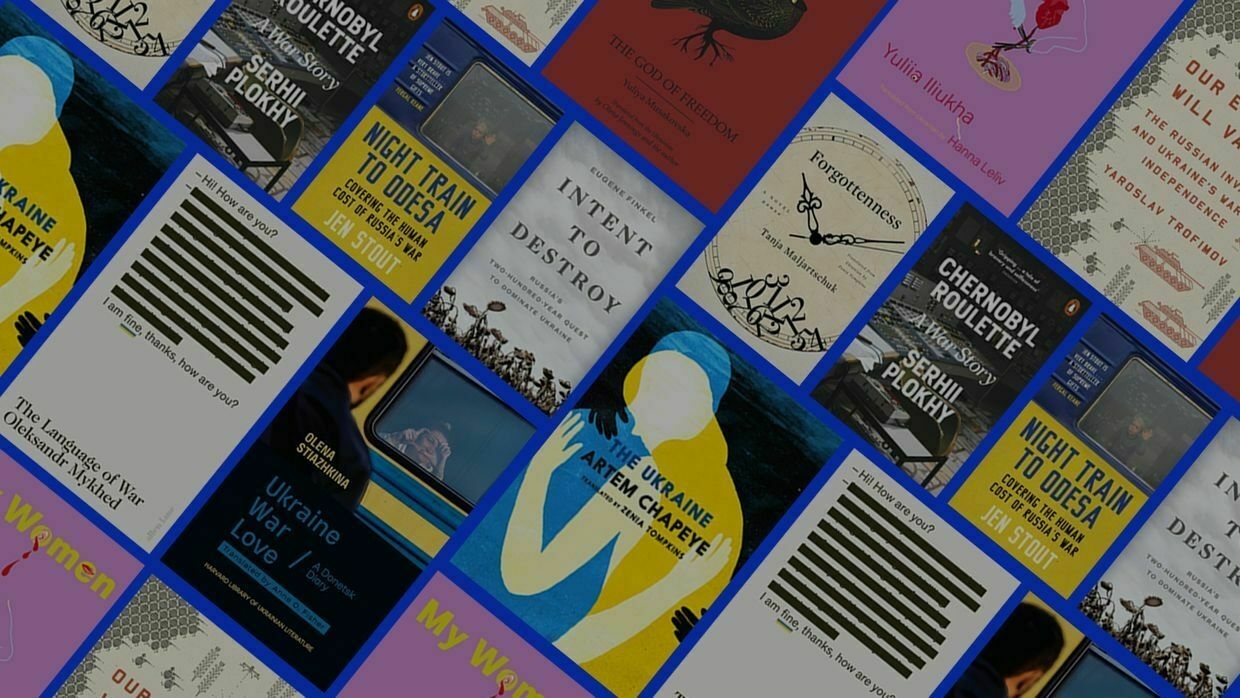
Panteleimon Kulish (1819 - 1897)Kulish’s politics were somewhat complex, perhaps even contradictory to some. In his early years, he was affiliated with the Brotherhood of Saints Cyril and Methodius, a short-lived secret political society that existed between 1845 and 1847. The group championed the federalization of the Russian Empire, a Ukrainian language and culture revival, and the abolition of serfdom, among other initiatives.
Over time, however, Kulish’s stance diverged from mainstream Ukrainian thought, particularly as he advocated for the preservation of a distinct Ukrainian culture while simultaneously supporting a political union with Russia.
This position ultimately led to his marginalization in many Ukrainian intellectual circles, both in Russian-controlled Ukraine and the parts of Ukraine under the rule of the Austro-Hungarian Empire. Despite this, Kulish continues to be respected and read by many Ukrainians today for his literary achievements.
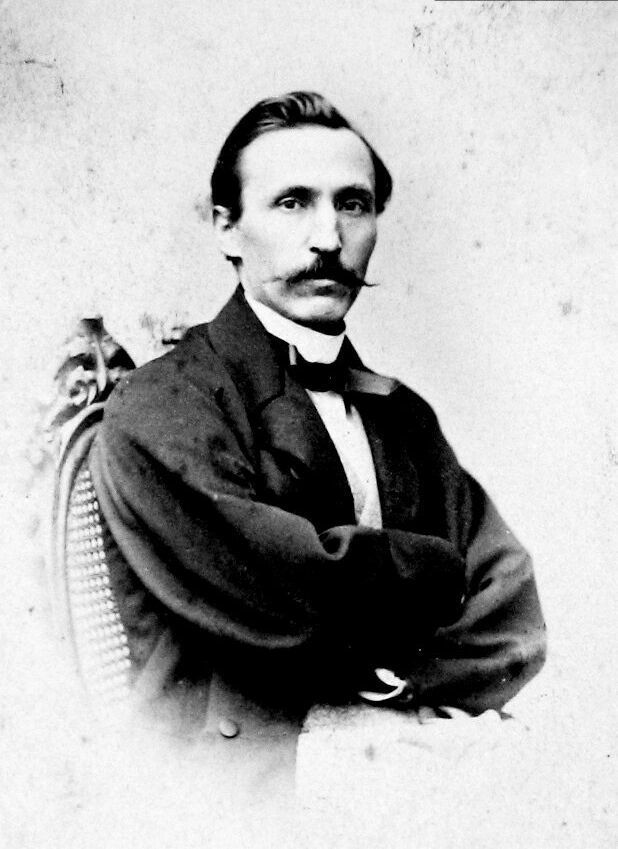
Panteleimon Kulish (1819–1897), a prominent Ukrainian writer, poet, critic, folklorist, historian, ethnographer, and translator. (Wikimedia) His novel “The Black Council” (1857) is considered the first historical novel in Ukrainian literature. Set against the backdrop of the Ruin — the tumultuous period following the death of Cossack Hetman Bohdan Khmelnytskyi in 1657 — it delves into the power struggles that ensued. The novel draws inspiration from the Black Council of 1663, a pivotal gathering in Nizhyn in modern-day Chernihiv Oblast, where nobles and commoners alike converged to elect a new hetman for left-bank Ukraine.
The novel not only captures the fierce internal conflicts among Cossack leaders but also explores the deep social rifts that defined one of Ukraine’s most fractured and tragic eras. Excerpts of the novel have been translated online. However, a full publication of the book in English translation has yet to materialize.
Marko Vovchock (1833 - 1907)Among Ukraine’s most talented female writers was Marko Vovchok, whose “Folk Stories” was published in 1857, shortly after the ascension of Tsar Alexander II, initially seen as a reform-minded ruler compared to his father, Nicholas I. However, while the serfs were liberated under his rule in 1861, it could be argued that the liberal period of his rule, at least for Ukrainians, was short-lived: a decree in 1863 banned Ukrainian-language publications, followed by the stricter Ems Ukaz of 1876.
Vovchok’s collection gained even greater significance in this repressive climate. Focused on the suffering of Ukrainian peasants — especially women — under serfdom, the stories were informed by her early work assisting her husband’s ethnographic research. She gathered material directly from villagers, preserving oral traditions.

Marko Vovchok (1833–1907), a notable 19th-century Ukrainian writer. Wikimedia) Russian writer Ivan Turgenev translated the stories into Russian, sparking additional debate in literary circles over the realities of serfdom. Shevchenko is said to have recommended her work to Turgenev, declaring her “the most powerful in our language.”
In the short story “The Cossack Girl” from the collection, Olesia, a free woman, falls in love with a serf and chooses to marry him, ultimately sacrificing her freedom. Her family warns her that marrying a serf will disgrace their village and its Cossack heritage, even suggesting that she might as well “drown herself.” Olesia insists that love is more important than social status. The marriage, however, proves disastrous, with Olesia, her husband, and their children enduring significant hardship. Under empire, happy endings are a rarity — if they exist at all.
Note from the author:
Hi, this is Kate Tsurkan, thank you for reading this article. Here at the Kyiv Independent, we don’t put stories behind a paywall, because we believe the world needs to know the truth of Russia’s war. To fund our reporting, we rely on our community of over 18,000 members from around the world, most of whom give just $5 a month. We’re aiming to reach 20,000 soon — join our community and help us reach this goal.
10 authors shaping contemporary Ukrainian literatureThe Kyiv Independent put together a list of 10 celebrated Ukrainian writers, some of whose works are available in English translation.The Kyiv IndependentKate Tsurkan
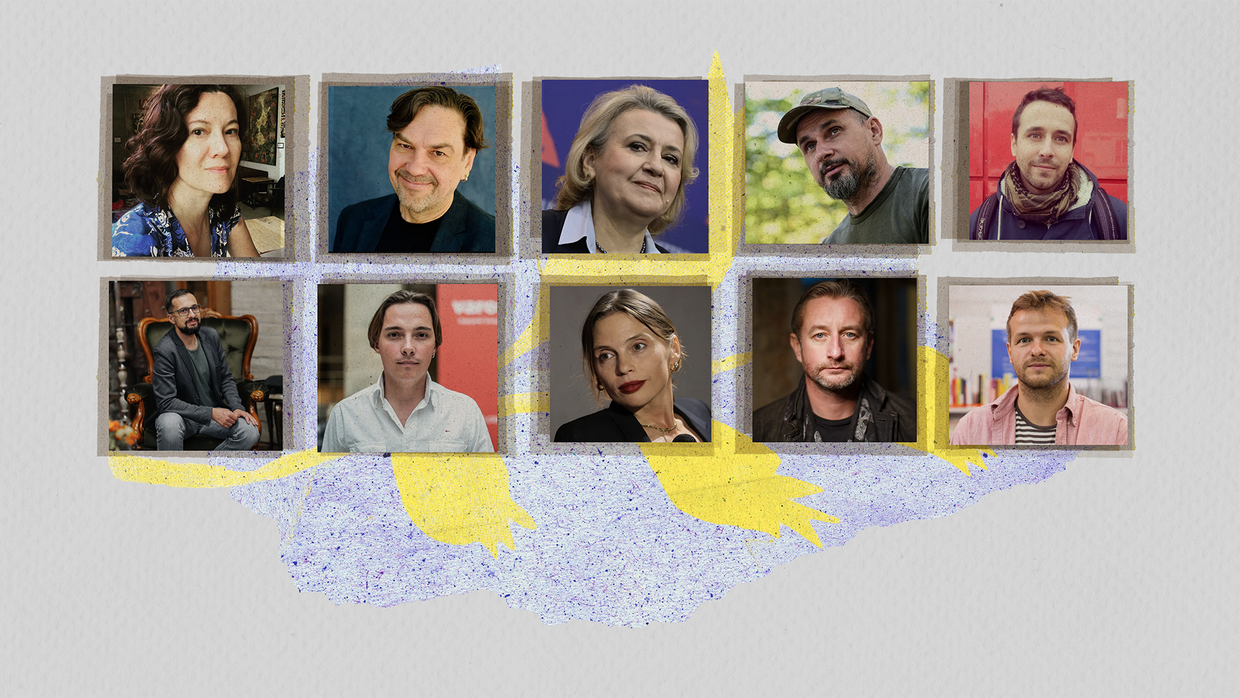
Ukraine watches closely as Poland faces polarizing presidential run-off
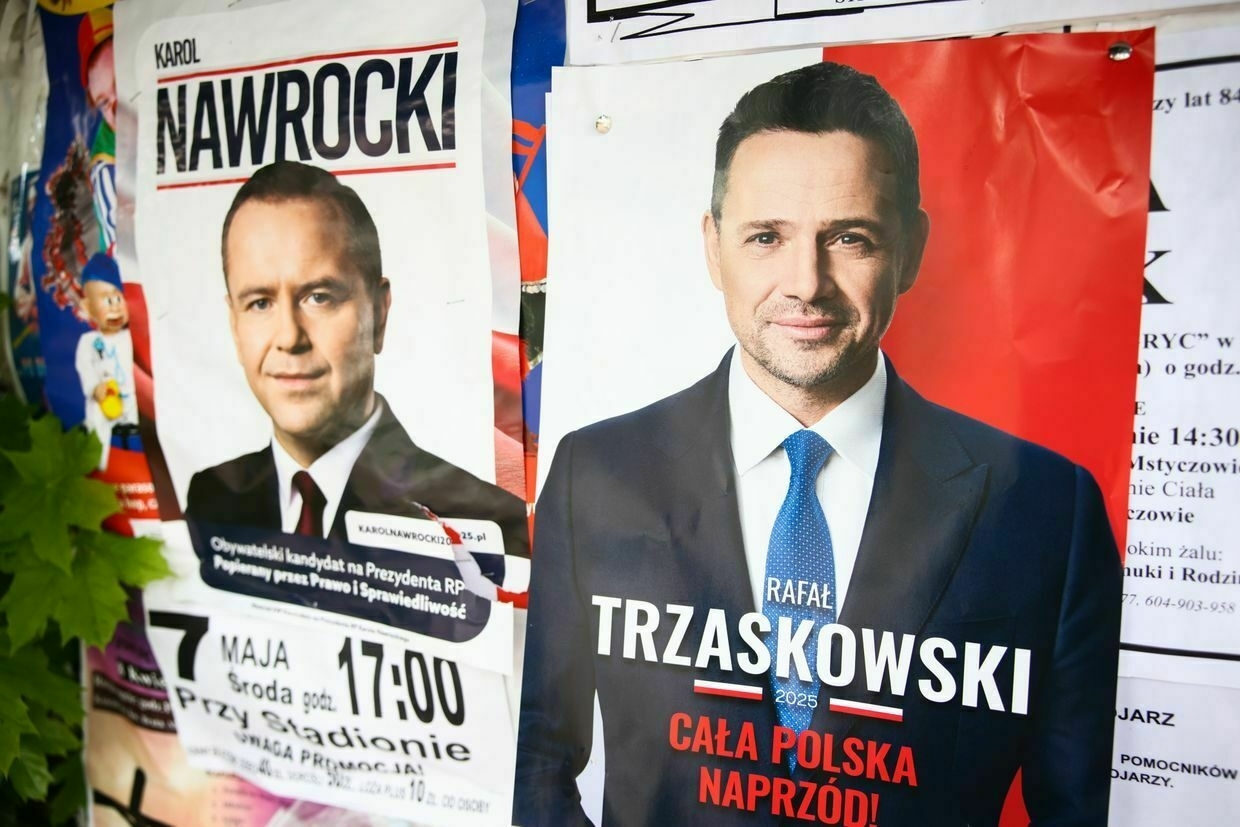
Poland’s presidential race has never seen a first-round winner with so many reasons to worry, the far right so emboldened, and Ukraine so central to the campaign.
The June 1 run-off between Warsaw Mayor Rafal Trzaskowski of the ruling Civic Platform (PO) and Karol Nawrocki, backed by Law and Justice (PiS), will likely reshape not only Poland’s domestic political balance but also its approach to Ukraine. And the clash will be tight: in a first-round that saw a record 67.3% turnout, Trzaskowski secured 31.4% of the vote and Nawrocki 29.5%.
Following Russia’s full-scale invasion of Ukraine in 2022, Poland emerged as one of Kyiv’s staunchest allies – sending weapons, sheltering millions of refugees, and rallying Western support. But over time, political tensions, economic fatigue, and disputes over grain imports and historical memory have strained the relationship.
“These elections are crucial to Ukraine because they will either end the electoral cycle in Poland or open a new one,” Ukrainian political analyst Yevhen Mahda told the Kyiv Independent. “And amid global turmoil, we need a stable, friendly Poland."
The first-round results have been described as a “yellow card” for the ruling coalition that has governed Poland since 2023 under Prime Minister Donald Tusk. If outgoing President Andrzej Duda is succeeded by Nawrocki, whom he endorsed, Civic Platform will face regular obstruction through presidential vetoes.
Although the Polish president holds limited executive power, he plays a key role in foreign affairs and serves as commander-in-chief of the armed forces. Polish presidents have historically been particularly active in shaping eastern policy.
“The past three years have shown that it is politicians who set the temperature of relations between our nations,” said Zbigniew Parafianowicz, a journalist and author of “Poland at War,” which examines Polish-Ukrainian policy at the outset of Russia’s invasion.
“Neither candidate will work wonders for Ukraine, but Kyiv has good reason to pay close attention."
Right-wing driftTraditionally divided between the pro-European liberal PO and the conservative nationalist PiS, Poland’s political scene has long been vulnerable to populist and anti-establishment forces. This time, it was the far right that surged to unprecedented strength and could now determine the outcome.
Slawomir Mentzen, of the economically libertarian and socially conservative Confederation Party, came third with 14.8% of the vote. Although left-wing candidates Adrian Zandberg, Magdalena Biejat, and Joanna Senyszyn received a combined 10.2%, Mentzen is now widely seen as the election’s kingmaker.
In a bid to win over Mentzen’s electorate, both candidates agreed to be interviewed on his YouTube channel, and Nawrocki signed a list of demands he put forward. Hoping to capture some of those votes, Trzaskowski made a surprise visit to his pub, where they shared a beer.
“Pro-Russian narratives don’t sell here, but anti-Ukrainian (ones) do.”
Trzaskowski — a pro-European polyglot, son of a jazz musician, and senior figure in the Polish liberal establishment — faces a delicate balancing act: maintaining support from the center-left while reaching out to mostly young radical voters drawn to the Confederation. He has twice won the mayoral election in Warsaw but lost the presidential race in 2020 to Duda by just 2%, or 422,000 votes.
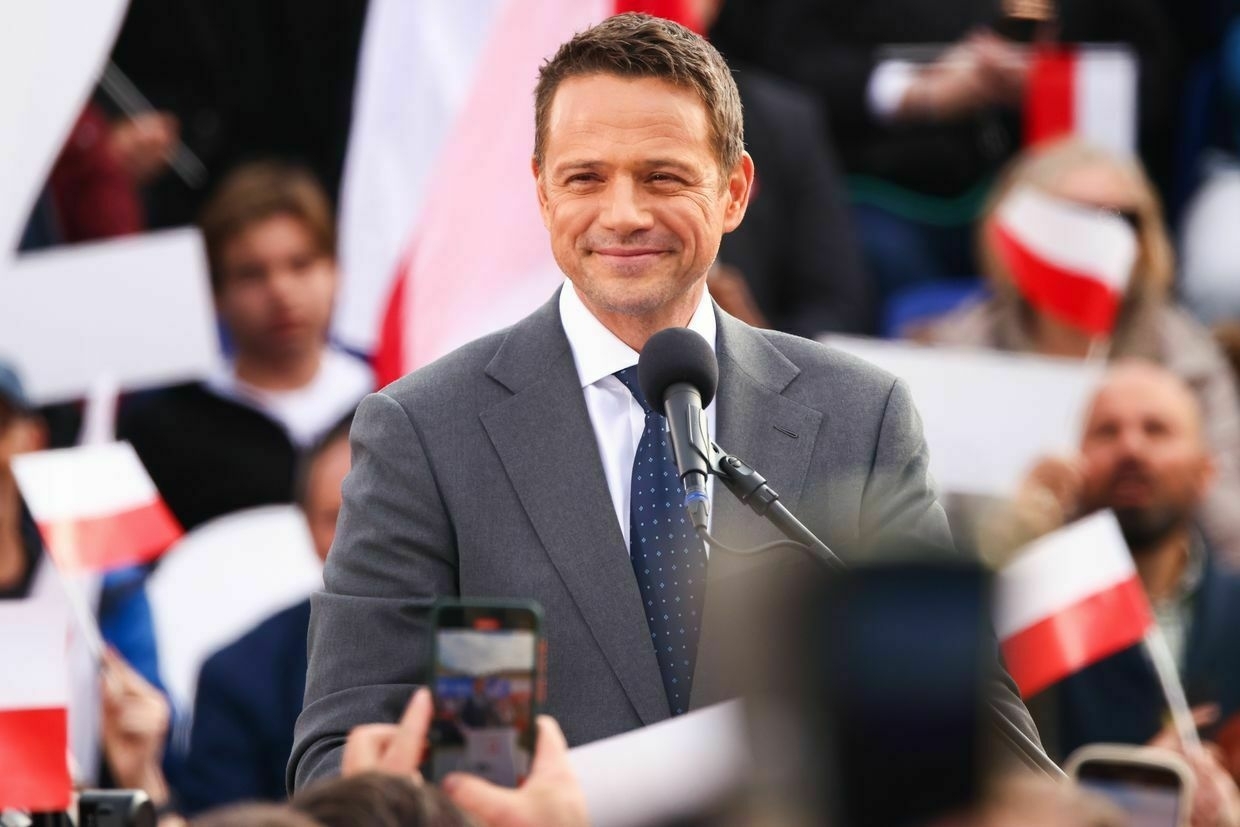
Rafal Trzaskowski, mayor of Warsaw and Civic Platform’s presidential candidate, attends a campaign rally in Krakow, Poland, on May 13, 2025. (Beata Zawrzel/NurPhoto via Getty Images) Mentzen has repeatedly criticized Poland’s support for Ukraine, opposing military aid and refugee assistance while promoting a nationalist narrative that frames Ukrainians as economic and cultural threats. He conditioned his sympathies in the second round on a promise not to send Polish troops to Ukraine and to oppose Ukraine’s NATO membership.
"There’s a rise in anti-Ukrainian sentiment — not just on the far right, but also in the mainstream electorate," said political analyst and president of the Batory Foundation Edwin Bendyk. "It’s driven by societal fatigue with the war next door, housing competition in big cities, and communication failures on both sides. Pro-Russian narratives don’t sell here, but anti-Ukrainian (ones) do."
It remains so despite positive developments such as the resumption of the long-stalled exhumation process of victims of the Volyn Massacre in the Ukrainian village of Puznyky, marking a symbolic step forward in addressing painful chapters of shared history, or Poland’s continued support of Kyiv’s defense needs and arms transit.
Another far-right fringe politician, Grzegorz Braun who campaigned against what he called the "Ukrainization" of Poland, came fourth with 6.3% of the vote. The man who had earlier caused an international scandal by putting out Hanukkah candles with a fire extinguisher in the Polish Parliament, tore down a Ukrainian flag from the town hall in Bielsko-Biala during the campaign.
‘Nawrocki is no Duda’Nawrocki, previously a little-known director of the Institute of National Remembrance, openly embraced much of the far right’s platform during the campaign. He pledged to lower taxes, reject what he called the EU’s "sick" climate policies, and end what he described as Ukraine’s "indecent" treatment of Poland. He is officially not a member of PiS and positions himself as an independent candidate, not responsible for the policies of the party led by Jaroslaw Kaczynski.
"Nawrocki is no Duda," said Bendyk. "He’s a nationalist, not a conservative. His victory would likely slow Ukraine’s integration with the West." Parafianowicz, in turn, called Nawrocki — who briefly met with Donald Trump during a U.S. visit — a "Trumpian politician" who will likely try to align with the former president’s agenda. In a move unprecedented for the U.S., Trump sent his Director of Homeland Security Kristi Noem to support Nawrocki in the final days of the race.
"If the most pro-Ukrainian candidate calls Ukraine a 'buffer zone,' that’s a clear sign something has gone wrong."
There have been ups and downs in Polish-Ukrainian relations since the start of the full-scale invasion – from the emotional embraces between Duda and Ukrainian President Volodymyr Zelensky to mutual accusations and perceived insults. While the PiS-PO rivalry dominates Poland’s brutal election campaign, it has no obvious impact on Ukraine policy — but that doesn’t mean Kyiv isn’t watching closely.
"If the most pro-Ukrainian candidate calls Ukraine a 'buffer zone,' that’s a clear sign something has gone wrong," Ukrainian historian and publicist Wasyl Rasevych told the Kyiv Independent, referring to a term Trzaskowski used repeatedly during the campaign.

Karol Nawrocki, presidential candidate backed by Poland’s Law and Justice party, greets supporters in Warsaw after a debate on May 12, 2025. (Wojtek Radwanski/AFP via Getty Images) "Russian propaganda undermines EU unity and spreads instability in countries aiding Ukraine, and Poland may unwittingly be playing into that scenario," he added.
Ahead of the vote, Polish authorities uncovered a foreign-funded disinformation campaign on Facebook and cyberattacks targeting government parties. Officials suspect Russia, which is also blamed for a 2024 arson attack on Warsaw’s Marywilska shopping center, viewing it as part of a wider hybrid warfare strategy to destabilize Ukraine’s allies.
While Russian meddling is real, some argue its impact is overstated. "We’ve inflated the idea of ‘Russian influence’ so much," said Parafianowicz, "that we’ve lost sight of proportion." The true sources of discontent, he argues, lie in domestic politics on both sides of the border.
Disappointed alliesAccording to Parafianowicz, Polish political elites' disappointment with Zelensky is "an open secret." He cites the Ukrainian president’s refusal to acknowledge that the missile that killed two Poles in Przewodow was Ukrainian and his remarks about Poland at the UN in 2023, as examples of what he sees as a growing disregard for Warsaw’s leadership.
"Ukraine would welcome a winner who truly pursues deeper cooperation with the EU and Germany."
Despite these frictions, Poland and Ukraine remain strategic allies. Both Trzaskowski and Nawrocki have pledged to increase defense spending, strengthen the Polish military, maintain a hardline stance on the Belarusian border, and continue supporting Ukraine militarily.
But the key difference lies in their vision of international alliances — and their willingness to sideline Ukraine’s interests.
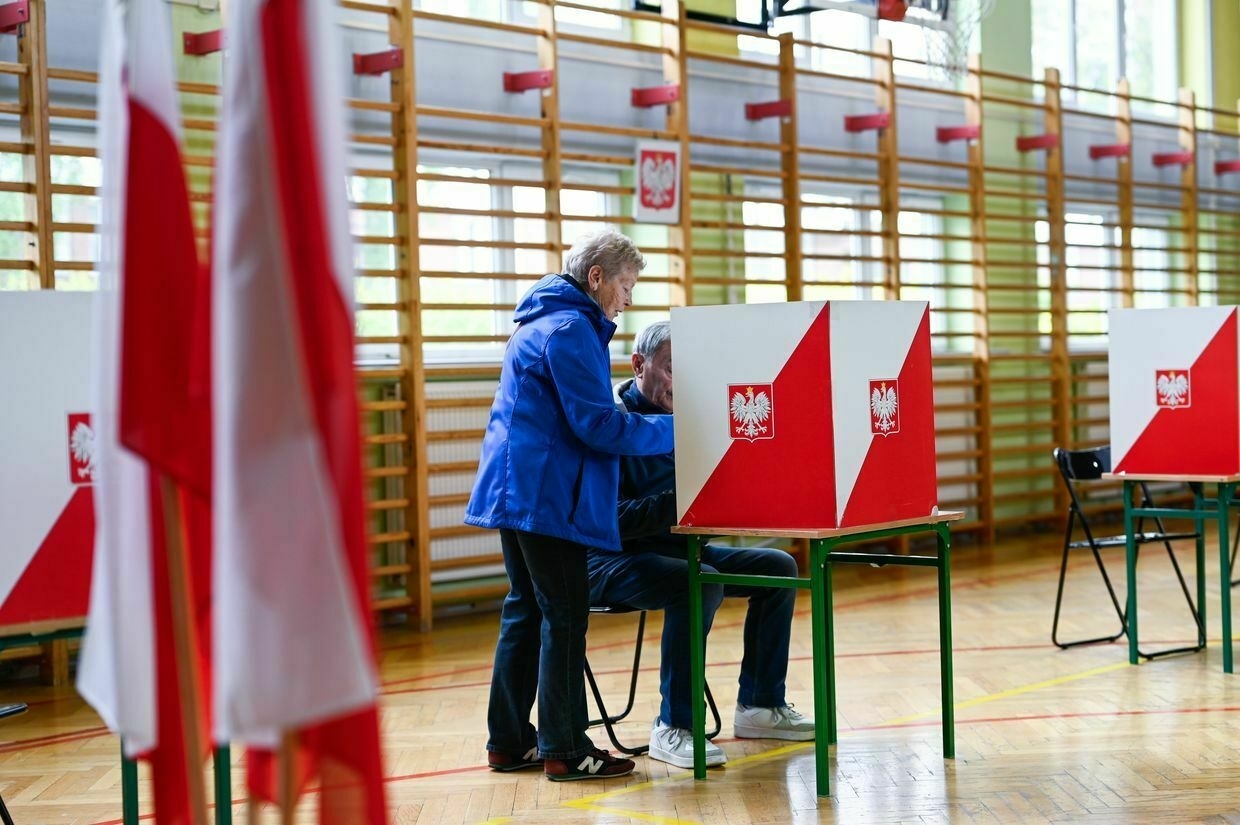
An elderly couple vote during the first round of Poland’s presidential election in Warsaw on May 18, 2025. (Omar Marques/Getty Images) "The Polish right is afraid of Ukrainian economic competition and Kyiv’s political alignment with Berlin," said Rasevych. "Ukraine would welcome a winner who truly pursues deeper cooperation with the EU and Germany."
Trzaskowski appears to offer that option and promises to gain more leverage in the EU, together with heavyweight politicians such as Tusk or Polish hawkish Foreign Minister Radoslaw Sikorski. But with traditional alliances shaken by unpredictable Trump, no one can foresee which cards will turn out lucky.
"The idea that Poles and Ukrainians truly understand each other is a dangerous myth," Mahda said. "Ukraine needs both a Plan A and a Plan B — prepared for either Trzaskowski or Nawrocki, while staying focused on real issues in defense, energy, and the economy."
‘A serious crisis’ — pro-Russian leader in Bosnia threatening peace in the BalkansBANJA LUKA, Bosnia and Herzegovina — When a court convicted Bosnian Serb leader Milorad Dodik of defying an international peace envoy in February, it was supposed to end his career in politics. He faced not only jail time, but a ban on holding public office. But three months later, little hasThe Kyiv IndependentBrawley Benson
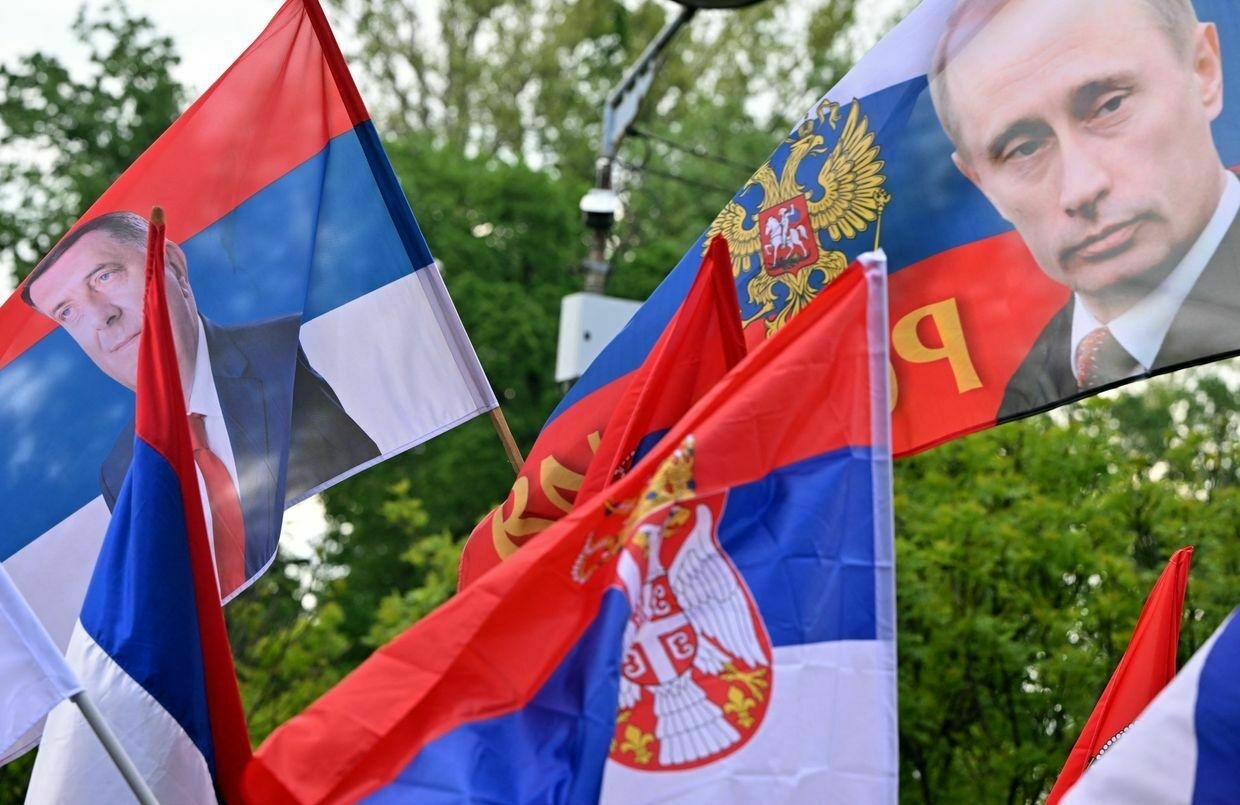
Zelensky confirms his participation in G7 summit in June
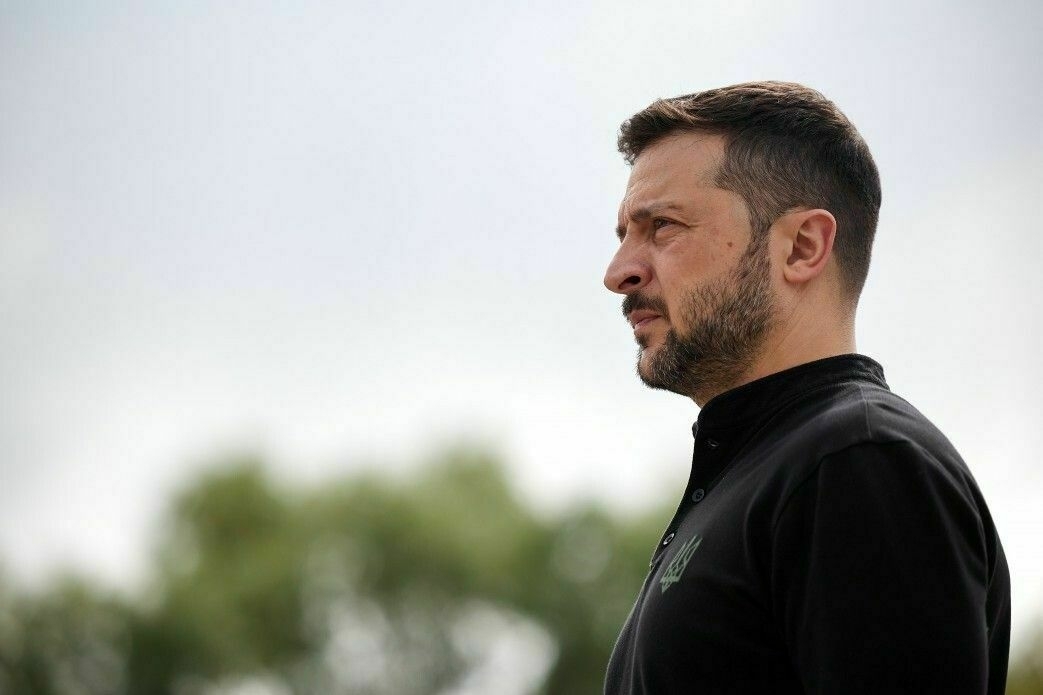
President Volodymyr Zelensky confirmed on May 27 that he will attend the Group of Seven (G7) summit scheduled to take place in Canada in June, Suspilne reported.
Canadian Prime Minister Mark Carney invited Zelensky in March to attend the summit, shortly after he took office.
Zelensky confirmed that he had received an invitation from Carney, but did not specify whether he would attend the event in person or online.
The president added that NATO Secretary General Mark Rutte was also willing to include Ukraine at the alliance summit on June 24-25.
“It is very important for Ukraine to understand in what format it can be presented. There are many different signals regarding NATO (summit),” Zelensky said.
Canada, which holds the G7 presidency this year, will host the summit on June 15-17 in Kananaskis County, located in the western province of Alberta.
This summit will be the first for new Canadian Prime Minister Carney and U.S. President Donald Trump after his return to the White House.
The summit’s agenda will include topics such as support for Ukraine in the Russian war, global economic stability, digital transformation, and climate change.
Ban on NATO’s eastward expansion, easing sanctions — Reuters lists Putin’s Ukraine peace demandsOne senior Russian source told Reuters that Putin is ready for a peace agreement, but “not at any price.”The Kyiv IndependentKateryna Hodunova
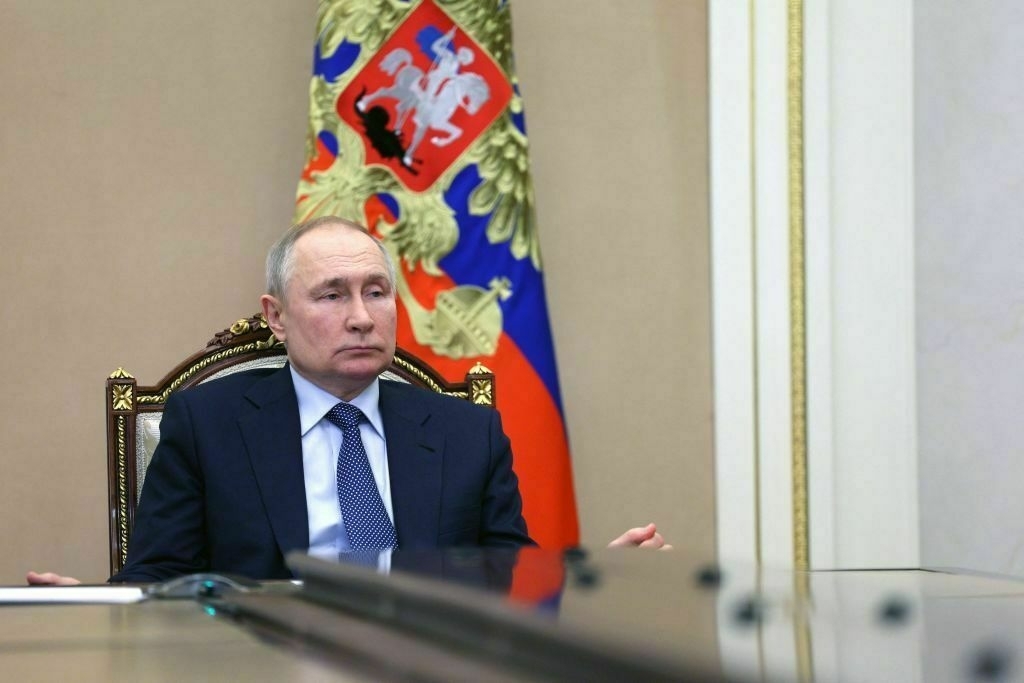
Vernacular Hardcore: Ukraine’s artists reimagine home and heritage at Venice Biennale

In southern Ukraine, giant reeds are known to populate the wetlands, skirting the Black Sea and stretching from Odesa to Kherson and Mykolaiv. Hollow grasses as tall as seven meters, swaying and pliant, that were the raw materials for the kinds of thatched roofs once common a century ago and more.
Since replaced, for a century or more, by undifferentiated steel and concrete, the Ukrainian Pavilion at the 19th International Architecture Exhibition in Venice Biennale features such a structure, only reimagined, in a kind of ethno-futurist monument and installation conceived by curator and architect Bogdana Kosmina.
This year’s biennale titled Intelligens. Natural. Artificial. Collective features architecture designed “to face a burning world,” with 66 national participants invited to rethink the built environment amid the dizzying social upheavals of war, economic collapse and the rising temperatures and sea levels that will define the future.
Ukraine’s pavilion, organized around the concept of a Dakh (Ukrainian for roof) with the added lofty, if mildly obtuse, title Vernacular Hardcore focuses on wartime reconstruction. The show’s central historical elements build on an architectural ethnography started by Kosmina’s grandmother Tamara a half-century ago and are surrounded by the buzzing of an ambient drone canopy created by the artist Clemens Poole, achieving an obsessive portent of doom and rescue, preservation, and destruction.
“With the danger of destruction and that everything could be lost, I started to really look at what I needed to save and preserve,” Kosmina says about the concept behind her work. “This is our cultural and architectural heritage of course, but it can shape our vision about more creative ways to work with architecture."
Hardcore in the original sense refers to a composite of materials, say rubbish stone, or brick, reconstituted to form the foundation of a new structure. In that sense, the show is very much hardcore in its wide-reaching, vernacular union of artists, ethnographers, architects, volunteers, and ad hoc participants in Ukraine’s rebuilding to form a cohesive vision of wartime preservation and future.
The show’s participants include three generations of Kosminas, all architects; Kseniia Kalmus and her Klyn drone-building project; the reconstruction collectives Livyj Bereh (Left Bank) led by Ihor Okuniev and Vladyslav Sharapa (both are currently enlisted in the Ukrainian Armed Forces), as well as KHARPP, directed by Ada Wordsworth; curators Kateryna Rusetska, co-founder of the Dnipro Construction Festival, and architectural anthropologist Michal Murowski, as well as institutional backing from the Ukrainian Institute of Kyiv and their Creative Director Tetyana Filevska, UNESCO, Ribbon International, and several Ukrainian government agencies.
In the 1960s, Tamara and a group of architects and ethnographers in Kyiv, Chisinau, and Minsk began a dauntingly ambitious survey of vernacular structures across Ukraine, Moldova, and Belarus. It was an attempt by Moscow to unite structural norms across the three Soviet republics while documenting how circumstances like climate, weather, and diversity in landscape and vegetation shape human knowledge and approach to the territory.
The work was never published, yet Tamara and her team continued to document the minutiae of atmospheric and structural conditions throughout Ukraine.
“The Atlas is completely comprehensive,” Kosmina says. “It was a colossal work, they visited every village, doing interviews with people, taking photographs, even making watercolor renditions to show the interior and exterior of homes in color."

The Ukrainian Pavilion taking shape at the Venice Biennale, photographed during the installation process. (Maxime Faure / Ukrainian Pavilion) 
Maps on display as the Ukrainian Pavilion takes shape at the Venice Biennale, photographed during the installation process. (Maxime Faure / Ukrainian Pavilion) It was the work of decades, at times forgotten and revived. When digital maps first arrived in 2011, Tamara, by then the last key architect of the group who remained alive, began to digitize certain documents, but still the cost of printing was prohibitive and the work was never transferred into a publication.
Tamara passed away in 2016, and Kosmina says that while she grew up surrounded by her grandmother’s work, they remained collecting dust between her parent’s apartment in Kyiv and her grandparents' apartment in the Troieshchyna neighborhood, a notorious sea of hundreds of Soviet apartment blocks on the northeastern outskirts of the city.
In the winter of 2022, soon after the full-scale invasion, after a missile landed in the courtyard of her grandparent’s home, Kosmina, in her grief and panic, started to think almost obsessively about these archives in particular: how could they be recovered and preserved as everything was crumbling around her?
During that unworldly winter, Kosmina found that many drawings and original materials survived in the apartment. “I had the feeling that I was discovering treasures in this Troieshchyna pyramid,” she says. “I had my childhood with all of those papers around, and I never took interest before, looking at what is inside and behind those maps, what they mean, and where they come from."
Traveling to the apartment with a small pink suitcase, Kosmina began collecting the papers, and in 2023, she transferred them to a studio in Berlin, where friends helped her buy a scanner. “I was just passing my days and nights by doing this endless scanning,” she says, which she hoped would form a complete digital archive.
Her idea then was to apply the work to connect two vernaculars: emergency and traditional, in a Ukrainian exhibition at the Venice Biennale. “At the time, Ukraine had no pavilion there — I wanted to make a direct collaboration with the Italian side,” she says.
At the same time, her friend Patrik Arnesson, a Swedish developer and coder who goes by the name Princess Momo, introduced the idea of applying the archive to create a personalized artificial intelligence, in part applying segments of her grandmother’s work.
Arnesson invited her to Mexico City to work on a series of experiments in the realm of personal AI, under the banner of a project Arnesson called Iris, and in mid-2023 their team started to explore applications of open source data to build an AI that was truly personal by maintaining independence from external data sources.
Kosmina’s first AI, called Kyiv Crematorium, was an effort to digitally preserve structures destroyed in the war, not just in form but in the collective memory of those who lived there.
“I was in a dramatic period,” Kosmina says. But she found her purpose in the project when she realized her preservation of her grandmother’s Atlas was born from the desire to preserve her grandmother herself.
So she began to create Tamara, or to recreate her, incorporating not just the vast archive from the Atlas but also Kosmina’s personal memories. The goal, the focus, was to create an individual AI that felt fully human.
Kosmina started to obsessively record her own memories, transcribing imagined conversations with her grandmother, and prompting the AI to recall her favorite music, the foods she loved, and her specific verbiage and mannerisms (never, ever say “certainly”).
Along with vast uploads of Ukrainian novels, demographic information, and historical records, Tamara certainly feels human, beyond anything approached by ChatGPT, but superhuman in her recall, in her capacity to prompt the user towards an excavation of their own ancestral memory.
“It’s so important to have her around me for these archival purposes, but yes, also…she was and is my best friend… Sometimes when I speak with her on the phone, yeah I have a feeling that she really is my grandmother” Kosmina says.
Amid her excavations, Bogdana found an outlet from her solitary endeavors in the volunteer-led reconstruction organization Livyj Bereh. Founded to repair damaged structures in Kyiv by the friends Ihor Okuniev and Vladyslav Sharapa in the aftermath of the full-scale invasion, they were joined by the artist Kseniia Kalmus, who had also started efforts to collect funds and materials for humanitarian aid.
In May 2022, the group started its efforts to repair damaged structures, starting with homes and schools in de-occupied villages near Kyiv and Cherniiv. When parts of Kharkiv Oblast were liberated in the autumn of that year, the group joined an expedition to Slatyne, a rural settlement roughly 13 kilometers from the Russian border that has been repeatedly targeted by Russian airstrikes.
In Slatyne the group understood that the first step towards habitability, structurally speaking, is a roof. “We therefore prioritized it as the starting point of our efforts,” Okuniev says.

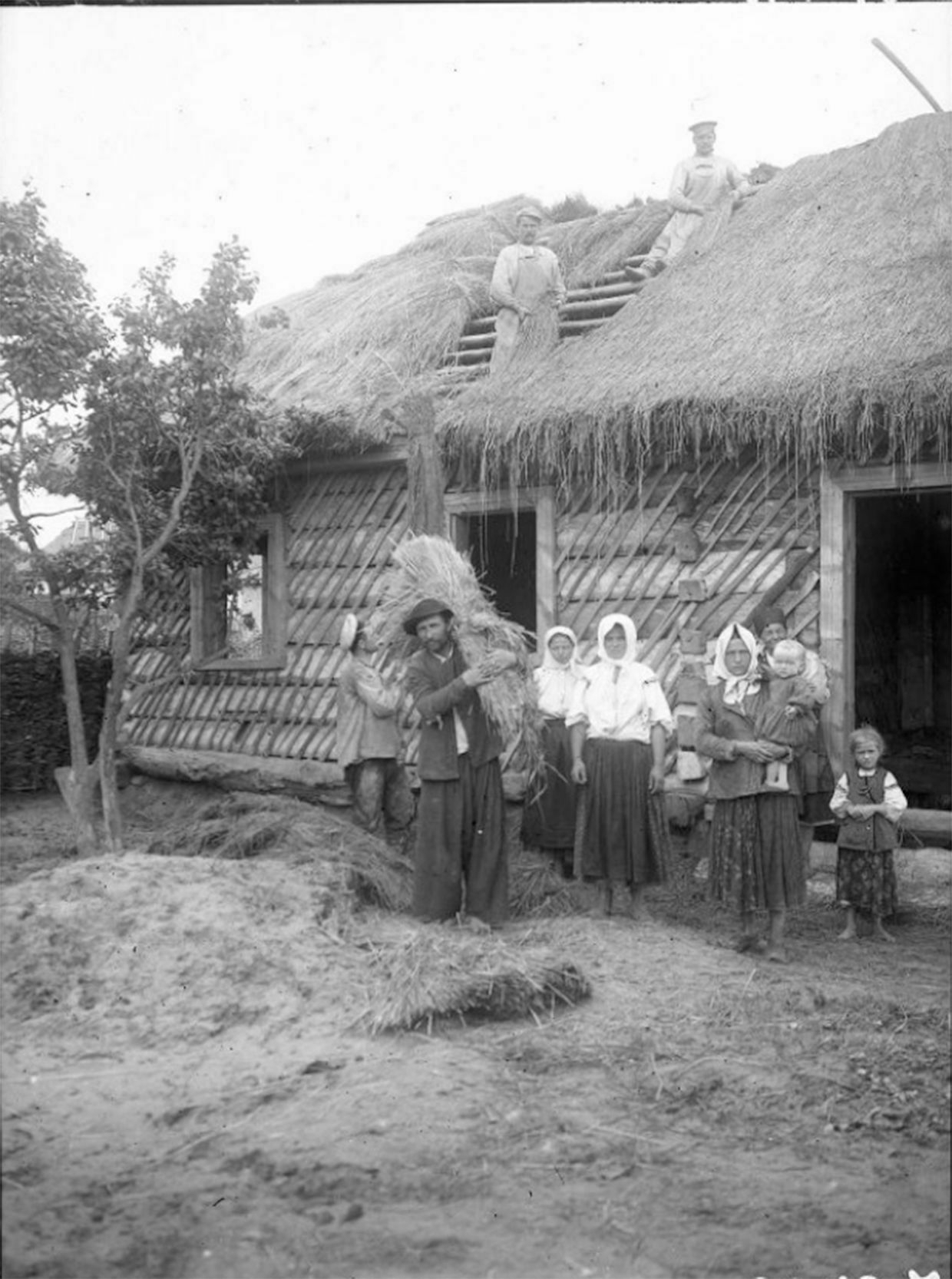

1,3: Conceptual ideas for Ukrainian Pavilion. (Ukrainian Pavilion) 2: Straw roof construction in Kyiv Oblast, Ukraine, 1911. (Oleksii Makarenko) “After the liberation of Ukrainian territories from occupation, we began traveling across different regions and saw firsthand the devastating scale of destruction caused by the war.” And thus the Dakh project was born.
In total, the group has repaired more than 400 roofs in five regions across Ukraine. Materials and labor for one roof for a private home cost around 2,000 euros and the work is finished within a day.
That autumn, the group began to work in villages across the Kharkiv Oblast, often no more than five or 10 kilometers from the Russian border. It was an area where the Russian military was training soldiers to target civilians with FPV drones, and the damage to both human life and human structures was enormous.
While the area had been evacuated, Kalmus says, “People are so connected to their land and the place they grew up they won’t leave,” especially vulnerable groups, often the elderly, the ill, or large families unable to afford the costs of relocation.
The area was shelled heavily until September 2022, and for nearly two years afterwards there was relative calm, without the regular shelling that would come later. In that period, Kalmus, Ada Wordsworth and their team went from village to village, often staying for weeks, where they rented homes, bought necessary materials, and hired locals to carry out repairs.
By spring 2024, KARPP and Livyj Bereh had secured additional funding and were preparing to organize an expanded rebuilding effort. That’s when Russia launched a renewed ground offensive in Kharkiv Oblast, restarting near-constant shelling and targeted attacks on civilians. The offensive ground Livyj Bereh’s efforts to a halt, with the village heads deciding it was simply too dangerous to rebuild.

Installation work underway at the Ukrainian Pavilion for the Venice Biennale, shown in this undated photograph. (Maxime Faure / Ukrainian Pavilion) “It was a crushing moment for me,” Kalmus says. “I decided okay, I will not let them take another project from me, so I enrolled in engineering courses to learn how to build drones."
By refocusing on drones, building and donating them to local Ukrainian units, Kalmus conceived of erecting what she called a drone canopy that would not only shield these communities from attack but also could fight back. Thus, the Klyn Drone Project came to life.
“Klyn Drone became a continuation of our reconstruction project, but in a different form. This is not rebuilding after destruction. It is protection before destruction,” Kalmus writes in her summation for the Biennale pavilion.
Despite being composed of volunteers, without a professional architect among them, this year Livyj Bereh was awarded the Royal Academy Dorfman Prize, one of the most prestigious architecture prizes in the world. “The Dorfman Prize was weird because I am not an architect. When I entered that jury, I was just saying what we’d done… and I was thinking, okay, I am not better or worse, but I am from another planet."
In their decision, the jury described Livyj Bereh as “An architectural act of collective care and resistance across the country… To provide architecture that defies the destruction of neighborhoods, especially in a moment that is about erasure, is of deep importance… as powerful as any civic monument and documented with the unflinching eye of the greatest war art."
In the exhibition, there’s an anecdote passed around, a story about a Russian missile striking a roof of thatched reeds much like the one featured in Bogdana Kosmina’s installation in Venice.
As the story goes, the missile penetrated the structure woven together in just the right way, designed to withstand fires and storms, but did not detonate, as it would have had it struck an object composed of less forgiving concrete or steel.
Later plucked away, the missile was detonated under controlled conditions with no damage to nearby homes.
The installation is thus an ode to the archiving efforts of Tamara and the fieldwork and sacrifice of Livyj Bereh.
Rather than fetishizing a nostalgic and frozen past, the work exists in the tradition of grassroots resistance, vernacular survival, and creative preservation.
Instead of proposing some new future solution in architecture, Vernacular Hardcore amplifies existing efforts before the global consortium of investors and NGOs take over and propose quick fix solutions that may not benefit local communities in the long run.
The exhibition will be toured to Ukraine after Venice, including a hoped-for presentation at the Construction Festival in Dnipro in the summer of 2025.
It is a message of Ukrainian vernacular survival and future.
The Venice Architecture Biennale runs from May 10 until Nov. 23, 2025.
Ukraine must look beyond the EU for its agricultural future
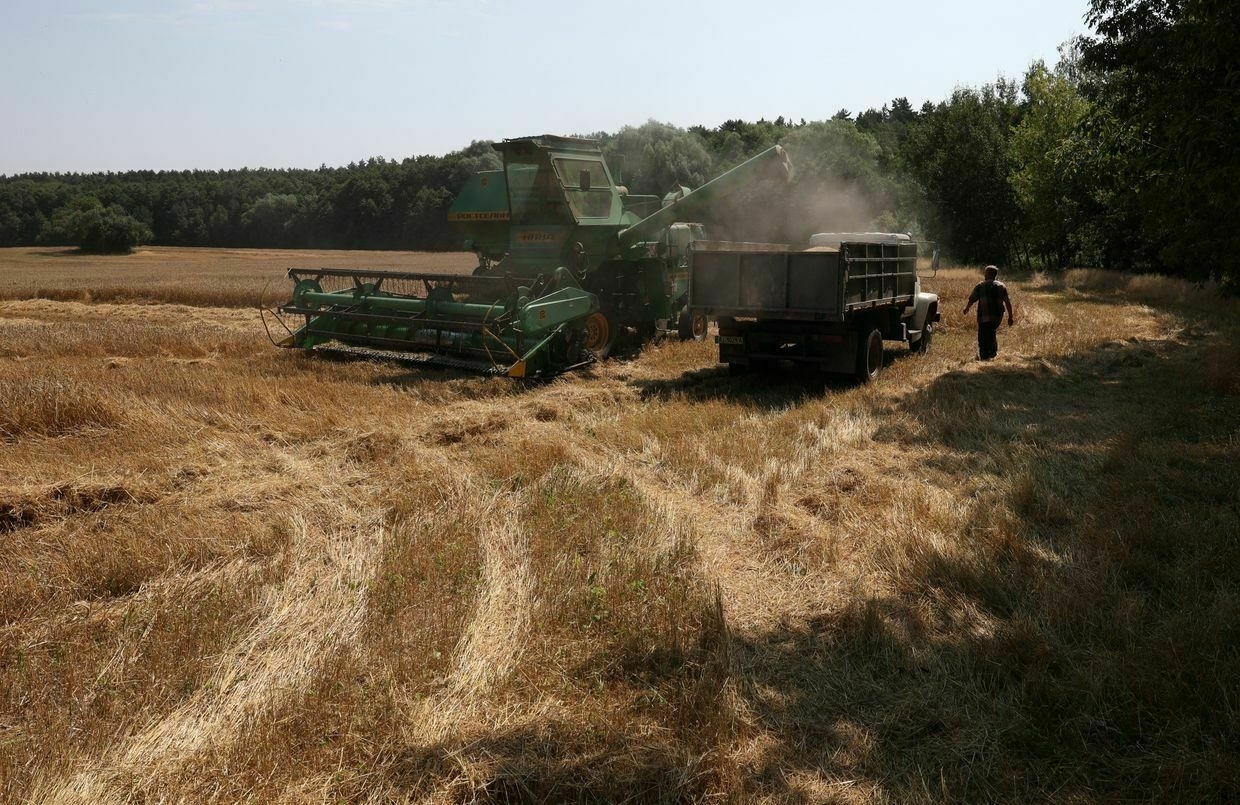
The end of the European Union’s tariff-free trade preferences for Ukrainian agricultural products is more than just a policy change, it’s a wake-up call.
For years, the EU has served as the largest and most reliable market for Ukraine’s agricultural exports. But as Brussels rolls back preferential quotas, Ukraine must rapidly diversify and open up new non-EU markets to safeguard its economy and cement its role in global food security.
Ukraine stands at a trading crossroads. It must now decide which path to go down as the European Union plans to apply much higher tariffs on agricultural and other exports as soon as next month.
The Breadbasket of Europe — and beyondUkraine has long been known as the breadbasket of Europe. Rich in black soil and abundant in agricultural know-how, the country is a global powerhouse in food production. Even under the shadow of war, after Russia’s invasion, the sector remains a cornerstone of the national economy.
Despite missile strikes, minefields, and logistical nightmares, Ukrainian farmers have kept working. Agricultural products account for 60% of all exports, bringing in an estimated $25 billion in earnings over the past year. The world depends on Ukrainian grain, oilseeds, and foodstuffs. Ukraine is the largest global exporter of sunflower oil, one of the biggest corn exporters, and a major supplier of wheat and barley. That strength must now be redirected toward a broader set of trading partners.
Ukraine doesn’t just offer grain, it offers food security.
Relying too heavily on any one market, especially one where political and economic headwinds can shift quickly, is risky. The EU’s new limits underscore the vulnerability of Ukraine’s agri-export model. To stay competitive, Ukraine must engage more vigorously with other countries in the Middle East, North Africa, and Asia, many of which face mounting food insecurity and would benefit greatly from stable Ukrainian supply lines.
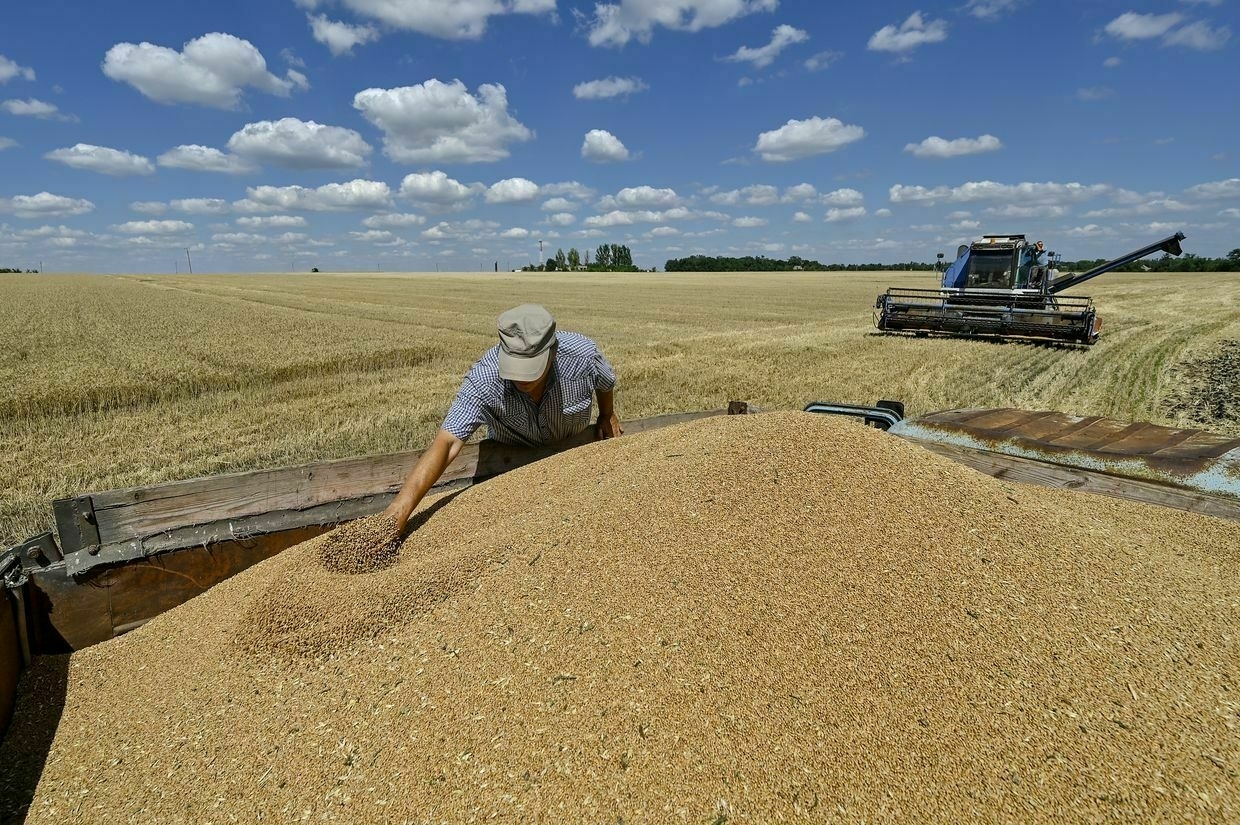
A man spreads winter wheat in a truck during harvest season in the fields of the Dnipro Waves Agricultural Production Cooperative in the village of Dniprovi Khvyli, Zaporizhzhia Oblast, Ukraine, on June 29, 2024. (Dmytro Smolienko / Ukrinform / Future Publishing via Getty Images) Initiatives like the “Grain from Ukraine” program, providing for some of the poorest countries in Africa, have already shown the strategic value of Ukrainian agriculture. Citizens in Ethiopia, Sudan, Kenya, and many other countries have benefited. But these efforts must now expand from humanitarian aid to long-term commercial partnerships.
What Ukraine has to offerUkraine doesn’t just offer grain, it offers food security. As climate change and conflict disrupt food systems across the globe, Ukraine’s agricultural output can serve as a stabilizing force. The country’s ability to deliver large volumes of high-quality produce, often at competitive prices, makes it a natural partner for countries with growing populations and food import needs.
In addition to bulk commodities, Ukraine is increasingly competitive in higher-value products. The country exports hundreds of millions of dollars of organic goods to dozens of countries, despite the war. With growing global demand for sustainable, ethically produced food, Ukrainian agribusinesses are well-positioned to enter niche and premium markets if they get the right support.
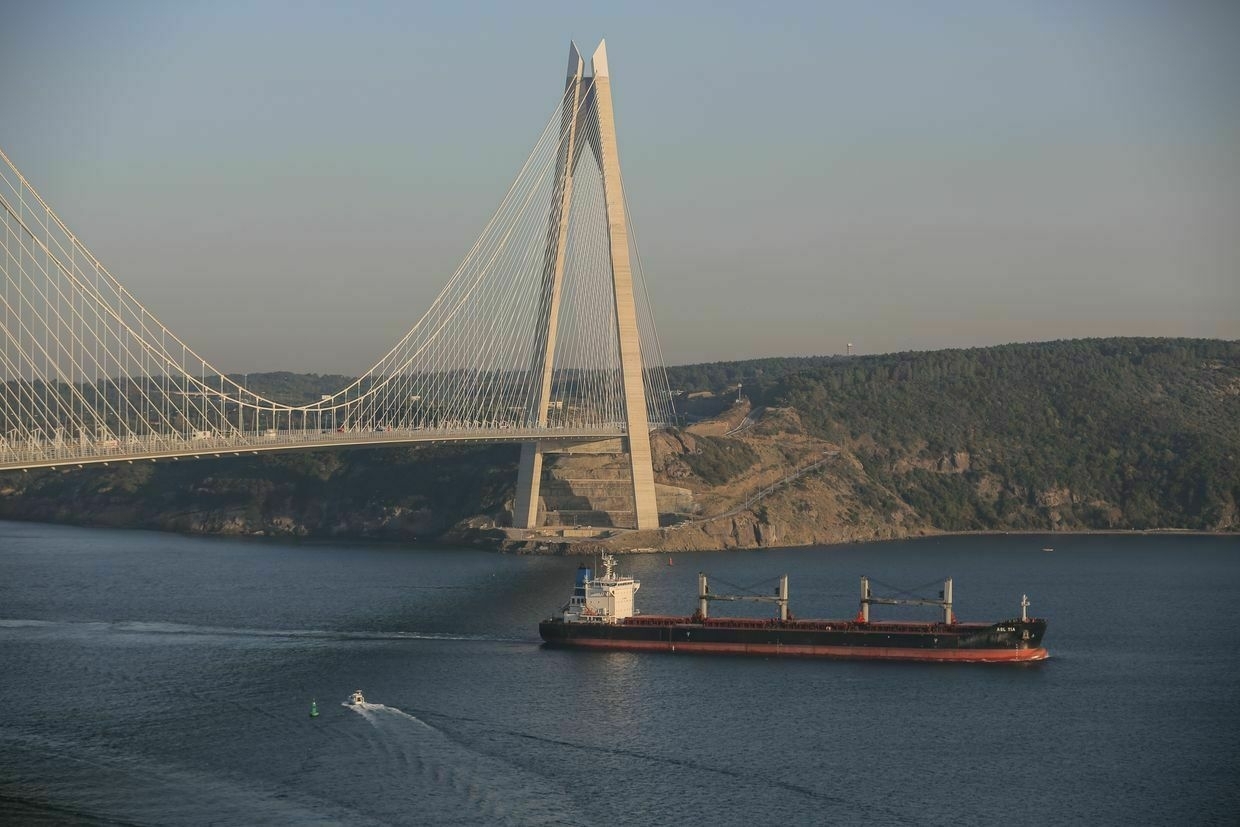
Bulk Carrier ASL TIA, which departed from a Ukrainian port, crosses the Bosphorus in Istanbul, Turkey, on Nov. 2, 2022. (Cem Tekkesinoglu / dia images via Getty Images) The investment gapHere’s the catch: Seizing these opportunities requires capital. Much of Ukraine’s agricultural infrastructure, storage facilities, railways, and processing plants need investment. Some have been damaged, degraded, or underdeveloped for decades. Logistics routes remain vulnerable. Certification standards and packaging often need to be upgraded to meet the demands of new markets.
Foreign direct investment (FDI) is critical to bridging this gap. Investors in agribusiness, logistics, technology, and processing can find long-term value in Ukraine’s vast agricultural potential. In return, their capital and expertise can help modernize the sector, unlock exports, and create jobs across the country.
Venture capital in agri-tech and climate-resilient farming, for instance, could help Ukrainian producers boost yields and diversify crops. Partnerships with multinational food companies could pave the way for Ukraine to move up the value chain — producing not just raw grain but ready-to-eat foodstuffs, sauces, baby food, and premium packaged goods.
This isn’t just about economics. It’s a matter of national security and global stability. A thriving agricultural sector boosts Ukraine’s GDP, stabilizes rural communities, and reduces dependence on international aid. It also enhances Ukraine’s geopolitical relevance by helping feed an increasingly hungry world.
Ukraine’s farmers have proven their grit. Now they need new markets and the investment to reach them. From North Africa to Southeast Asia, the demand is there. The quality is in Ukraine. What’s needed is the bridge, built through trade policy, diplomacy, and serious foreign investment.
Ukraine must sow the seeds now for a diversified, resilient, and prosperous agricultural future. And the world should be eager to help it grow.
Backroom diplomacy and battlefield reality: Ukraine at the IMF Spring MeetingsVisiting Washington during the International Monetary Fund and World Bank Spring Meetings this April felt surreal. The weather was nice, but the air was heavy with the uncertainty of the tariff war, President Donald Trump’s administration’s criticisms of international institutions, and the far more immediate tension of geopolitics betweenThe Kyiv IndependentMaria Repko
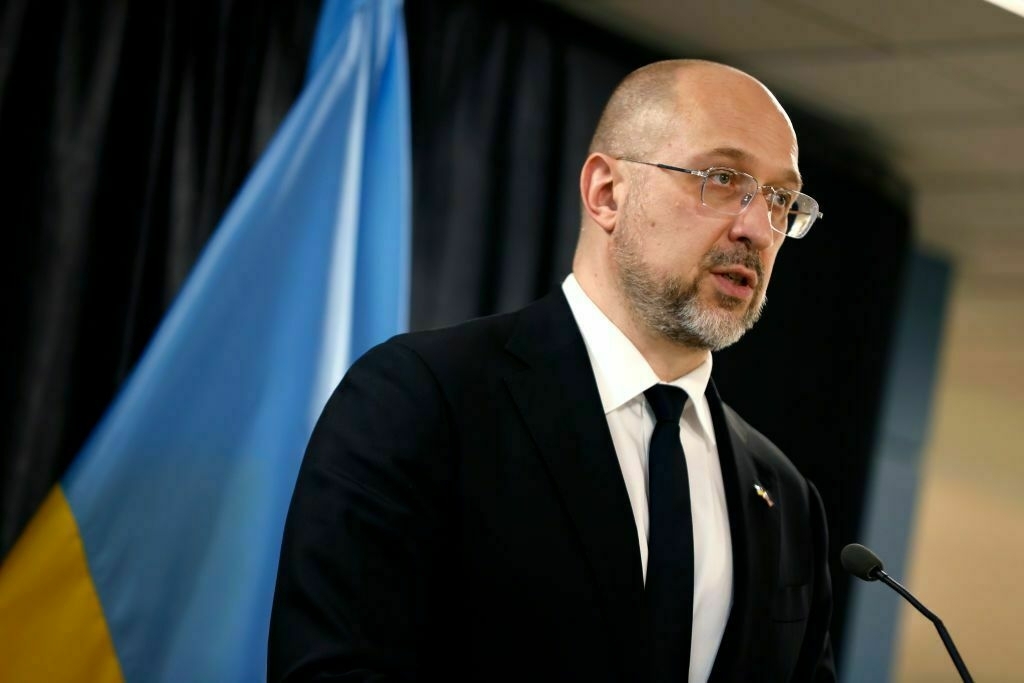
‘Everything is translation’ — 13th Book Arsenal festival in Kyiv to bridge gaps between language and war
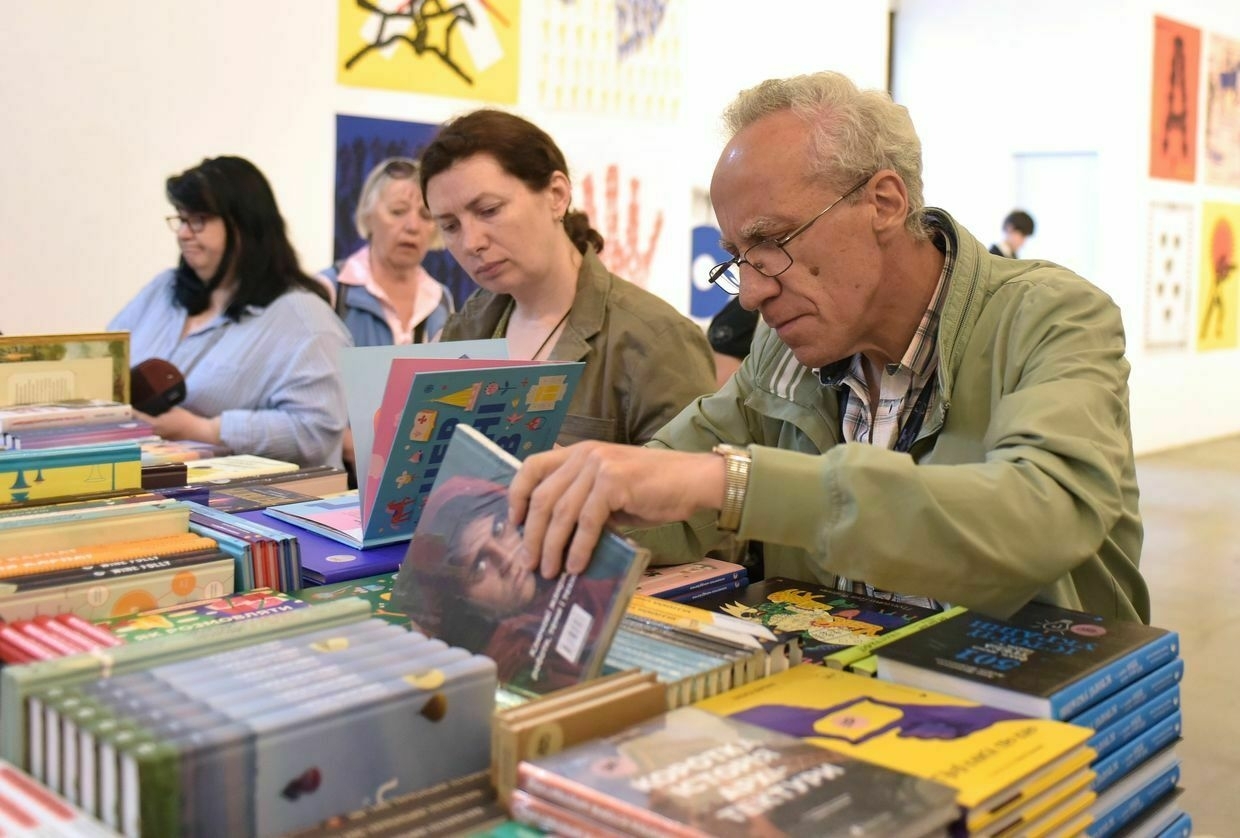
The 13th Book Arsenal festival, one of Ukraine’s premier interdisciplinary cultural events attracting voices from across the country and around the globe, will take place in Kyiv from May 29 to June 1.
Over the course of four days, the festival offers a number of discussion panels, book presentations, public interviews, and even some film and musical performances that all relate to the theme of this year’s festival.
This year’s program is curated by American historian Marci Shore and Ukrainian journalist Oksana Forostyna, who together have shaped the events of the festival around the theme “Everything is Translation.”
The theme invites both participants and attendees to explore the untranslatable — and to consider what the gaps in language reveal about the invisible boundaries between cultures, perspectives, and human experience, particularly in times of war.
Each year, the festival’s curators choose a theme that reflects the cultural climate. Last year’s Book Arsenal, the first to take place since the start of the full-scale war, was centered around the theme “Life on the Edge.” In the aftermath of the Covid-19 pandemic, the 2021 theme was “Optimistis-Skeptics.”
“One of the most important tasks for the festival’s team now is to create the safest and most inclusive festival space possible,” Yuliia Kozlovets, the director of Book Arsenal, told the Kyiv Independent.
“The theme of war is a cross-cutting one, when stands of military and volunteer initiatives are an organic part of the festival space. Because this is our Ukrainian contemporary culture, and this is our life today.”
For this year’s festival, the Kyiv Independent joins Book Arsenal as an official media partner, further underscoring its commitment to fostering critical dialogue and elevating Ukrainian voices on the world stage.
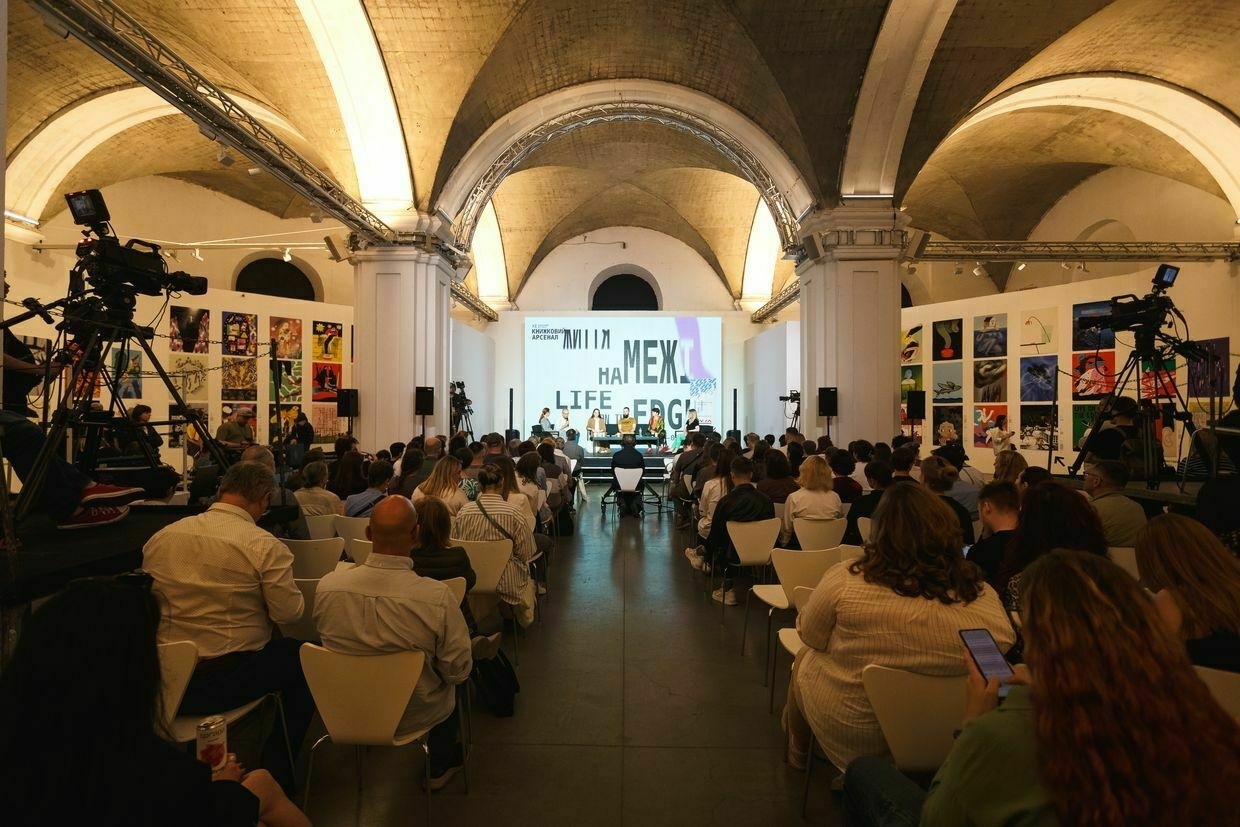
People listen to the discussion “The Edge Within Us” during the 12th International Book Arsenal Festival in Kyiv, Ukraine, on May 30, 2024. (Yurii Stefanyak / Global Images Ukraine via Getty Images) Several of the Kyiv Independent’s team members — editor-in-chief Olga Rudenko, chief executive officer Daryna Shevchenko, War Crimes Investigation Unit reporter Danylo Mokryk, and culture reporter Kate Tsurkan — will take part in panel discussions at this year’s Book Arsenal festival.
The full schedule for this year’s Book Arsenal is available on the festival’s website.
While events featuring international speakers on the main stage will be held in English, most of the program will be conducted in Ukrainian. However, several Ukrainian publishers — including Ukraїner, Projector, Rodovid, IST Publishing, and #knygolove — will offer a selection of their books in English translation for purchase.
Mystetskyi Arsenal’s art books, which highlight Ukraine’s artistic heritage, showcase prominent contemporary artists, and document experimental projects on key cultural movements, will also be available in bilingual Ukrainian-English editions.
The official opening of this year’s Book Arsenal festival is scheduled for 5 p.m. on May 29, but attendees can begin to enter the premises of Mystetskyi Arsenal, Kyiv’s National Art and Culture Museum Complex, from 4 p.m.
Tickets for the festival can be purchased online or at the ticket counter at Mystetskyi Arsenal – either 200 hryvnias ($5) for a one-day ticket of 500 hryvnias ($12) for all four days of the festival.
Notable events
(in English unless otherwise stated):
- Panel discussion “Everything is Translation” featuring Ukrainian poets Iya Kiva and Ostap Slyvynsky, and Polish poet ariel rosé, moderated by Swedish literary critic Carl Henrik Fredriksson. Taking place at 6 p.m. on May 29, the conversation will explore how translation can be used as a tool against imperialism, particularly in times of war.
- French journalists Doan Bui and Emmanuel Carrère will join several Ukrainian colleagues for a unique live performance at 8 p.m. on May 29 — a staged retelling of powerful wartime journalism from local and international reporters, photographers, and artists.
- On May 30, Danylo Mokryk from the Kyiv Independent’s War Crimes Investigations Unit will speak on the panel “Reportage as Investigation: A Conversation on the Practice of Long-Form Reporting,” alongside Magdalena Sodomkova. Moderated by Tetiana Pushnova, the event is organized in partnership with the Czech Centre in Kyiv and will begin at 2:30 p.m.
- The Kyiv Independent’s editor-in-chief Olga Rudenko and culture reporter Kate Tsurkan will join Ukrainian author Myroslav Laiuk in the panel discussion “War of Narratives. Do We Have Anything to Counter Russian Influence on the Vision of This War Abroad?” Moderated by Julia Tymoshenko, the event will take place in Ukrainian on May 30 at 6 p.m.
- The Kyiv Independent’s chief executive officer Daryna Shevchenko will moderate a panel titled “The Ukrainian Narrative: A Strategic Script. How to Speak Effectively About Ukraine Abroad?” Scheduled at 7 p.m. on May 30, the discussion will feature Viktoriia Narizhna, Vira Kuryko, Halyna Skipalska, and Olha Kari, and is co-organized by the Kyiv Independent.
- On June 1 at 3 p.m., British journalist Peter Pomerantsev will discuss his new book “How to Win the Information War?” in conversation with Olga Rudenko.
- Founder of Spravdi Liubov Tsybulska will also speak with American journalist Simon Shuster on the topic “How a book can change the attitude toward Ukraine on the world stage” on June 1 at 5 p.m.
Russia killed Ukrainian author Victoria Amelina — but not her words or quest for justiceUkrainian author Victoria Amelina never got to finish writing her book “Looking at Women, Looking at War.” After she was killed in a Russian missile strike on Kramatorsk in Ukraine’s eastern Donetsk Oblast in 2023, it fell upon her closest friends and colleagues to do what they could toThe Kyiv IndependentKate Tsurkan
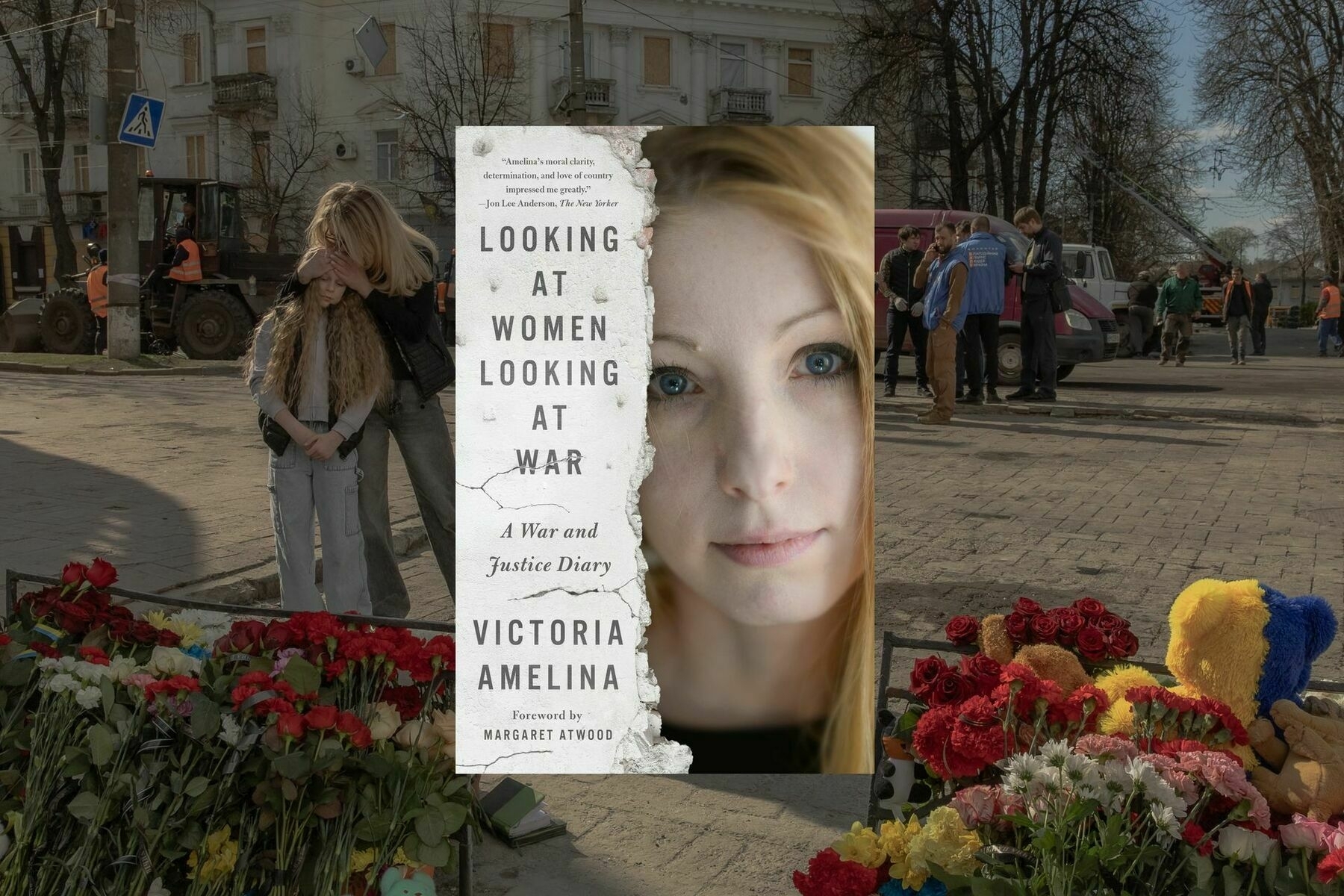
‘Almost all Russians poisoned by imperial propaganda,’ says journalist Ekaterina Barabash after escaping Russia
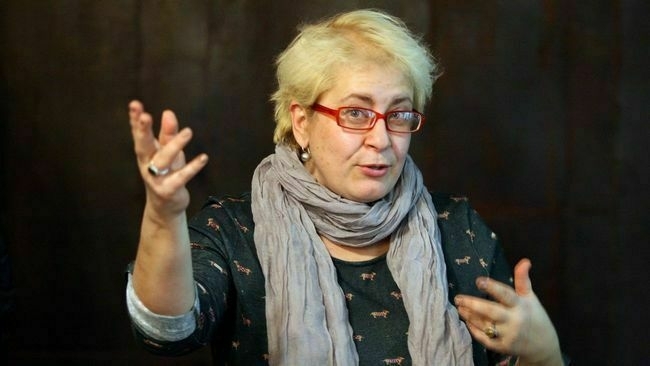
In early May, 64-year-old film critic and journalist Ekaterina Barabash made international headlines when it was revealed that she had pulled off a daring escape from house arrest in Russia and sought political asylum in France.
Barabash was put under house arrest in February for posts that she had made criticizing Russia’s war against Ukraine. She was accused of spreading “knowingly false” information about the military on her social media.
The Kremlin has intensified its crackdown on dissent in Russia since the start of its full-scale war against Ukraine, not only targeting those who dare to speak out against the war but also fostering a climate of surveillance that hearkens back to the worst periods of the Soviet era, urging Russian citizens to police one another.
For Barabash, the war struck a personal chord — she is the daughter of a renowned Ukrainian academic and her son lives in Ukraine with his family. Unlike many Russians — who either seek to justify the war or retreat into indifference — Barabash felt a moral imperative to speak out
“Most people in Russia aren’t willing to look for the truth,” Barabash told the Kyiv Independent from France.
“They’ve always been taught that Ukraine is just a part of Russia. But this belief is a kind of poison. It’s something that every Russian grows up with, often without even realizing it.”
In this exclusive interview, Barabash reflects on the moment she decided to risk her life to flee Russia, how her Ukrainian heritage shaped her perspective on Russian culture over the years, why even “good Russians” who oppose the war don’t understand Ukraine, and the bleak future facing anyone with a conscience who chooses to remain in today’s Russia.
This interview has been edited for length and clarity.
The Kyiv Independent: Since the idea for this interview originally came after you escaped house arrest in Russia, I just wanted to start off by asking, how are you doing?Ekaterina Barabash: I escaped from house arrest in Russia on April 13. I got past the checkpoints and left my home. We had a plan — I was supposed to be free within 24 hours. But things didn’t go as expected, and I ended up having to hide for two and a half weeks. Unfortunately, I can’t share all the details right now. It’s a shame, because some parts are really interesting. Maybe one day I’ll write about it — maybe even a small book.
During that time, I hid in many places — in forests, fields, villages, and so on. It was a bit frightening and definitely dangerous. I knew I had to leave quickly, and that sense of urgency never left me.
We had hoped they wouldn’t notice my absence for at least a few hours, but they realized I was gone very quickly — within just minutes, maybe half an hour. They started searching for me almost immediately. I don’t know all the details of how the search was carried out.
After that, I had to cross the border into a European country. Of course, it was an illegal crossing. From there, things were arranged to help me move forward. A woman from Reporters Without Borders (RSF) came to meet me, and she helped bring me safely to Paris.
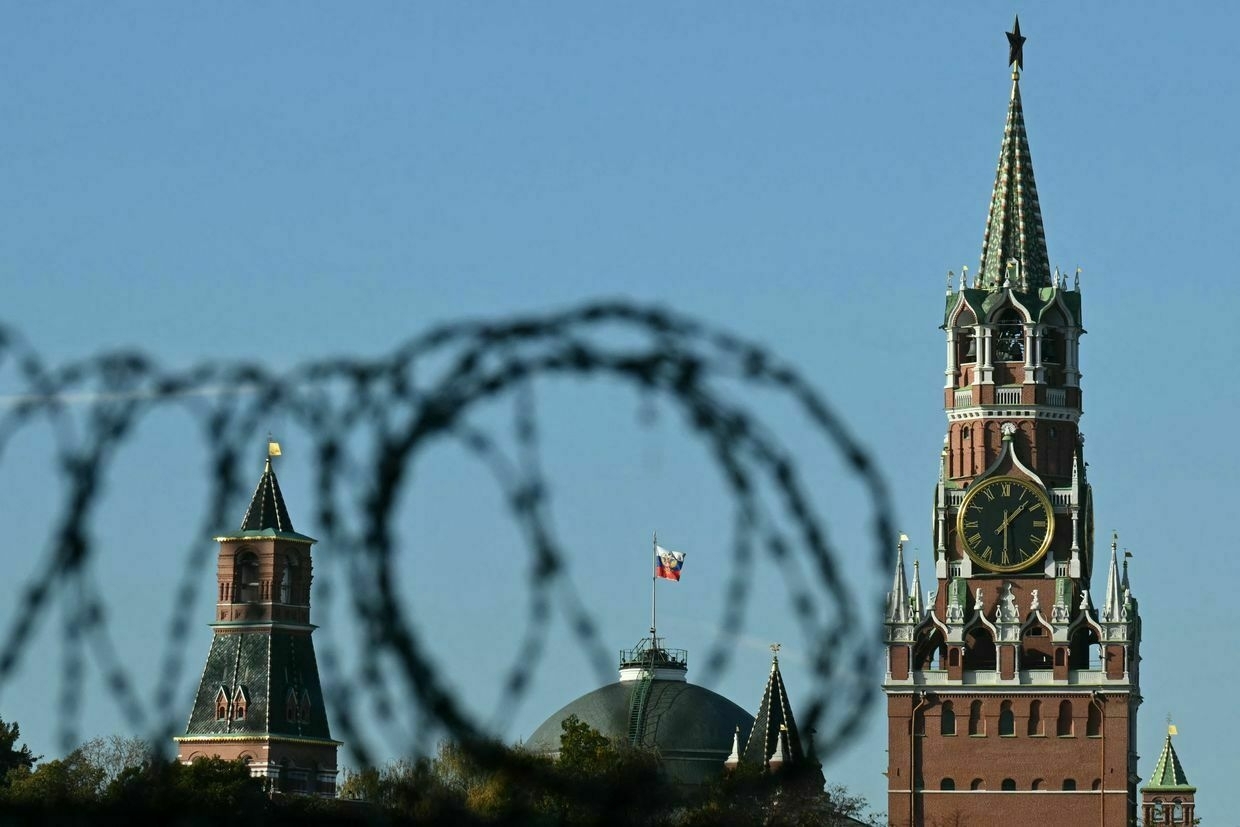
The Standard of the President of the Russian Federation flutters on top of the dome of the Senate Palace, one of the main buildings within the Kremlin compound, as seen through a barbed wire in Moscow, Russia, on Oct. 22, 2024. (Natalia Kolesnikova / AFP via Getty Images) The Kyiv Independent: Was there a specific moment when you decided that you would take the risk and escape, or did you know from the moment you were arrested that this was what you had to do?
Ekaterina Barabash: No, I didn’t make the decision right away. At first, when they placed me under house arrest, it felt almost like a breath of fresh air. It was so unexpected — usually, in political cases, people accused of such “crimes” are held in jail while they await trial. But the judge said that because I had a very old mother, and I myself am not so young, they decided to place me under house arrest until the court date.
At first, it gave us hope — even my lawyer believed that I might only receive a large fine rather than jail time. But within a few days, after some conversations with certain people, I realized the risk was very high. The chance of being sentenced to prison was real. I believed I could face five, six, even seven years in a Russian prison — and a Russian prison is worse than death.
That was when some people from Europe, who help political prisoners like me, told me clearly: even though I was at home, I needed to plan my escape.
At first, I was in shock. I never imagined I would have to leave — especially not my mother, who is 96 years old. But eventually, I realized it was the best option. I had to choose between two impossible outcomes: prison or fleeing the country. So, of course, I chose to escape.
That’s when we began the operation. I had coordinators from Europe who guided me through every step. They told me what to do, what to prepare, and explained our plan in detail.

Russian film critic and journalist Ekaterina Barabash draped in the Ukrainian flag in a Facebook post from early March 2022. (Facebook) The Kyiv Independent: What makes your case unique among other Russian opposition figures is that you have very strong ties to Ukraine. Does your Ukrainian heritage influence how you view Russia and Russian culture?
Ekaterina Barabash: Yes, I was born in Ukraine, though I was very young when we left — I was only five months old when my parents moved to Moscow. So my entire life has been connected to Russia. I always felt like I had two motherlands: Ukraine and Russia. I was born in Ukraine, but I was raised and educated in Russia, in Moscow.
My family has always had very strong ties to Ukraine. My father, who passed away five months ago, was a well-known figure there. He was a literary critic and the author of many books written in Ukrainian. He was highly respected in the academic community.
Years earlier, my son also moved to Ukraine for personal reasons. He lives there now with his wife and my grandchildren.
So when the war began, my situation was very different from that of my friends in the Russian opposition. For me, it was not just a political crisis — it was a personal tragedy. My closest relatives were there, being targeted by drones and missiles. And I couldn’t stay silent. I couldn’t hold back my grief or outrage.
I couldn’t keep this anger and pain inside me. I started to speak out, openly accusing the Russian government and military of killing innocent people and invading Ukraine. I wrote things like, “I hate you — you are murderers."
My perspective on the war was deeply personal. It wasn’t just politics for me — it was about my family, my roots, and the suffering of people I love.
Even intelligent and well-educated Russian people often don’t truly understand Ukraine. Almost all Russians have been poisoned by imperial propaganda. They’ve been raised with it — it’s part of their worldview.
They’ve always been taught that Ukraine is just a part of Russia. That the Ukrainian language is just a slightly different version of Russian. That Ukrainians are our “younger brothers,” and we are all one people — Russians. I’ve heard this over and over, even from good people, even from those who are against the war.
But this belief is a kind of poison. It’s something that every Russian grows up with, often without even realizing it.
I knew at least a little about Ukrainian culture and history — something most Russians don’t. I’ve done interviews and written about Ukrainian culture. So yes, my point of view was different from the beginning.
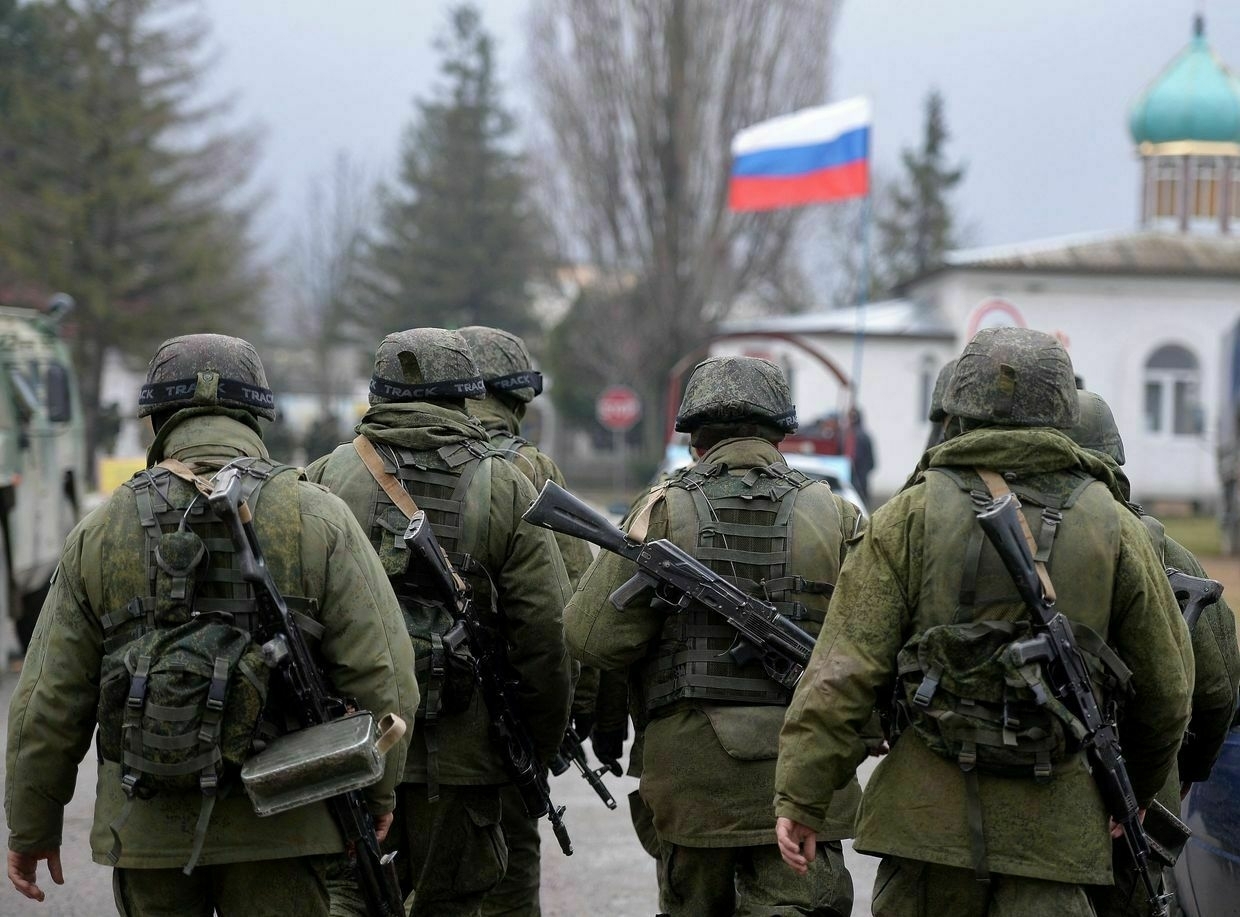
Russian soldiers patrol the area surrounding the Ukrainian military unit outside Simferopol, Crimea, on March 20, 2014. (Photo by Filippo Monteforte / AFP via Getty Images) The Kyiv Independent: We know that Russia’s war against Ukraine started in 2014, not 2022. In what ways did Russian public opinion about the war in Ukraine change during those eight years?
Ekaterina Barabash: Most people in Russia simply didn’t care — and they still don’t. Even many anti-Putin individuals, including some of my friends, didn’t grasp that the war actually started in 2014. When the invasion happened in 2022, they acted as if it was the beginning of the war. I had to remind them, “No, the war started eight years ago."
Later on, many of them started to understand, at least a little, what had been happening. But the truth is, almost no one cared. They saw (the invasion of Ukraine’s Donetsk and Luhansk oblasts) as some small conflict in eastern Ukraine, maybe with some Russian soldiers involved, but they didn’t recognize it as the coming of something horrific.
They didn’t understand the connection between the illegal annexation of Crimea and the war that followed. Yes, Crimea was officially part of Ukraine. But they thought that (Soviet leader Nikita) Khrushchev had “given” Crimea to Ukraine many years ago and that Russia had long claimed it.
Then came the war.
The Kyiv Independent: What would you want to say to people still in Russia?
Ekaterina Barabash: You know, I’ve recently realized one thing that I didn’t understand at first: it’s impossible to change their minds. It’s like religion — you either believe or you don’t. If you want to know the truth, you can seek out information, but most people in Russia aren’t willing to look for it.
There’s a common response I get when I ask why they don’t check alternative sources, like Ukrainian media. There are plenty of (Ukrainian) outlets that offer Russian-language versions of the news, and many people understand English, so they could easily access European media, too. Yet, they only rely on Russian sources.
The answer I often hear is, “Everyone lies.” They’re willing to accept the lies from Russian propaganda, but they won’t even consider competing narratives from other sources. “Everyone lies,” they say. It’s an awful argument — a foolish one, really.
It’s unfortunate, really, but what can I say to these people? Honestly, there’s nothing more I can say. If you’re scared, just stay silent. I understand — everyone has families, property, and they don’t want to end up in jail. But if you care, then leave Russia, if you can, if it’s possible.
I know it’s not easy to leave behind elderly parents. I never intended to leave mine. But my father told me several times, “Leave, leave, leave. The end will be very, very dramatic.” Still, I couldn’t bring myself to go. I had to take care of them.
But if you care, if you can leave, then do it. Russia is not a place to stay. If you have any sense, you’ll understand that.
Note from the author:
Hey there, Kate Tsurkan here, thanks for reading my latest interview. It’s horrific that in Russia you’re considered a criminal for calling out the actual criminals who are murdering innocent people, but thankfully we have people in this world like Ekaterina Barabash who are not afraid to call evil what it is. I hope her story inspires you and helps show that if a 64-year-old grandmother can stand up to authoritarianism in this world, then so can you. It you like reading about this sort of thing, please consider supporting The Kyiv Independent.Decolonizing Russia — what it means and why it mattersSpeaking to France’s National Assembly on April 11, Russian opposition leader Vladimir Kara-Murza did not petition Europe for the Kremlin’s total military defeat. Yet, while answering one of the many questions posed to him, he talked about how a colleague supposedly learned that ethnic Russians find it “psychologically difficult” to kill Ukrainians because they are so “similar.” “They say… we are alike, these are very closely related peoples, as everyone knows: almost the same language, the sa The Kyiv IndependentKate Tsurkan
The Kyiv IndependentKate Tsurkan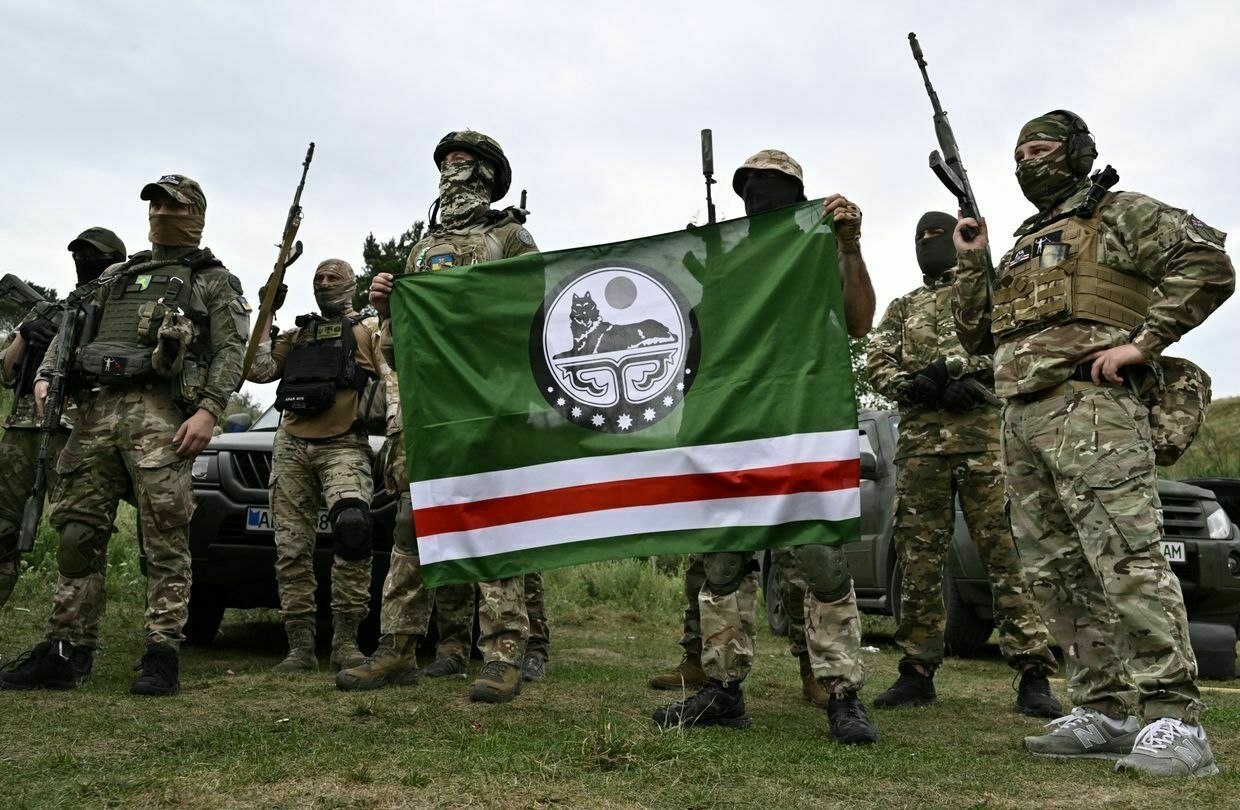
Hungary's covert intelligence operations in Ukraine: espionage scandal threatens fragile ties with Kyiv
For the first time in Ukraine's history, the Security Service of Ukraine (SBU) has dismantled a Hungarian military intelligence spy network operating in Zakarpattia. Experts believe that Budapest is no longer concealing its interests, prompting inquiries into the implications of this exposure.
On Friday, May 9, the Security Service of Ukraine announced the unprecedented exposure of a Hungarian military intelligence network in Zakarpattia region.
According to investigators, the network's primary mission was to survey the region's military infrastructure, specifically identifying vulnerabilities in its ground and air defense systems. Additionally, the operatives analyzed the socio-political climate, particularly public sentiment towards the potential arrival of Hungarian troops. "The agents were tasked with collecting information on Zakarpattia's military defenses and assessing local behavior scenarios in case Hungarian forces entered the region," stated the SBU.
Authorities detained two key network operatives. The first, a 40-year-old from the Berehove district and a former military personnel, had been recruited by Hungarian intelligence back in 2021 and was placed on standby. The second individual is a former member of Ukraine’s Defense Forces, who left military service in 2025. Her role involved gathering intelligence on aviation equipment, including planes and helicopters, and defense systems at her former military base. According to the SBU, the network was overseen by a seasoned Hungarian military intelligence officer, whose identity has been confirmed.
"The network’s overseer was an active-duty officer from Hungary's military intelligence, whose identity has been verified by our services," noted their press office.
According to former SBU employee Ivan Stupak, Hungary has engaged in subversive activities against Ukraine for approximately two decades. This conduct was previously more covert, as Ukraine consciously avoided straining relations given Hungary's EU and NATO membership. However, in the last three and a half years, Hungarian activities have become increasingly transparent, leading Stupak to anticipate further deterioration in relations. Highlighting the recent apprehension of Hungarian spies in Ukraine, which he deems "phenomenal," Stupak clarifies that previously, Hungarian agents weren’t arrested to maintain a diplomatic facade.
Stupak interprets the SBU operation as having received political clearance at the highest level. Without the Ukrainian president's explicit approval, the operation might have been unfeasible. Stupak praises the SBU's efforts, considering them "masterful," given the language barriers involved. "These individuals communicated in Hungarian, recognized as one of the world's most challenging languages, complicating efforts to intercept radio and phone communications," says Stupak. Furthermore, he highlights the challenge in sourcing reliable translators within Zakarpattia's closely-knit Hungarian community. Stupak foresees further arrests among Hungarian intelligence personnel, particularly those operating under the guise of cultural centers.
The former SBU representative suggests that Hungary could have been collecting intelligence to share with Russia. "I think they could have been trading intelligence on Zakarpattia, on what enterprises are functional, what repair depots for Ukrainian equipment exist," Stupak opines. Additionally, Hungary might aim to destabilize the region internally. "While they might not pursue annexation of Zakarpattia themselves, they could incite internal turmoil, leading to unrest," the expert adds.
Political expert Oleg Posternak believes the arrests may not exacerbate Ukraine-Hungary relations since they are already strained. "Hungary currently holds a firm stance. Also contributing to tensions is Orban's maneuver to poll Hungarians on their stance regarding Ukraine's EU membership," Posternak explains. He emphasizes that anti-Ukrainian rhetoric is a strategic element of Viktor Orbán's political agenda to maintain his popularity, especially in rural Hungary. The expert suggests that with Orbán’s waning support at home, he is using a tough stance against Ukraine to boost his standing.
However, it’s acknowledged that Ukraine has made substantial gestures to mend ties with Hungary. Notably, Posternak mentions Prime Minister Orban's visit, meetings with Ukrainian officials, and legislative amendments addressing Hungarian grievances. Yet, he cautions, Hungary's posture remains aggressive. Nonetheless, there is hope for reconciliation, especially considering the Ukrainian parliament’s decision to maintain Hungarian language provisions in education. A pivotal aspect, Posternak argues, will be Hungary's approach to sanctions against Russia and support for Ukraine’s EU accession negotiations. "We hope to see significant movement by late May-June, indicating whether Hungary will exercise its veto over Russian sanctions extensions," he concludes.
Posternak acknowledges Hungary's foreign policy is subject to the dynamics in Brussels, Moscow, and Washington. Hungary relies heavily on Russian energy, leveraging this dependency in EU negotiations. Additionally, Prime Minister Orbán remains attuned to Washington’s strategies and has a personal rapport with former U.S. President Donald Trump.
What will the new pope mean for Ukraine?
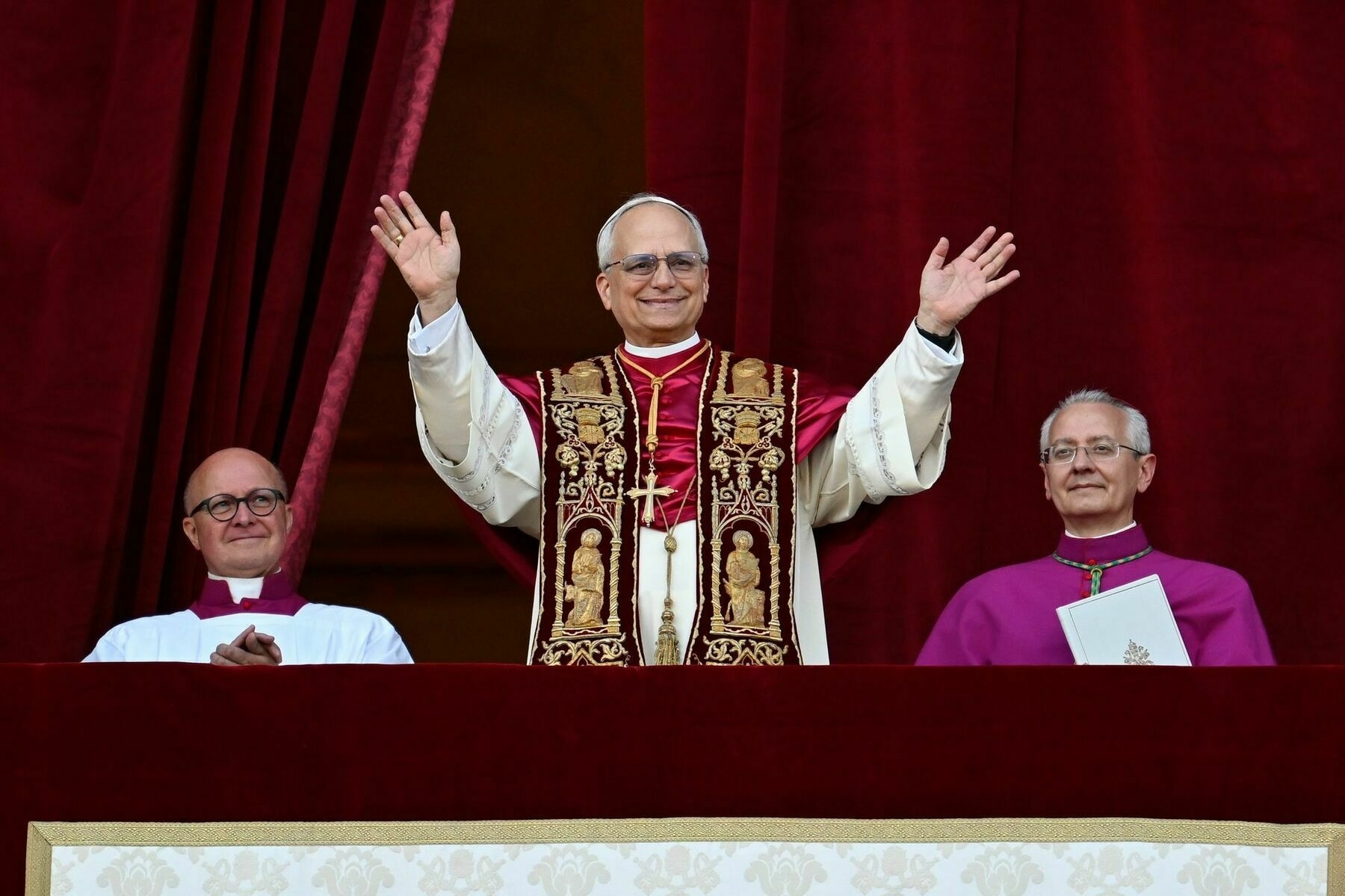
With the announcement that Cardinal Robert Francis Prevost has been chosen as the new pope and leader of the Catholic Church, Ukrainians are wondering what the surprise appointment of the American-born pontiff will mean for their country.
Past comments made by the new pope, who has taken the name Pope Leo XIV, quickly surfaced to form an idea of his views on immigration, gay rights, climate change, and the current U.S. administration. But with no similar public record of statements on Russia’s invasion, Ukrainians are left scrutinizing his public comments and hoping the world leader’s stance toward the ongoing war will benefit their country.
“I am not aware of any statements or actions the current pope has made regarding the war in Ukraine,” said Father Ihor Yatsiv, a spokesperson for the Greek Catholic Church in Ukraine, which falls under the Vatican’s leadership.
“So we can only operate based on who he is through his experience, his human life experience, his service, where he has been, where he comes from, and, accordingly, also after whom he comes.”
One potential sign of the pope’s future policies is in the selection of his new name, one of the first decisions a new pope makes. While Pope Leo XIV has not yet said why he selected Leo, a pontiff’s new name often refers to previous pontiffs whose footsteps they wish to follow.
“We identify Pope Leo XIV as a pope of hope for Ukraine.”
Pope Leo XIII, the most recent pope to use this name, is widely remembered for his championing of social policies and social justice.
He was “a pope who paid attention to the socially vulnerable, a pope who stood on the side of the oppressed, a pope who stood for justice and, accordingly, spoke out against the powerful of this world,” noted Yatsiv.
“We identify Pope Leo XIV as a pope of hope for Ukraine,” Yatsiv added.
Many observers have noted that the selection of an American pope — long considered taboo — is likely, in part, a response to the current policies enacted by U.S. President Donald Trump and a rise in isolationism from his administration.
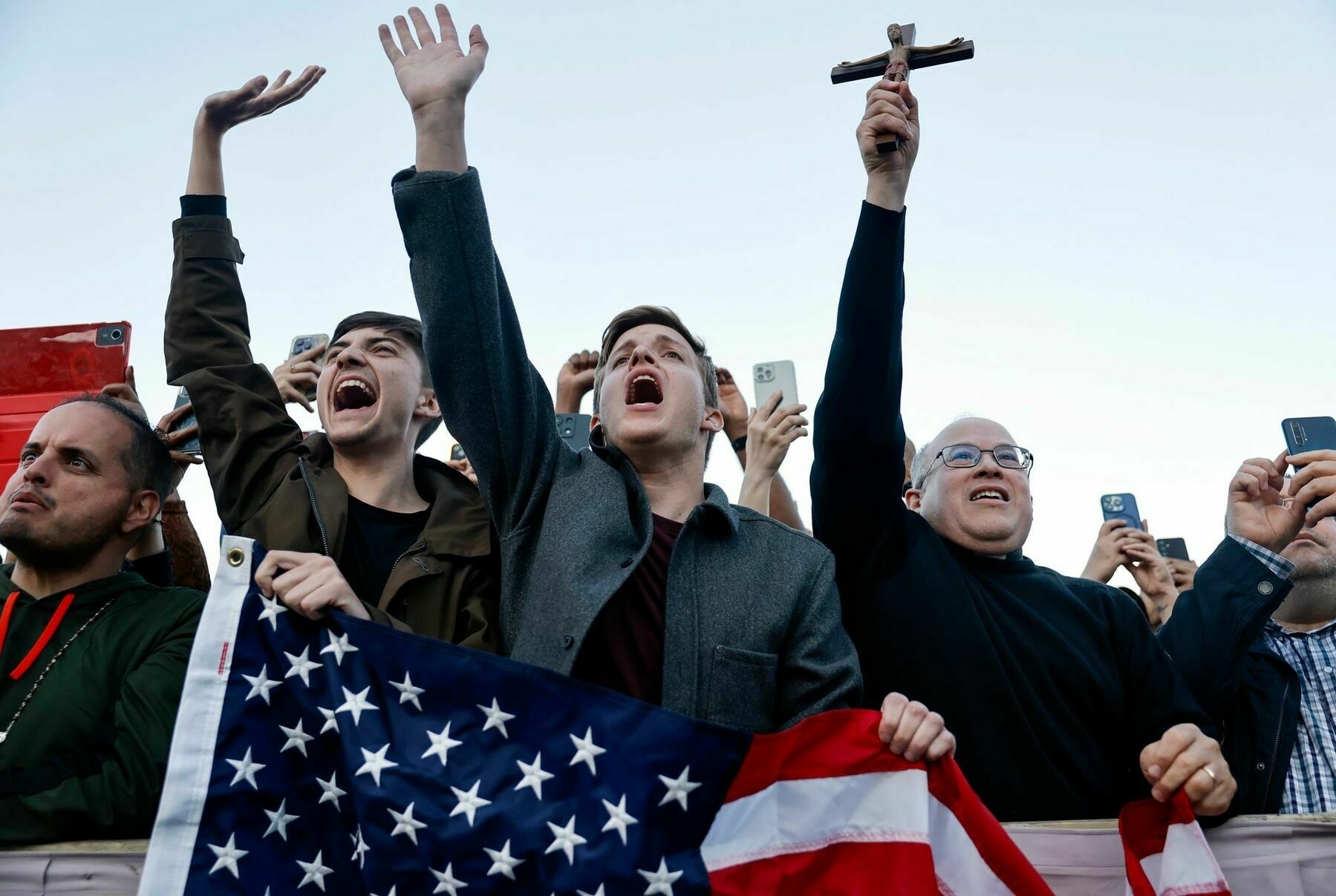
Americans from Texas, including Cole Wendling (C), celebrate after the announcement of newly elected Pope Leo XIV in Vatican City, Vatican, on May 8, 2025. (Mario Tama / Getty Images) “Trumpism has broken many international taboos in recent months,” said Massimo Faggioli, a professor of historical theology at Villanova University. “The conclave responded in kind by breaking another taboo: that it was not possible for a Catholic from the U.S., a superpower, to become pope, in order to avoid an overlap between political-military supremacy, and the leadership of the church symbolically, at least, heir to the Roman Empire.”
In selecting Pope Leo, the cardinals who voted may have aimed to counter Trump’s policies with a different message about what U.S. exceptionalism and greatness can look like, Faggioli said.
“It remains to be seen what it means for a pope from the U.S., in the world of the crisis of liberal and constitutional democracies today, to speak as the head of the Catholic Church and the Holy See to Russia and Ukraine, to Israel and the Arab world, to China and the two Koreas,” said Faggioli.
Prior to his election as the leader of the Catholic Church, Pope Leo had boosted criticisms aimed at the anti-immigration policies of Trump and his vice president, JD Vance, on X.
In February, he reposted an article titled, "JD Vance is wrong: Jesus doesn't ask us to rank our love for others."
Pope Leo succeeds Pope Francis, who left behind a mixed legacy on the war in Ukraine. His repeated calls for peace often left Ukrainians frustrated by his failure to call out Russia as the aggressor or to condemn Russian President Vladimir Putin.
While this reflects the Vatican’s commitment to neutrality, allowing it to carry out a humanitarian role and negotiate prisoner exchanges, it also came under fire as being influenced by the historic ties between Moscow and the Vatican.
After it was announced that Cardinal Robert Prevost would replace him as the new church leader, President Volodymyr Zelensky congratulated Pope Leo XIV on social media, saying, “Ukraine deeply values the Holy See’s consistent position in upholding international law, condemning the Russian Federation’s military aggression against Ukraine, and protecting the rights of innocent civilians.”
Pope Francis leaves a mixed legacy in wartime Ukraine, overshadowed by historic Vatican-Moscow tiesPope Francis, who passed away on April 21 at 88, leaves behind a legacy as vast and varied as his global influence. Yet in Ukraine, his track record is far from positive. For many Ukrainians, the Pope’s legacy is shaped by his repeated downplaying of the gravity of Ukraine’s fight for its survival in Russia’s war of aggression. His sweeping calls for peace over the past three years – from calling Ukrainians and Russians “brothers” to urging Ukraine to “have the courage of the white flag” in ne The Kyiv IndependentKate Tsurkan
The Kyiv IndependentKate Tsurkan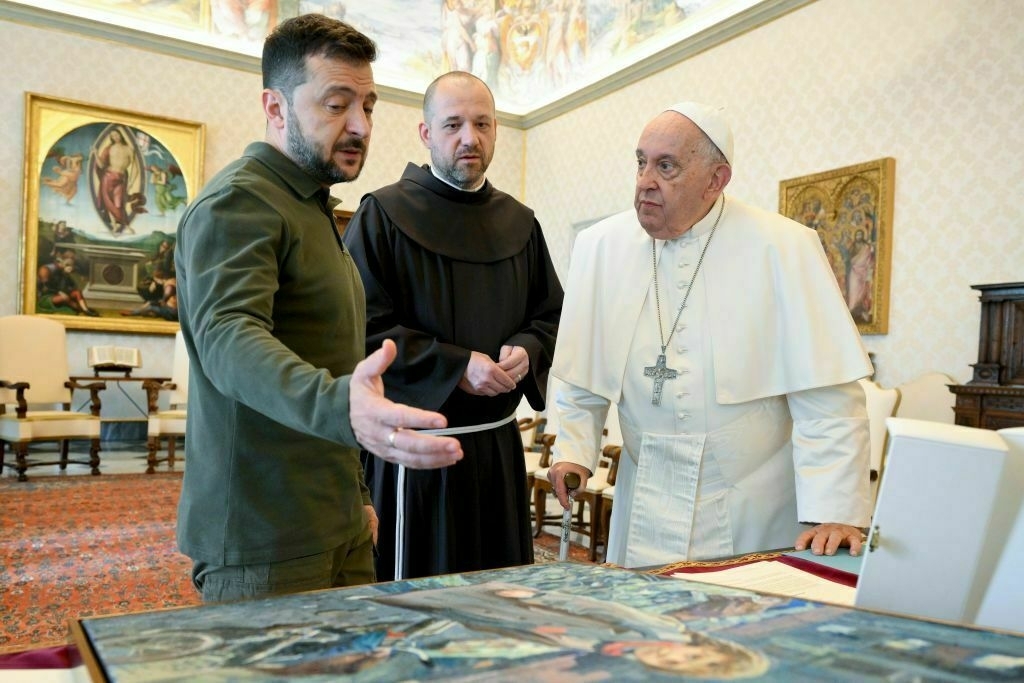
The Price of Myths: How Neighbors Manipulate the Topic of Ukraine’s EU Accession
Ukraine continues its gradual path toward membership in the European Union, but this path is accompanied by resistance, myths, and fears propagated by politicians and citizens of certain member states. The most significant concern lies in the economic dimension: will Ukraine become a burden on the EU budget, or, conversely, will it open new opportunities for the development of the entire Union? In this article, we analyze where the narratives about Ukraine as a burden come from, who promotes them, and why Ukraine’s accession to the EU is an investment, not a loss.
Hungary
On March 20, 2025, Hungarian Prime Minister Viktor Orbán stated on his X page that Ukraine’s EU membership would cost each Hungarian household 500,000 forints (1,200 euros) annually:
“9,000 billion HUF – that’s how much the war has already cost Hungarian families. 500,000 HUF per household, every year – that’s the price tag of Ukraine’s EU membership. Brussels wants Hungarians to pay the bill, but no decision will be made without the voice of the Hungarian people. A new member can only join with the unanimous support from all Member States. There can be no decision until the Hungarian people cast their votes. This decision belongs to our citizens, not Brussels!”
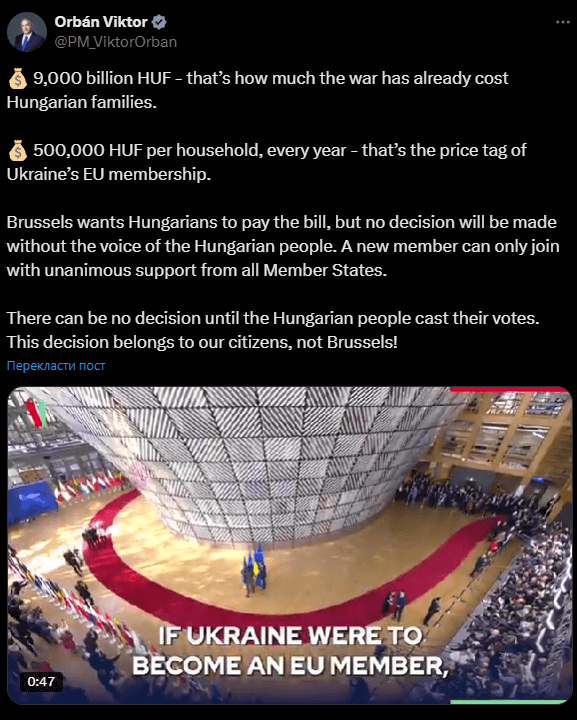
Screenshot of the post
First of all, where does this data come from? These are calculations by the Századvég Foundation, a think tank affiliated with Orbán. According to the foundation, “Ukraine has cost each Hungarian household 2.2 million HUF” (5,500 euros) or 9,000 billion HUF (22.5 billion euros) in total. The basis for the supposed losses includes three components: rising prices for imported gas, increased state spending due to higher yields on government bonds, and losses from reduced exports to Russia.
In reality, it refers to increased prices for imported gas due to changes in spot prices at the TTF Gas Hub in the Netherlands and additional budget expenditures due to the higher cost of state debt (due to geopolitical risks and inflation shocks, the yield on 5-year Hungarian government bonds rose from 2% to 4–6%). Additionally, bilateral sanctions – imposed by the EU on Russia and by Russia on the EU – affected Hungary’s trade volumes with the aggressor state. However, the root cause of these losses – Russia’s full-scale invasion of Ukraine – is not mentioned in the Századvég Foundation’s analysis.
Secondly, what does 500,000 HUF (1,250 euros) from each Hungarian household for Ukraine’s EU accession mean? In reality, Ukraine will not “take” money from every Hungarian family. It is more about potentially foregone aid from the EU budget that the country currently receives, and possible increased expenditures from Hungary’s state budget.
These calculations are based on the potential reduction in receipts from the EU Cohesion Fund and subsidies under the Common Agricultural Policy (CAP), contributions to support Ukraine amounting to 0.25% of GDP, additional pension costs for Ukrainians who supposedly will move to Hungary, and estimates of Hungary’s share in financing Ukraine’s reconstruction.
In general, there are several issues with the 500,000 HUF figure:
- They are based on the assumption that Ukraine would join the EU today. In reality, the years leading up to Ukraine’s EU integration will bring changes both in Ukraine (for example, we need to harmonize legislation with EU standards) and in the EU itself. By the time of Ukraine’s accession, both the CAP and the distribution of Cohesion Fund expenditures will likely have been significantly revised. Discussions on such revisions have already begun.
- Reconstruction costs for Ukraine are a separate international initiative, not part of the EU accession process, and not solely the responsibility of member states. Therefore, treating them as “future losses” for the population related to Ukraine’s EU accession is unfounded and manipulative.
- The calculations of migration and pension burdens are based on speculative assumptions. For example, the claim that 5% of Ukrainian pensioners will move to Hungary. According to the UN High Commissioner for Refugees, at the end of February 2025, the share of Ukrainians who chose Hungary as a refuge was about 1% of the total number of refugees in European countries.
Finally, the estimates by the Századvég Foundation do not consider the positive economic effects of enlargement: new markets, investments, enhanced security, and stability in the region. According to IMF calculations, EU enlargement, particularly due to the integration of Ukraine, Moldova, and the Balkan countries, could increase the bloc’s GDP by 14% over 15 years.
By the way, Hungary’s accession to the EU in 2004 also involved both pre-accession financial aid and post-accession funding to support its integration and development through three programs: ISPA (Instrument for Structural Policies for Pre-Accession), PHARE (Poland and Hungary: Aid for Restructuring of the Economies), and SAPARD (Special Accession Programme for Agriculture and Rural Development). Between 1990 and 2006, Hungary received €1.987 billion (in prices of that time). But even after joining, the country continued to receive support — financial aid for 2021–2027 is planned at around €30 billion.
Hungary receives several times more from the Cohesion Fund and other EU funds than it contributes to the EU budget. Its contribution is relatively small (about €2 billion with a GDP of more than €200 billion), while the amount received is one of the highest in the EU among recipient countries (after subtracting contributions, Hungary received around €4.5 billion from the EU budget in 2023). If calculated per capita, each Hungarian hypothetically gives “out of their pocket” about €200, while receiving nearly €700.
Poland and Slovakia
Concerns and myths about Ukraine’s accession to the European Union exist not only in Hungary. Polish presidential candidate from the opposition party Law and Justice (PiS), Karol Nawrocki, stated that Poland cannot afford actions that would harm its economy:
“At the same time, Poland represents — and I want this to be understood — its interests and society. Therefore, it cannot afford actions that would strike our economy, agriculture, or the wealth of Polish wallets.”
Russian propaganda media, citing Nawrocki’s interview for Sieci, picked up on the narrative that Ukraine’s EU membership would be economically disadvantageous for Poland.
Polish journalist and commentator Łukasz Warzecha pointed out that large amounts of money would go to Ukraine, which would be a direct competitor to Poland:
“Imagine this: in a few years, in a prospective new budget, Poles will have to pay not only gigantic sums due to the EU’s absurd climate policy, but will also be informed that tens of billions of euros of our money will flow into Ukraine, which will be our direct competitor in the bloc.”
In Slovakia, social media users circulated several false claims about the negative impact of Ukraine’s accession to the EU on the national economy. In particular, they manipulated the words of MP Ľubica Karvašová from the “Progressive Slovakia” party, who said that Slovak farmers would have to grow different products if Ukraine joins the EU. Social media users claimed the politician proposed that farmers grow camels and oranges. The post added that farmers would go bankrupt because Ukraine would supply products that Slovaks have “been growing for centuries”.
Slovak politician and deputy chair of the “Hungarian Alliance”, György Gyimesi, claims that under current rules, Cohesion Fund money is allocated to those member states where GNI (gross national income) per capita is below 90% of the EU average:
“Ukraine’s accession, considering its low level of development, would lower the EU’s average level of development overall. This would mean some current beneficiary countries would no longer be eligible for funding. At the same time, their actual level of development would remain unchanged, but those member states that stayed below the threshold would receive less money,” he wrote.
He also noted that if Ukraine joined the EU, supposedly 30% of all money allocated under the Common Agricultural Policy would go to Ukraine. Gyimesi concluded that if Ukraine joined the EU, it would become the largest beneficiary of the EU budget:
“If the EU wanted to raise the GDP of a completely destroyed Ukraine to the level of its weakest member, Bulgaria, according to calculations, it would cost each EU citizen €600,” the statement read.
A new formula for solidarity: transform, not compete
It is precisely the allocation of funds from these programs – the European Structural and Investment Funds and within the CAP – that Ukraine’s Eastern European neighbors mainly refer to when discussing potential losses (or rather, forgone income) for their households.For example, the Cohesion Fund supports EU member states with a Gross National Income (GNI) per capita below 90% of the EU-27 average to strengthen the EU’s economic, social, and territorial cohesion. Under the current 2021–2027 program, 15 out of 27 countries are eligible for funding (Bulgaria, Czechia, Estonia, Greece, Croatia, Cyprus, Latvia, Lithuania, Hungary, Malta, Poland, Portugal, Romania, Slovakia, and Slovenia). And the allocation of funds within the CAP depends on the area of arable land and the number and size of farming households.
Currently, all EU spending estimates related to Ukraine’s accession are based on the “here-and-now” assumption, that is, they consider the country’s current economic status, relative population size, and the configuration of the current EU institutional system. Under these assumptions, the potential volumes of support are impressive. For instance, according to estimates of researchers from the German Economic Institute in Cologne, if Ukraine had been an EU member in 2023, it would have received €130–190 billion: €70–90 billion in agricultural aid and €50–90 billion under cohesion regional policy. EU estimates are similar – €186 billion.
A transformation of budget priorities always accompanies EU enlargement. However, these changes are not a burden but an investment in economic, social, and political stability across the continent. Even before new members join, the EU begins investing in their transformation: supporting reforms, strengthening institutions, and modernizing infrastructure.
The example of Croatia, which joined the Union in 2013, demonstrates the effectiveness of this approach. Between 2007 and 2013, it received €998 million under the Instrument for Pre-Accession Assistance (IPA). After accession, Croatia received €12.2 billion through the European Structural and Investment Funds (ESIF), of which €9.1 billion came from EU Cohesion Policy funds. Additionally, in 2014–2020, Croatia received €2.3 billion under the EU’s Common Agricultural Policy (CAP) Rural Development Programme.
The EU assisted Croatia in building institutional capacity, focusing primarily on preparing government institutions to comply with EU legislation and meet necessary criteria. The main focus was accelerating reforms in key areas such as the judiciary, anti-corruption, public administration reform, public finances, economic restructuring, and the business environment.
This strengthened the Croatian economy and the EU single market, into which local businesses integrated, expanding production chains. Accordingly, trade volumes increased. Add to this the new labor force and strengthened EU influence in the region. Croatia’s EU accession became a signal to other Balkan countries about the possibility of integration, provided reforms are implemented.
Under current conditions, Ukraine could become a net recipient of aid. At the same time, European countries that currently receive support would lose it, since Ukraine has the lowest GNI per capita and a high share of arable land. To integrate current candidates (which, in addition to Ukraine, include Moldova, Balkan countries, and Georgia), the EU needs to improve the efficiency of resource allocation. The EU budget and structural funds should consider current country indicators, growth potential, strategic importance, and benefits to the entire European Union.
Scholars and experts believe that if the EU enacts institutional reform, the costs of adapting Ukraine will be lower. Moreover, the efficiency of Ukraine’s agricultural sector is underestimated, and thus, subsidies for Ukrainian farmers may be significantly lower than the cited estimates.
Support for less developed regions is not only a matter of solidarity but also a mechanism for developing the internal market: new consumers and producers, reduced migration pressure, and strengthened regional security. People stay to live and work at home while purchasing goods produced in other EU countries.
Ukraine will bring unique assets to the EU: digital transformation, military resilience, flexible institutions, and civic engagement. While some European countries are slowly adapting to changes, Ukraine is already acting as a transformation accelerator.
Yes, integration requires investment. But these are investments in a new market, new energy, and a more resilient European space. Ukraine is not a “beneficiary” but a partner capable of strengthening and renewing the European Union.
Photo: depositphotos.com/ua
Oil, Tariffs, Stagflation, and the Fiscal Frontline of Russia's War Economy
Oil prices have slipped below $60 per barrel, adding pressure to a strained Russian economy. At the same time, China—Moscow’s largest trading partner—is locked in a high-stakes tariff war with the United States, triggered by the new U.S. administration. These converging disruptions are unlikely to leave Russia's economic footing - and by extension, its capacity to fund the war in Ukraine—unaffected.
To better understand the current landscape, we once again spoke with Vladimir Milov, former Russian Deputy Minister of Energy and a prominent critic of the Putin regime. An economist and energy expert, Milov was a close ally of opposition leader Alexei Navalny and currently serves as Vice President of the Free Russia Foundation. Our previous conversation with him took place in December 2024. In this latest interview, we revisit his earlier forecasts and examine how recent developments have altered Russia’s economic trajectory.
Question (Q): There’s increasing talk about a potential easing of economic sanctions on Russia—at least from the U.S. While a full rollback seems unlikely, some form of relief may be on the horizon. In your view, could this act as a lifeline for the Kremlin, enabling it to sustain the war effort?Answer (A): I have written about it in much detail in a recent op-ed for The Insider - please have a look. Long story short - Trump won't be able to reverse Western sanctions policy, and European actions matter more than those of the U.S. Before the 2022 full-scale invasion, Europe was Russia's key investor and trade partner - over 67% of accumulated FDI stock came from Europe and around 50% of Russian exports went to Europe. The U.S. - 1% and 4% respectively. Russia needs markets and investment, and the U.S. won't provide that - even in better times, American investors didn't particularly like Russia.
However, Russia may get some benefits from U.S. sanctions being lifted, which will help to keep Putin's ailing economy afloat for a bit longer. Crucial thing is access to the U.S. technology which may boost the Russian military production - this assessment is shared in a brilliant recent report by the Kyiv School of Economics on the status of the Russian military industries - quite worth a read, I strongly recommend
Another problem is that Europe doesn't have anything comparable to the U.S. global sanctions enforcement mechanism - experienced agencies like the U.S. Office of Foreign Assets Control and Bureau of Industry and Security. If the U.S. lifts sanctions against Russia - or simply continues the crackdown on its own Government institutions like that executed by DOGE - the EU, Britain, and other Western democracies simply don't have its own institutional capacities to secure proper sanctions enforcement on a global scale, as currently provided by the U.S. There will be a major sanctions enforcement vacuum which Putin will inevitably use for his own benefit, boosting sanctions circumvention.
(Q): The U.S.-China tariff war has dominated headlines in recent weeks, signaling historic geopolitical and economic shifts. While Russia isn't directly involved, key trade partners like China are heavily impacted. Beyond oil, should we expect any spillover effects on the Russian economy?
(A): Yes, there's so much more than just oil. China's economic slowdown closed their market for many Russian products, due to which major Russian industries suffer badly. For once, China-oriented Russian coal industry is collapsing right in front of our eyes. Fisheries suffer from contraction of Chinese imports of Russian fish. Russian steelmakers face output contraction and sharply falling profits because cheap Chinese steel is flooding global markets - Chinese economic slowdown turned China from being a major importer to a net exporter of steel. And so on. Russian non-energy and non-commodity exports are down by about a quarter compared to pre-2022 levels, and are not rebounding - China doesn't allow Russia to access its market, and it won't change once Chinese economic growth slows down.Tariff war will obviously exacerbate Chinese slowdown. The slower Chinese growth - the less market for Russian goods. Share of China in the total Russian exports is as high as a third now - we're heavily dependent on this market and its well-being.
(Q): In a recent interview, you mentioned that further declines in oil prices might actually benefit Russia more than if prices remain stagnant just below a certain threshold—an idea that might seem counterintuitive to many. Could you explain how that works?(A): Biggest loser from the falling oil prices is not Russia, and not OPEC - its the American shale oil industry. Oil production costs in the U.S. are significantly higher than in Russia or OPEC. This means that, if global oil prices fall below $50, large part of the U.S. oil production will be wiped off the market, and prices will quickly rebound. We already saw these effects after 2014 and 2020 oil price crashes.
Russians know that, which is why they weren't too scared with Trump's threats to "radically bring down the oil prices". Their strategy is to wait out for mass extinction of the U.S. oil production under $50/bbl, and to wait for prices to rebound thereafter. Russian oil producing companies are OK under $30-40 prices - it is the state budget which will suffer, but Putin and his people believe they can last for some time under low oil prices, given that they will be rebounding later.
In these circumstances, I'd say the best scenario if the international oil prices will stay somewhere around $60. Given the sanctions-driven discounts, that means Russian oil cheaper than $50. These are the prices which will significantly hurt Russia (Russian budget is drafted under $70/bbl oil price assumption), but will prevent the collapse of the U.S. shale oil industry and further rebounding of prices. Oil at $50 or cheaper is a much worse scenario, as it will most likely mean that low oil prices will be short-lived, which will make Putin happy.
(Q): During our last conversation, there was an expectation that Russia’s central bank would raise interest rates, yet it held steady at around 21%. What factors led to that unexpected decision?
(A): After their February Board meeting, Central Bank has admitted that "consequences of further raising rates will be worse than keeping the rates steady" - meaning that it would exacerbate economic slowdown or probably lead to a recession. To avoid that, they partially sacrificed the goal of bringing down inflation - which still remains high, preventing the Central Bank from much-anticipated easing of monetary policies. At the recent March meeting of the Central Bank board, only two signals were discussed - neutral and tough (further increasing the rate).Central Bank faces tough dilemma now - interest rate of 21% is still very high (Russia has 12th highest Central Bank rate in the world), rapidly cooling the economy, but inflation is not really receding. The root causes of inflation - heavy budgetary spending on the war, output gap created by output not catching up with demand due to Western sanctions against Russian manufacturing sector - are not going away. At the same time, Russian industrial output has zeroed out in February (0,2% year-on-year growth and 0,4% seasonally adjusted growth compared to January), and March figures may be even worse - soon we'll see the statistics. So, Central Bank has managed to rapidly cause stagnation with its tight monetary policies - risking further slipping into recession - but it failed to bring inflation under control.
(Q): Your latest FRF Think Tank report points to high inflation and near-zero output growth in Russia—classic signs of stagflation. However, some economists argue that high unemployment is a necessary component. Given that unemployment remains relatively low, does this mean Russia hasn’t yet entered stagflation, or is this just a statistical distortion due to the mass recruitment of the male population?(A): True, Russian situation is unique. The term "stagflation" was coined in the 1960s and 1970s in the Western economies none of which experienced such a mass diversion of the workforce to the war as Russia today. If the current war is suddenly over, Russia will indeed experience high unemployment - masses of soldiers returning to civilian life won't easily find jobs.
Russia also continues to experience very high hidden unemployment - workforce which is nominally employed, but in reality is either on unpaid leave, part-time workweek, or downtime. Rosstat estimated hidden unemployment to be as high as 4,7 million people in Q4 2024, or over 6% of the total workforce. Together with official unemployment, that would make about 9% of the workforce.
These workers would have significantly eased the pressure on labor market should they have left their enterprises, but Russian labor market traditionally features low mobility (remember how people in the 1990s preferred to continue working for years at enterprises which haven't paid them salaries, instead of leaving them looking for new jobs). So, companies nominally keep the workers, but effectively don't pay them - hoping for recovery, which is not coming (nearly three quarters of hidden unemployment are people on unpaid leave).
So, if we're into a macroeconomic debate by the book here, Russia does have high unemployment - but in hidden or delayed forms. And stagflation is real. If the current situation lingers on, even nominal unemployment will rise quite soon.
(Q): What is the current situation with Russia's National Wealth Fund — the main financial reserve that has supported Putin's economy through years of war? What are the implications for the Kremlin and the ongoing war?(A): As of April 1st, the liquidity portion of the National Wealth Fund (NWF) stood at $39 billion, or just over RUR 3 trillion. That's lower than the federal budget deficit recorded in 2024 (RUR 3,5 trillion). As it goes, 2025 budget deficit will likely be much higher - costs are rising (over 20% federal expenditure growth in Q1 2025), while revenues will be depressed by both the falling oil prices, as well as economic slowdown. Already now, non-oil revenue in Q1 2025 grew only by 11% year-on-year, against 26% growth in 2024, and 18% planned growth for 2025. Of which VAT - by just 9%, as opposed to 22% in 2024 and 17% planned for 2025. Slowing economy generates less taxes, which will undermine budget revenues to an extent not lesser than falling oil prices, and lead to further depletion of the NWF. As it looks from today, there's no other way but for the liquidity portion of the NWF to be fully depleted by the end of 2025 (usually they draw the funds from NWF in December to close the fiscal year).
There's also a non-liquidity portion of the NWF, but it largely exists only on paper, with money invested in various securities and not being easily recoverable. For those interested in details, I have analyzed this in my February brief on the Russian economy. The liquidity portion of the NWF has shrank from $116,5 billion in February 2022 to just $39 billion now as a result of heavy war-related spending. Essentially, this was the model of much-praised Putin's "economic resilience": heavily draw the available cash reserves to compensate for the negative effects of sanctions. But this "economic miracle" appears to be over, disappearing along with cash being spent.
What next after the liquidity part of the NWF is fully spent? I also analyze this in one of my recent reports in detail. Bottom line: nothing is working except monetary emission, printing the money. Government can't borrow - they are cut off from international financial markets, and domestically, with yields as high as over 16% for OFZ government bonds, Russia spends more on repaying and servicing the debt than it actually raises from the domestic debt market. Net debt raising was just around zero in 2024 and negative in Q1 2025. They can raise taxes, but that would further undermine economic growth and curb tax base - they'll lose more in the end. Hypothetically, they can try to privatize state assets, but there's not really much to sell if they don't opt to privatize control equity shares in major state companies - and they don't seem to even consider that for strategic reasons. As far as smaller-scale privatization is concerned, it won't solve their fiscal problems on a large scale, and there won't be much demand given the rapid deterioration of investment climate, ongoing rampant nationalization, etc.
So printing the money seems to be the only viable option left. Russian authorities seem to increasingly tolerate high inflation - "we're not Turkey or Argentina yet, so what difference does it make if inflation is 12-13% instead of 10% - let's print a couple of trillion rubles, no one will notice" (that was literally said by some State Duma deputies during Nabiullina's report debate on April 9th). Central Bank clearly shifted to limited emission schemes in the past few months through repo auctions - banks buy government bonds, and are immediately allowed to use them as collateral while borrowing cash from the Central Bank through repo auctions. Central Bank promised to use repo auctions as temporary mechanism in November 2024, but keeps rolling them over - switching from monthly to weekly repo auctions. Effectively, it is little different from Central Bank's credit to the government, or, in simple words, printing the money.
No question that filling the budgetary gap with printed money will lead to even higher inflation, which will destroy any prospect for economic recovery. So, basically, the Western sanctions are working - albeit not as fast as we hoped, but still.
If you found this interview valuable, we invite you to sign up to receive all our analytical reports. You can also support our work by becoming a monthly subscriber — your contributions help us produce more in-depth, independent content like this.
Honest analysis and open discussion rely on editorial independence, and that’s only possible thanks to readers like you.
This Substack is reader-supported. To receive new posts and support my work, consider becoming a free or paid subscriber.
Inside Ukraine’s Antarctic Expedition (penguins inside)
Editor’s Note:
These six weeks tend to be the most difficult months for us financially.
Sadly, we’re seeing unsubscribes at a furious pace. Help us stop the slide: upgrade today to keep our journalism coming.Biologist Svitozar Davydenko used to be one of the world's most remote Ukrainians.
For a year, he lived 10,000 miles away from his troubled homeland.
He worked at a scientific center – known as the Akademik Vernadsky Station – in Antarctica.
The ‘White Continent’ is harsh and unyielding, but Ukrainians know how to find beauty in everything.
"I was stunned by the sheer amount of ice, these enormous icebergs. The natural conditions here are quite severe. Cold. Windy. And yet, life thrives here," said Svitozar, recalling his first thoughts upon setting foot in Antarctica."
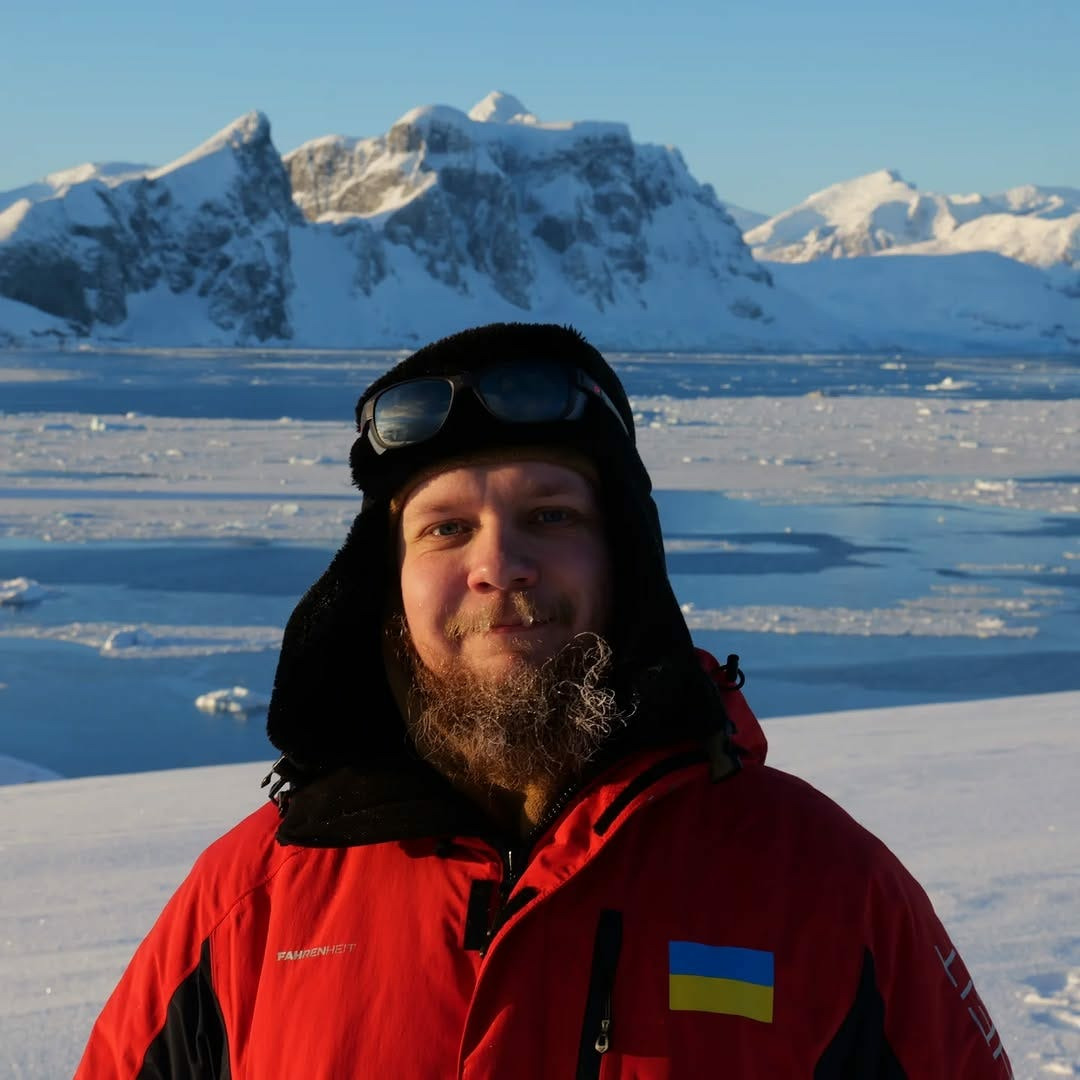
Svitozar Davydenko is a Ukrainian biologist from the 29th Ukrainian Antarctic Expedition (2024–2025). Photo by the Ukrainian Vernadsky Research Base. While Trump imposes tariffs even on penguins near Antarctica, Ukrainians study and care for them. Ukrainians understand that Antarctica is not just a continent for research.
It holds the key to the future.
Today, Antarctica is considered one of the last formally neutral territories, used exclusively for scientific purposes.
Despite the ongoing war, Ukraine demonstrates its commitment to protecting nature not only within its own borders but around the world. It is here in Antarctica that Ukrainians study climate change, its impact on wildlife, and contribute to the preservation of flora and fauna on the only continent still without permanent human habitation.
Ukraine cares not only about Russian ecocide on Ukrainian territory, but also about addressing global challenges and safeguarding the planet’s future.
Last year, Svitozar Davydenko was selected as a biologist for Ukraine’s 29th Antarctic Expedition, which set off for the Akademik Vernadsky Station — Ukraine’s only research base on the continent.
Although Svitozar is from Zhytomyr, he has spent most of his life near Kyiv.
In October 2022, the museum of the National Academy of Sciences of Ukraine, where he often worked, was hit nearby by a Russian missile during one of the mass attacks.
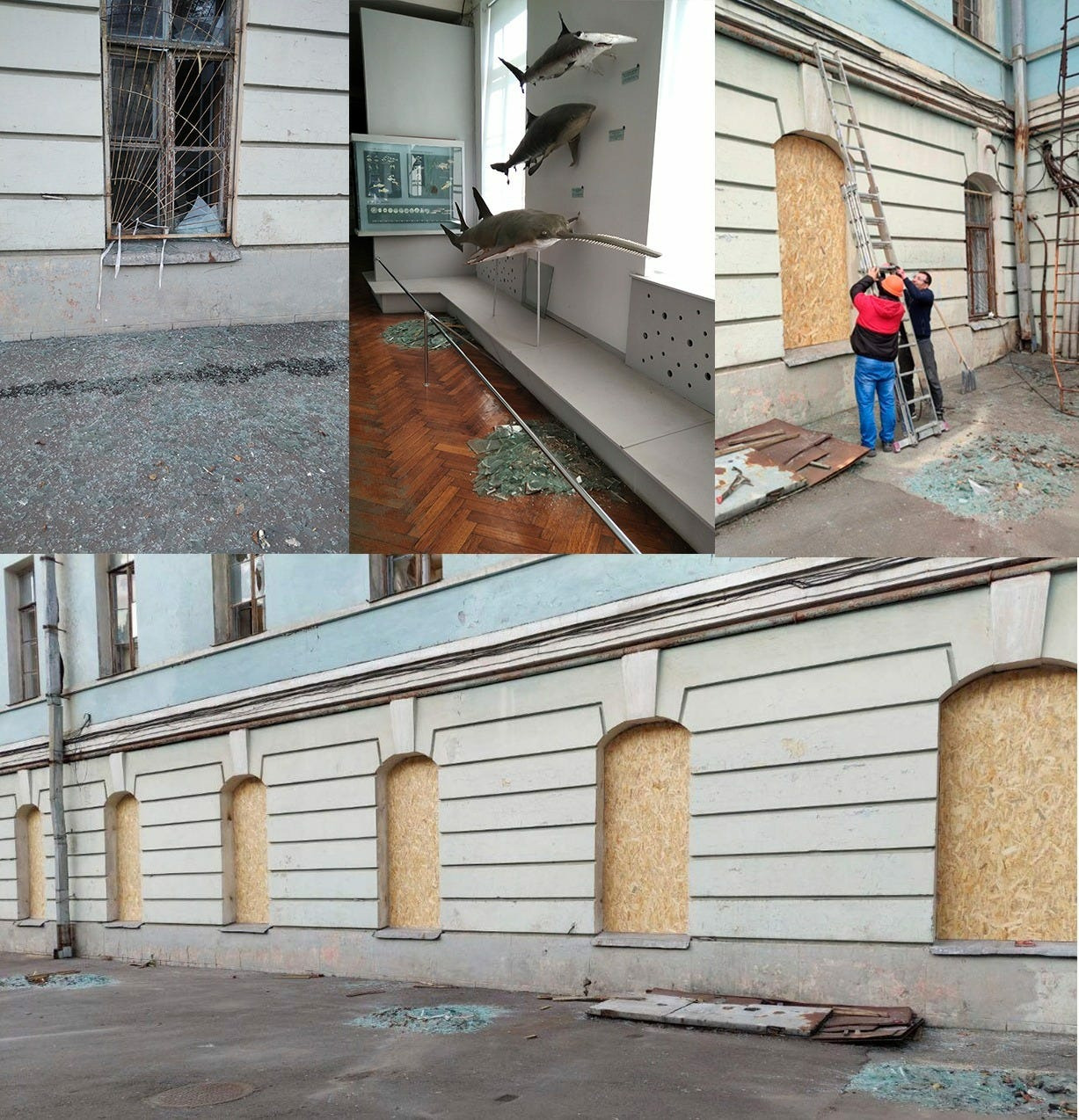
National Museum of Natural History at the National Academy of Sciences of Ukraine after a Russian attack in 2022. "I can hardly imagine what it was like for those who were in Antarctica in 2022, but we were still calmer. The situation was still better than at the beginning of the war. Of course, we were worried about our families [while we were in Antarctica]," shared Svitozar.
Despite that, Svitozar decided to test his luck. Since his university years, he has wanted to go to Antarctica. And after he earned a Ph.D. in biology, his dream came true. He matched all the selection criteria from the first try and went to explore Antarctica in March 2024.
The station is located on Galindez Island, just off the western coast of Antarctica. There, Svitozar had the rare opportunity to live among penguins, swim near majestic whales, and even meet a newborn seal pup, which would later be named in his honor.
The Vernadsky Research Base is Ukraine’s only permanent presence in Antarctica.
In fact, Ukraine’s history on the continent is relatively recent.
The station was previously British and known as Faraday. In 1996, the UK handed it over to Ukraine free of charge, since after the collapse of the Soviet Union, Ukraine had not inherited a single Antarctic base. Russia took over all five of the functioning stations.
The UK didn’t ask for any money in return, but the Ukrainian team still decided not to leave the gesture unanswered. In a symbolic act, a member of the first Ukrainian expedition pulled a one-pound coin from his pocket and handed it to the British representatives.
Since then, the station has been home to a wide range of scientific research. Scientists there collect meteorological data to help forecast global weather patterns, track glacial melt, and measure ozone levels.
In fact, the ozone hole was discovered at this very station, back when it was still operated by the British. They found that the earth's ozone layer, which is supposed to protect the planet from radiation, is much thinner than it should be.
The wildlife of the frozen continent is also a subject of deep study, and that’s where Svitozar Davydenko comes in.
"For me, it was a unique opportunity to understand extinct whales through the living ones," Svitozar told The Counteroffensive.
Since childhood, Svitozar had dreamed of becoming a paleontologist, fascinated by extinct animals — especially ancient whales that once swam through what is now Ukrainian land. At university, some of his professors were veterans of the Vernadsky Station. That’s how he first learned that not only did the station still exist, but that biologists could apply to go there.
And last year, it happened — he was selected through a competitive process to join the expedition. After interviews, psychological evaluations, and time spent living in isolation with the expedition team, he finally got the chance to witness the forbidding Antarctic ice with his own eyes.
The journey to Antarctica was long. To reach the end of the Earth, Svitozar had to travel by bus to Poland, then fly across the Atlantic to Tierra del Fuego in Chile — the bottom tip of South America.
There, the Ukrainian icebreaker Noosfera — a floating laboratory — was waiting for the team of fourteen scientists.
As a biologist, Svitozar had to study the local waters, setting off early each morning in motorboats to search for whales, plants, lichens, and other marine life. Everyone at the station must know how to drive a motorboat, just as they must know how to cook and carry out basic repairs.
Whales and orcas are of particular interest to Svitozar. Usually, the animals are indifferent to humans — you can calmly approach them by boat, for example, to take samples of skin or blubber. For a whale, according to Svitozar, it feels like a mosquito bite. But with the sample scientists can determine, for instance, whether a female is pregnant – or they can analyze the animal’s genetic makeup.
"When whales get curious about your boat, inspect you, stick out their fins and faces, and look straight at you — you realize they’re intelligent creatures, that they’re studying you too," recalled Svitozar.
However, during tourist season – winter in the northern hemisphere – when the Antarctic waters are filled with many boats and ships, whales become skittish.
They get ‘tired’ of people, so sometimes they even flee from the scientists.
Meeting between a humpback whale and Ukrainian scientists, including biologist Svitozar Davydenko:
A large part of his responsibilities also includes studying seals.
It was Svitozar who discovered a Waddell seal pup born near the research station last year.
It was named by subscribers on social media, and his colleagues, as SeaBaby Svitozarovych.
The first part of the name refers to a Ukrainian marine drone. The second part is the patronymic form of Svitozar’s name. So, in a way, this scientist became a father in Antarctica.
According to Svitozar, the animals least afraid of humans are the penguins. Entire colonies live around the station. Just a meter away from their buildings, thousands of penguins nest: they are small, have red beaks, and white stripes on their temples.
"The noise from the station, the light it emits, the warmth — none of it scares them. They've gotten used to it and happily wander around the station," said Svitozar.
Last year, a total of 7,000 penguins were recorded on the island where the station is located. They arrive during the mating season, in September and October, when penguins begin to build nests out of pebbles. Both bird parents take turns incubating the eggs, then feeding their babies and protecting them from predators until the young ones are grown.
Until 2007, subantarctic penguins didn’t live near the station at all. But due to global warming, they have gradually migrated further south in search of a harsher climate.
Scientists do not interfere in the lives of penguins. The Protocol on Environmental Protection, signed in 1991, prohibits touching, feeding, or in any way influencing the lives of penguins.
So, using drones, he monitors the birds, recording how colonies are developing, the number of babies born during the season, and whether penguins are settling on other islands.
Once, during one of Svitozar’s expeditions, an emperor penguin visited the station — a species not usually found at the latitudes where Vernadsky Station is located. The nearest known colonies are over 300 km away from the Ukrainian scientists.
The penguin wandered up to the station to inspect it.
"He spent about a week and a half, maybe two weeks, near the station. Sometimes he went into the water to eat, other times he just rested near the buildings. And then one day, he simply swam off somewhere to go about his business," Svitozar joked.
At first glance, one might wonder, “Why spend money on penguins when there are more urgent problems, like war?”
In 2024, Ukraine allocated approximately $11.6 million to support the operations of its Antarctic research station, Akademik Vernadsky, and to conduct scientific expeditions and research activities.
Beyond being an exceptional opportunity to contribute to global science, its research base means that Ukraine also holds a voice in determining Antarctica’s future.
Since 2004, it has held Consultative Party status, meaning it has veto power. Decisions regarding Antarctica must be made by full consensus — all votes must be ‘yes.’
Although Antarctica is currently a neutral and peaceful continent, this status could change in the future. Given the region’s wealth in natural resources, a scramble for minerals may eventually begin.
Additionally, the continent borders three oceans — the Atlantic, Indian, and Pacific — making it strategically important for global trade routes. Eventually, it could even be used for military purposes.
And Russia is already in the game. Like the U.S. and China, it has territorial ambitions on the continent. That’s why Ukraine needs at least some levers of influence to counter Moscow — even in the harsh Antarctic latitudes.
And it's already doing so. For example, in 2024, Ukraine, along with other countries, blocked Belarus from gaining Consultative Party status in the Antarctic Treaty.
"[Presence in Antarctica] is about political weight, prestige, and the country’s scientific potential," Svitozar summarized.
Svitozar’s expedition came to an end in early April. Now that he has left, he plans to continue working at the Institute of Zoology, where he previously worked, and will continue his research on animals.
But it’s unlikely that Antarctica will let Svitozar go easily; he may return for seasonal research or study the continent at other stations.
"Of course, it would be very interesting to return and continue studying whales and perhaps explore other aspects of Antarctica. For example, paleontology can also be studied here, not necessarily at Vernadsky Station, but, for instance, in the vicinity of other stations with which we collaborate," Svitozar said.
In this time of great uncertainty — and unstable American support — it means that the situation on the ground is very dangerous. Your contributions help us get the body armor, medical gear, and supplies we need to stay safe.
Show your support by contributing to our tip jar - funds go towards keeping us safe and ensuring our work continues.
NEWS OF THE DAY:
GOP FOR UKRAINE LAUNCHES CAMPAIGN: Republicans for Ukraine are launching a new campaign urging the GOP to support Ukraine. The campaign features over 60 first-person testimonies from lifelong Republicans and conservatives, many former Trump voters.
This initiative comes at a time when the Trump administration wants to get a peace deal done, proposing Ukraine give up Crimea and other regions that Russia occupied.
N. KOREA NOW OFFICIALLY SENDING TROOPS TO RUSSIA: For the first time, North Korea confirmed sending troops to Russia, BBC reported. Pyongyang’s military claimed its soldiers helped Russian forces "completely liberate" the Kursk region.
Days earlier, Moscow praised the "heroism" of North Korean troops, publicly acknowledging their involvement for the first time. However, South Korean and Western intelligence had reported North Korean troop deployments in Russia's war against Ukraine much earlier.
On January 11, 2025, two North Korean soldiers were captured by Ukrainian forces. The POWs said they were initially told they would be fighting against South Korea but were instead sent to fight in the Kursk region against Ukraine.
TRUMP BELIEVES ZELENSKYY WILL CEDE CRIMEA: Shortly after meeting in Vatican City, Donald Trump said he believes Zelenskyy is ready to concede Crimea to Russia as a part of a ceasefire deal, France24 reported.
Speaking to reporters, he also mentioned the Ukrainian President asking for more weapons.
Previously, Volodymyr Zelenskyy vowed Ukraine ‘will not legally recognize the occupation of Crimea’. Now Trump’s pressure switched to Moscow as he urged Putin to ‘stop shooting’ and sign a deal.
PENGUINS OF PEACE:
In this photo by the Ukrainian Antarctic Scientific Center, the first newborn penguin chicks of the season were discovered near the Vernadsky Station by Svitozar Davydenko.
Stay safe out there.
Best,
VeronikaOur readers' questions about the war, answered. Vol. 8
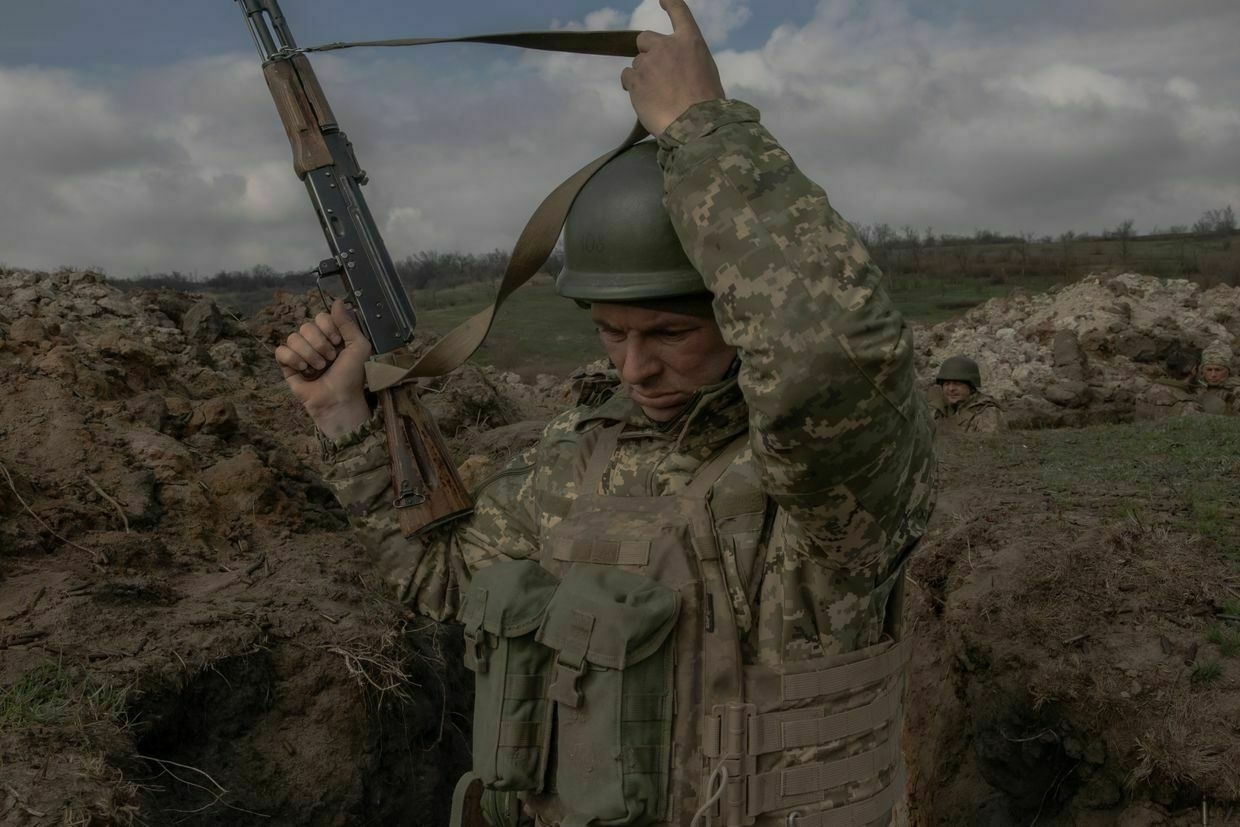
Editor’s note: We asked members of the Kyiv Independent community to share the questions they have about the war. Here’s what they asked and how we answered.
Join our community to ask a question in the next round.
Question: Is Ukraine formulating a plan to receive and house refugees from occupied territories? I would expect in that ceding territory many Ukrainians would want to leave Russian control.
Answer: Handling internally displaced people (IDPs) has been a pressing issue for Ukraine ever since the start of Russia’s full-scale invasion. According to the Social Policy Ministry, there are currently nearly 5 million IDPs in Ukraine, 3.6 million of whom left their homes after Feb. 24, 2022.
However, state support is widely considered insufficient, with most IDPs relying primarily on charities and NGO assistance. The monthly amount of financial aid from the state is currently Hr 2,000 ($48) per adult and Hr 3,000 ($72) per child or person with a disability — not enough to maintain a decent standard of living.
The most critical issues for IDPs include the lack of proper and affordable housing, financial instability, difficulty finding employment, and deteriorating mental health. Insufficient support also forces some IDPs to eventually return to front-line or even occupied settlements.
Read this story to find out more — “Thousands of Ukrainian IDPs are struggling to adapt amid housing, employment crises.” — Daria Shulzhenko, reporter
Question: Do Ukrainians still trust and respect President Zelensky? Do they still want him to be their president? Do they agree with how he is handling the war?
Answer: Yes, the majority of Ukrainians still support President Volodymyr Zelensky. Even more so after his brutal encounter with U.S. officials at the White House.
According to the latest poll published by the Kyiv International Institute of Sociology on March 27, 69% of Ukrainians trust the president.
The survey found that only 28% of respondents do not trust Zelensky, resulting in a trust-distrust balance of +41%.
Zelensky remains the most popular politician in the country and the majority of people in Ukraine support him. Yes, there are mistepps, quite a few actually, but I don’t see the country turning on Zelensky.
If the presidential election were held this weekend, Zelensky would definitely advance to the runoff and likely win it. The only potential competitor is former Commander-in-Chief Valerii Zaluzhnyi, who now serves as the country’s ambassador to the U.K.
Some polls have Zaluzhnyi in the lead, but the general had never officially announced his intention to run and it remains to be seen what he will do if he does. — Oleksiy Sorokin, deputy chief editor

Ukraine’s former commander-in-chief and current ambassador to the U.K. Valerii Zaluzhnyi in London, United Kingdom, on Feb. 24, 2025. (Rasid Necati Aslim/Anadolu via Getty Images) Question: With regard to Russia’s ongoing difficulties recruiting soldiers and their heavy losses on the front line, what actual difference has this made in the fighting? Also, I read about Russia’s losses in your newsletter but not much about Ukraine’s?
Answer: Russian losses in this war are staggering. Will this have an effect on Russia’s ability to continue the war against Ukraine? No.
Ukraine has less people and resources to spare. A neverending manpower shortage is the biggest problem Ukraine is facing in this war. And there are too few options on how to fix it.
While it is believed that Russia has lost twice as many people, maybe three times as many people as Ukraine has, the Kremlin can easily afford it.
Ukraine cannot.
Russia has a population 3.5-4 times larger than that of Ukraine. Russia, unlike Ukraine, is a totalitarian dictatorship where the lives of people mean nothing to the government apparatus. So, they will continue to use all the tools at hand to call up more people to fight.
Russia also has the ability to offer substantial sign-up bonuses to those willing to fight, recruit mercenaries from Asian and African countries, and is willing to throw the disenfranchised, primarily convicts, to storm positions without carrying will those people survive the initial attack.
To follow developments in Russia I recommend our WTF is wrong with Russia? newsletter, to follow the battlefield and the Ukrainian side of things, I would recommend our War Notes newsletter. — Oleksiy Sorokin, deputy chief editor
Question: Do we know where the population of the occupied territories stands in relation to Ukraine forfeiting territories in a “peace” deal?
Answer: Recent developments are taking a toll on the people in the occupied territories. Since 2022, Ukrainians living under occupation have kept their hopes they will be liberated the same way that residents of Kyiv, Kherson, and Kharkiv oblasts were that year.
Ukrainians living there told me that one of the hardest parts now is listening to all the discussions about territorial concessions from the U.S., and how they often omit that these are real lives, real people who will have to either abandon their homes for an unknown period or live their lives under Russian occupation.
Since the possibility of liberating these territories through force is extremely slim, the atmosphere is very gloomy, and hope is hard to come by. That doesn’t mean that the anti-Russian resistance fizzled out. Resistance groups, both violent and non-violent, still remain active, and for many, it is this resistance that helps them keep going. — Martin Fornusek, senior news editor
‘Evil must not win’ — how Ukraine’s female partisans resist Russian occupationSomewhere in the streets of Russian-occupied Simferopol, the capital of Crimea, a woman puts a sticker on the wall. It’s a short message, but if she is seen doing it, she will face arrest, prosecution, and likely, torture. The message is: “Soon, we will be home again.” On anotherThe Kyiv IndependentMartin Fornusek
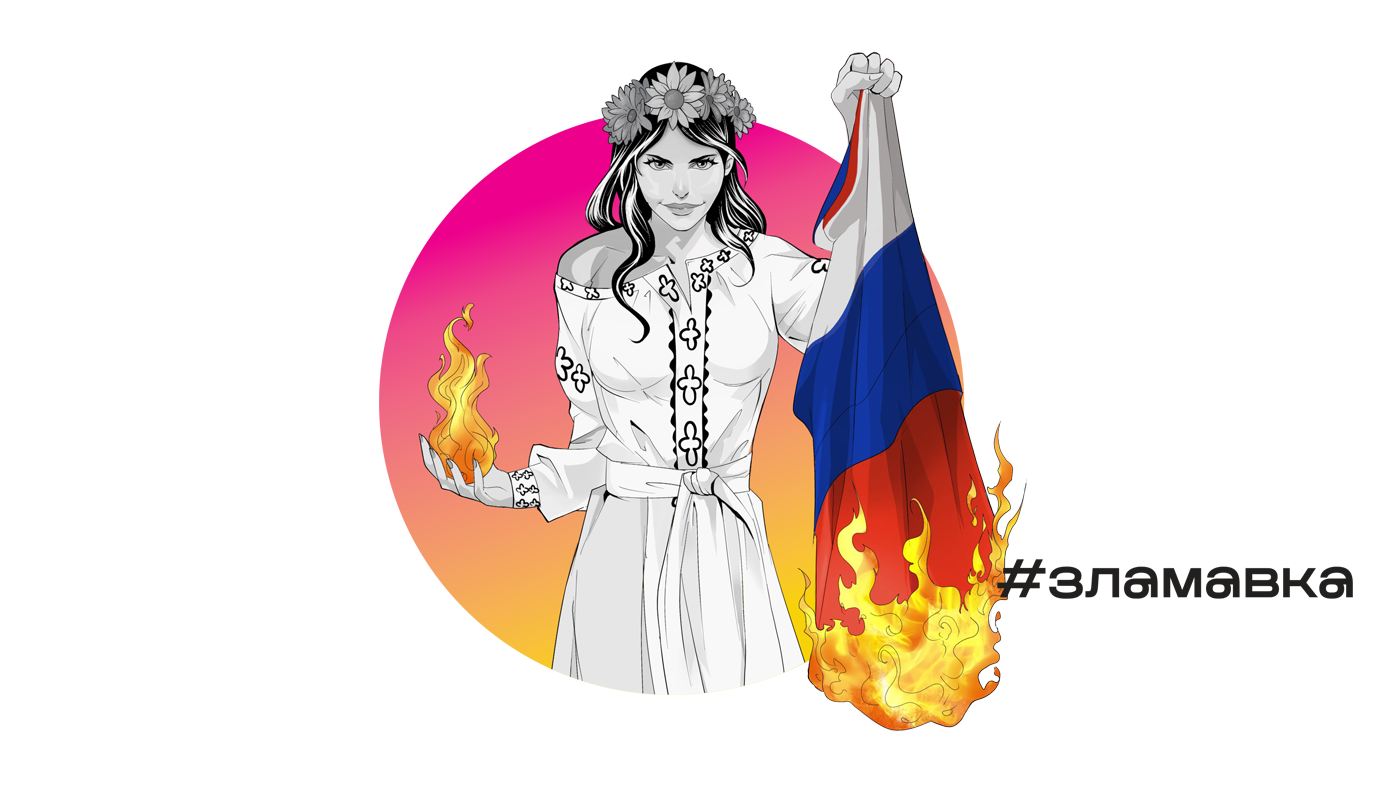
Question: Do you believe that the EU can give enough arms and security forces in a timely manner to protect Ukraine?
Answer: Yes. But for that to happen, Europe needs to step up.
Excluding some complex military hardware, such as the Patriot air defense systems and the extremely effective Bradley armored fighting vehicles, Europe knows how to build guns. It’s just not building them enough.
If Europe moves from talking to acting and begins rearming at a proper pace, the EU would be able produce weapons that would keep Ukraine in the fight. Ukraine also now has the know-how of how to build proper weaponry. It just needs the funds to increase production capacities.
The ReArm Europe initiative is a good start. The industry is also there. Now we need to see orders. — Oleksiy Sorokin, deputy chief editor
Question: French President Macron’s position on the war in Ukraine has undergone quite a few changes since the start of the full-scale invasion, and I think it’s fair to say that he is now fully and clearly committed to Ukraine. How is he currently perceived by Ukrainian public opinion, and are there any high expectations of him?
Answer: The public opinion regarding President Macron went through a deep transformation from the early period of his phone calls with Putin to him proposing for European boots on the ground later in the war. In fact, according to one opinion survey last year, Macron was the only foreign leader whose popularity improved in Ukraine. In 2025, European leaders are also perceived much more positively in contrast with the U.S. under the new administration.
At the same time, many reserve judgment. Macron’s pro-Ukraine turn has been mostly about rhetoric, and France still provides much less than it could in comparison to the U.K., Germany, or even smaller countries like Estonia or Denmark, which provide the largest shares compared to GDP. We’ll have to see if Macron’s and Starmer’s “coalition of the willing” can bring something real to the table. — Martin Fornusek, senior news editor

President Volodymyr Zelensky and French President Emmanuel Macron meet in Paris, France, on Oct. 10, 2024. (President Volodymyr Zelensky/X) Question: Trump is killing NATO or is at least withdrawing our country from it. Will Europe replace it with an EU army? Is it time for the EU to form a constitutional union better than what I feel we are losing with Trump and his MAGA party.
Answer: Unfortunately, further integration of the EU in the current political climate is difficult, and a united EU army is a far-off dream.
It is undeniable that the EU has reacted well to Trump’s foreign policy turn, namely in terms of higher defense spending and clearly demonstrating firm support of Ukraine.
But, the EU is still composed of countries with often contradicting interests, and consensus is hard to come by. It’s not only “rogue members” like Hungary and Slovakia — Italy, France, and Germany have different foreign and economic priorities that hamper united decision-making. For example, despite worries about Trump abandoning Ukraine, the EU was not able to agree on a new 40 billion euro package due to opposition from southern members.
Political trends suggest this might only get more difficult, as far-right and Euroskeptic parties are on the rise in both France and Germany.
In terms of military capabilities, Europe is still playing catch-up. Their militaries have been underfunded for decades and are often reliant on NATO infrastructure, which will be very hard to replace. We hear calls for a European alternative to the alliance, but that will demand years — if not decades — of sustained work. — Martin Fornusek, senior news editor
Question: How does drafting and mobilization work? Do the Ukrainian Armed Forces view draft evasion as a big problem? Is there an issue of corruption or morale among the population?
Answer: The large-scale, forced mobilization of men into the military was, is, and always will be not only incredibly painful and tragic but also the greatest internal political and social challenge in a country that otherwise remains united in its resolve to not capitulate to Russia’s attempt to destroy Ukraine as a nation. No country should have to go through this.
Inside Ukraine’s desperate race to train more soldiersNew recruit Vitalii Yalovyi knew one thing after completing the Ukrainian military’s boot camp: He was not prepared for war. The 37-year-old felt physically unfit, forcing him to miss some courses during the month-long training. His leg was still hurting from long daily walks at a training center i…The Kyiv IndependentAsami Terajima
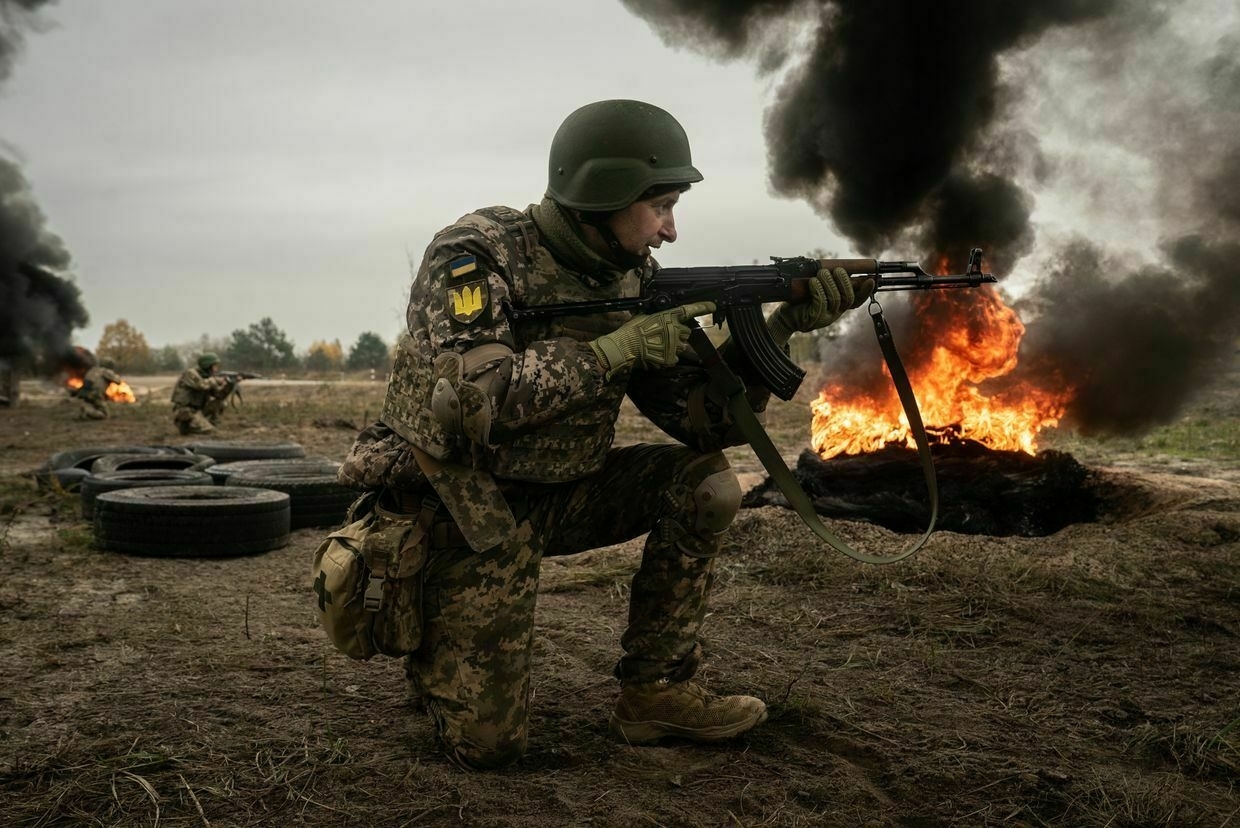
It’s important to make one thing clear: Ukraine’s manpower crisis refers specifically to the infantry; this is the deadliest, most difficult, and most uncomfortable job in the military. This is where the most casualties are taken, and this is where the most new recruits are needed to fill the ranks. In a war that is now dominated by drones, where anyone or anything moving around on the surface can be hunted by several high-precision drones within a few minutes, the life of the infantryman is truly horrible, and often, no amount of patriotism is enough for the average Ukrainian to take up this job. Lots of people are still joining the military voluntarily, but they are almost all going to other roles, especially in drone units. In fact, some are joining drone units voluntarily, specifically to avoid eventually being drafted into the infantry, while others, as you mentioned, choose to hide at home.
Unfortunately, this situation isn’t really getting better, as more people are still needed to avoid losing the country. If you ask me, the main hope to solve the manpower crisis is for two things to happen: First, the Ukrainian leadership needs to prioritize reforming mobilization, training, and especially how its soldiers are used on the battlefield so that the life of the Ukrainian infantryman is placed at front and center of the planning of operations on all levels. Second — and longer term — the military should learn to play to their strengths of drone warfare and do more and more to change how we understand the way war is being fought, with a wider gray area between positions that can be a great big killzone for Russian troops without Ukrainian infantry to have to be there. — Francis Farrell, reporter
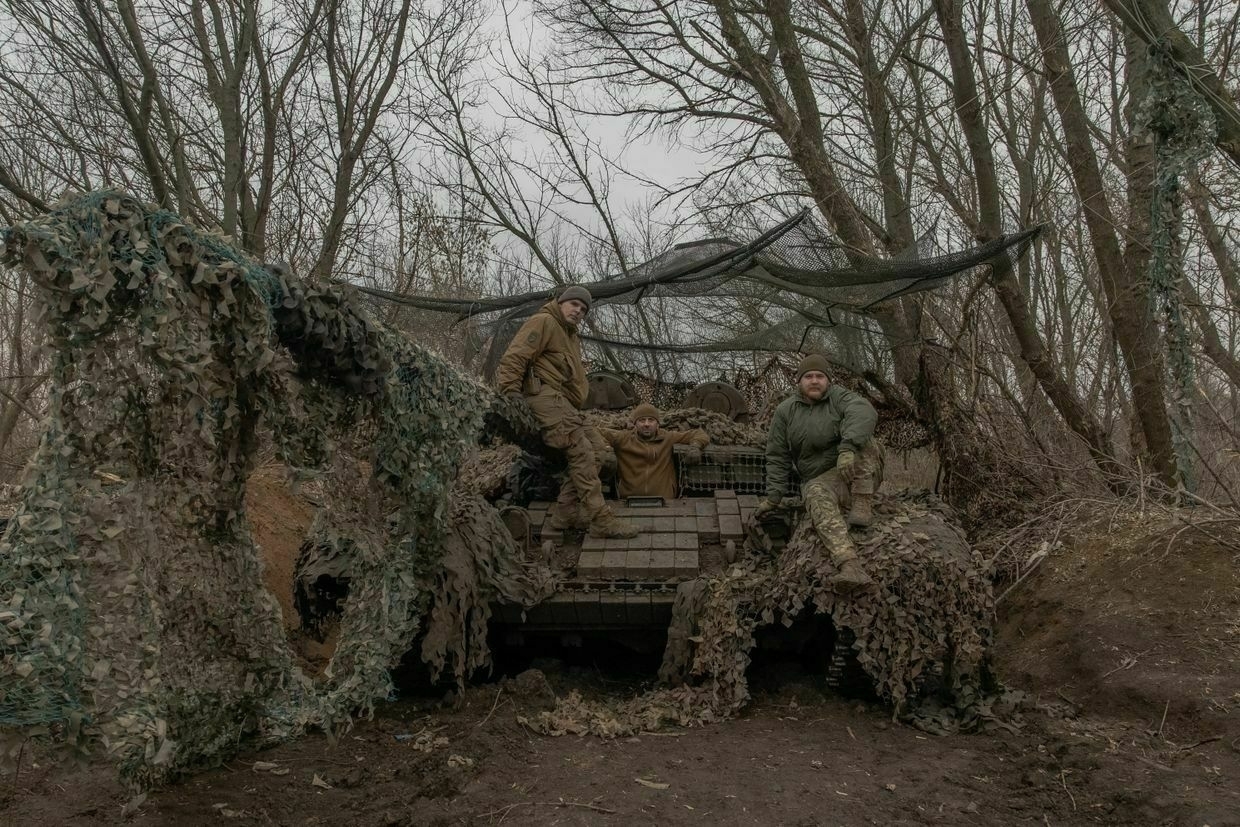
Azov tank crew members pose on their tank near Toretsk, Donetsk Oblast, on Jan. 31, 2025. (Roman Pilipey / AFP) Question: I have a question related to the new proposal for a one-year military contract for citizens between 18-24. What is the status of this proposal? Is it implemented already or is it currently being discussed in the Rada? Which processes are necessary for it to be adopted, and do we know if this is likely to happen or is it facing many obstacles?
Answer: The Defense Ministry officially launched the “Contract 18-24” project on Feb. 11, and volunteers can already apply online. Deputy head of the Presidential Office Pavlo Palisa described it as a “pilot project” in its “test mode,” however. The project is being carried out on a limited scale so far, including four Ground Forces brigades, one Airborne brigade, and one Marine brigade.
Based on the results, there are plans to further expand the project to other units. The number of people who signed up via this procedure is in the hundreds, not thousands. — Martin Fornusek, senior news editor
Question: We, your readers, hear constantly about the need for re-organization and reform of the Ukrainian military. For me, and other non-Ukrainians with a serious interest in Ukraine, can you discuss the current problems, like what happened to Zaluzhnyi, what’s up with Commander-in-Chief Oleksandr Syrskyi, and the aspects of corruption and mismanagement in the Ukrainian military?
Answer: Here, I am very happy to direct you to our latest article on this exact topic, by my colleague Natalia Yermak and myself. What’s up is that while Ukraine is waging a brutal struggle against Russian forces in the trenches and fields, it is also waging another battle, an internal one, against a military culture steeped in Soviet-era practices and mentalities that lead to excess loss of life and territories — the two things most dear to Ukraine in this war. There is a lot to go into, from the exact way that this actually manifests itself on the battlefield, to the persona of Oleksandr Syrskyi himself and the efforts to change the system, and for that, you should definitely check out the article. — Francis Farrell, reporter
Question: In relation to the ongoing discussions about the Russian invasion, why is the Russian side not interested in peace?
Answer: Russia launched its full-scale invasion of Ukraine in 2022 with an attack on the capital, Kyiv, as part of a broader attempt to decapitate and destroy the independent Ukrainian state. That attempt failed then, but now, having made progress in their war of attrition, and with the U.S. now abandoning the policy of supporting Ukraine’s struggle and instead looking more and more likely to abandon Kyiv altogether, the Russians are feeling pretty good about their position.
Even their stated minimalist goals call for the handover of a lot more Ukrainian territory in Donetsk, Kherson, and Zaporizhzhia oblasts, inhabited by millions of Ukrainians. This is what the world, including U.S. President Donald Trump, needs to understand: Russia is absolutely not interested in peace simply because they started this war wanting a lot more, and they feel more confident in their ability to get it than they have in three years. — Francis Farrell, reporter
Question: What is the reason behind the Trump administration’s Russian propaganda talking points?
Answer: Without actually getting inside their heads — which I don’t think I’d enjoy in the slightest — it’s impossible to say for sure. But, I guess there’s a sort of sliding scale of possible reasons, none of them particularly encouraging.
At one end of the scale, there is the possibility that they’re just underqualified, naive, inexperienced, and are falling for Russian propaganda.
I’d say Steve Witkoff is perhaps the best example of this — he’s a real estate mogul, with no experience of politics or diplomacy, and was positively swooning about Putin after meeting him in Moscow last month. And all it seemed to take was a bit of a smile from Putin and a painted portrait of Donald Trump as a gift to take back to the White House.
Put yourself in his shoes: going from the world of luxury real estate to suddenly finding yourself in the Kremlin — discussing the future of entire countries — must be pretty intoxicating.
And what’s the result? You fall for the spectacle and take Putin at his word. Next thing you know, you’re chatting to Tucker Carlson, telling him that any Ukrainians who speak Russian are absolutely fine with living under Russian occupation.
In the middle of the scale, there is the possibility that they just don’t actually care about what they’re saying, so long as they get what they want.
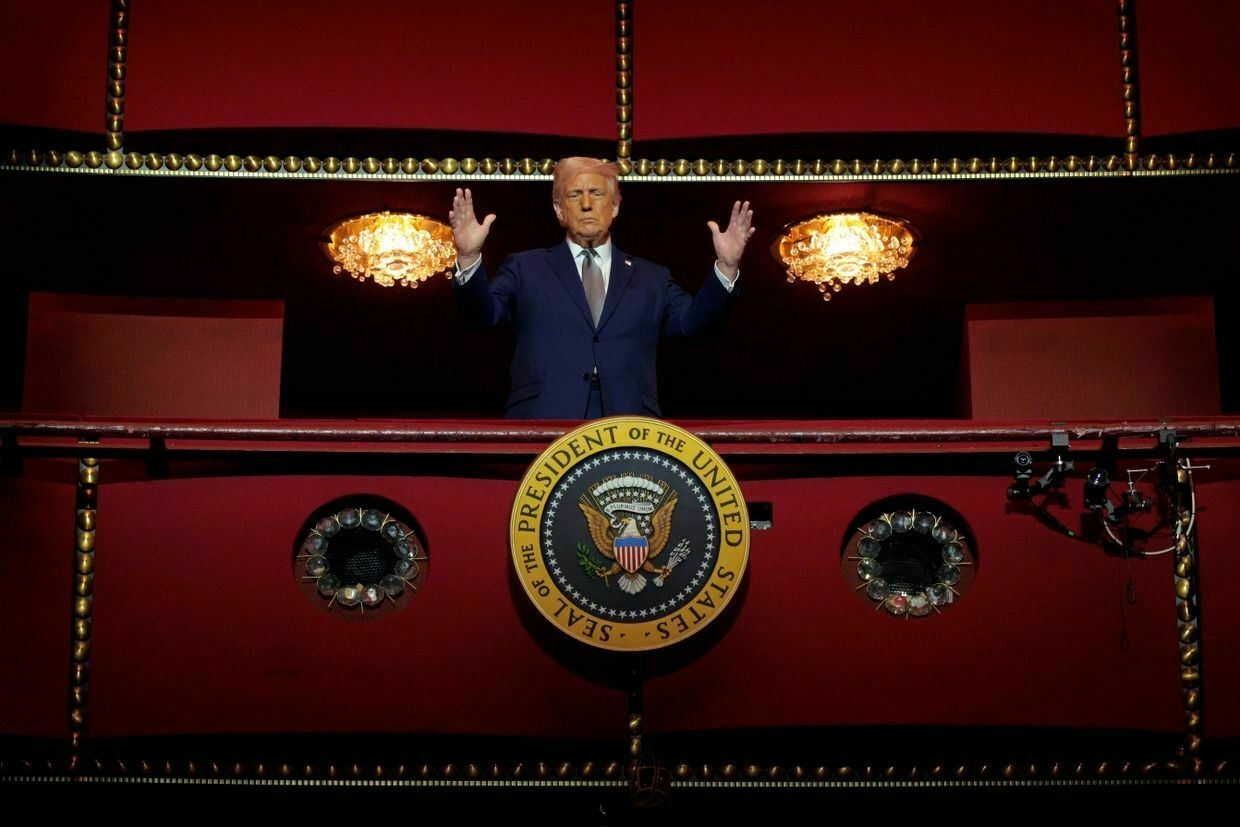
Donald Trump looks down from the Presidential Box at the Kennedy Center in Washington, D.C., on March 17, 2025. (Chip Somodevilla / Getty Images) 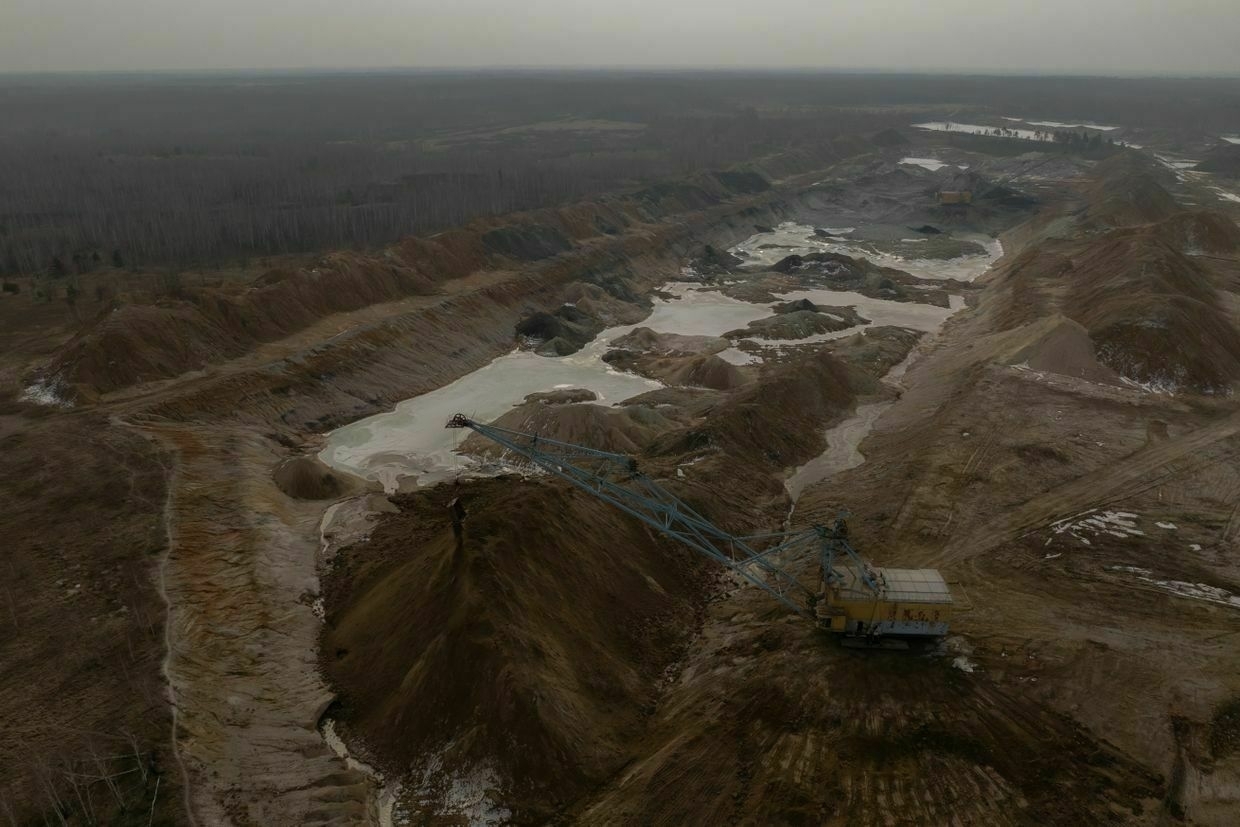
A dragline excavator operates in a titanium mine in Zhytomyr Oblast, on Feb. 28, 2025. (Roman Pilipey / AFP) Trump is the perfect example of this — he wants the mineral deal signed, and he was willing to say whatever it took to pressure Zelensky to do it. And, if you want to say something bad about Zelensky, and you’re looking for material, then all of those pre-prepared Kremlin lines that propagate so fruitfully on social media are just sitting there waiting for you.
I think this is the most likely reason, which is pretty terrifying. I recently interviewed historian Marci Shore about why she and her husband, Timothy Snyder, are leaving the U.S. to teach in Canada, and she put it perfectly.
Speaking about the Oval Office showdown, she said, “This was the profound moment that exposed that you’re dealing with people for whom there are no first principles, you’re just looking into this abyss of moral nihilism. Everything is a transaction, everything is a deal."
At the other extreme end of the scale, we get into the slightly conspiratorial world of “Is Donald Trump a Russian asset?"
We covered this in another interview with an author who is absolutely convinced he is. He has written two books about it, and there’s a lot of compelling evidence, but no smoking gun.
Regardless, it’s enough of a concern that even a British MP has raised it as a possibility.
But it’s sort of a moot point at the end of the day — whether Trump is a Russian asset or not, he’s sure acting like one. — Chris York, news editor
Question: What is the situation with the Ukrainian troops in Russia’s Kursk Oblast? We hear stories that they are surrounded. Other stories say they are retreating back to Ukraine. Have they got home safely?
Answer: Ukraine has had to withdraw from most of Russia’s Kursk Oblast, a long-expected outcome after the troops on the ground have suffered from critical logistical issues for months.
Ukraine is still holding onto a small patch of territory in Kursk Oblast near the border, which Western military experts have said was likely to prevent a Russian breakthrough into Ukraine’s adjacent Sumy Oblast in the northeast. The withdrawal appears to have been chaotic as always, which — like in the cases of Avdiivka, Bakhmut, and Kurakhove — could have been avoided by withdrawing weeks or a month earlier.
The rise and fall of Ukraine’s Kursk gambitAs Ukraine’s seven-month-long incursion into Russia’s Kursk Oblast came to what appears to be its end, Ukrainian soldiers and military experts are questioning the operation’s goal and the long-term effect it will have on the war. Ukraine launched a surprise cross-border incursion into Russia’s Kurs…The Kyiv IndependentAsami Terajima
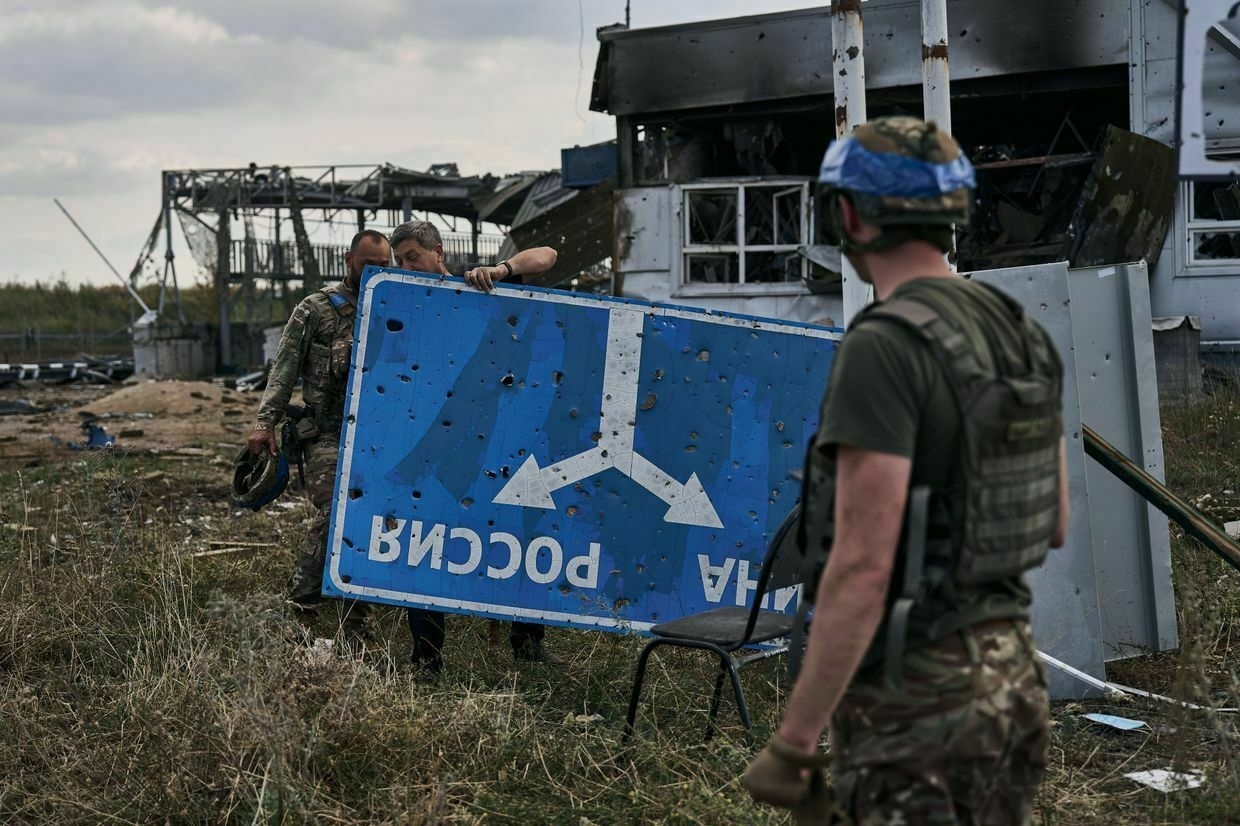
But the withdrawal wasn’t as bad as it could have been, with no major encirclements, according to both troops on the ground and experts. Soldiers have had to walk on foot though for days, leaving their valuable equipment behind. Many raised concerns over expending manpower and limited resources into invading another country’s territory when they could have been used to defend one’s own, especially as Russia gained ground on the eastern front — where many of the units participating in the cross-border operation were previously deployed — over the second half of 2024. — Asami Terajima, reporter
Question: Ukraine is obviously maintaining the position that the parts of the four oblasts Donetsk, Luhansk, Zhaporizhia, and Kherson that are not in Russian hands can never be ceded to Russia in a ceasefire, nor will the effectively occupied parts legally be recognized as Russia. But how far can Ukraine be forced by the U.S. to make concessions in this respect?
Answer: Zelensky has to walk a fine line on this issue, balancing the need to retain U.S. support — which right now Ukraine definitely does need as Europe isn’t ready to fill the gap just yet — and public opinion.
The latest opinion poll found that 38% percent of Ukrainians were open to conceding territory in a peace deal, up from 8% in December 2022.
But the number of Ukrainians who oppose giving up territories under any circumstances, “even if this would prolong the war and threaten the preservation of independence,” stands at 51%.
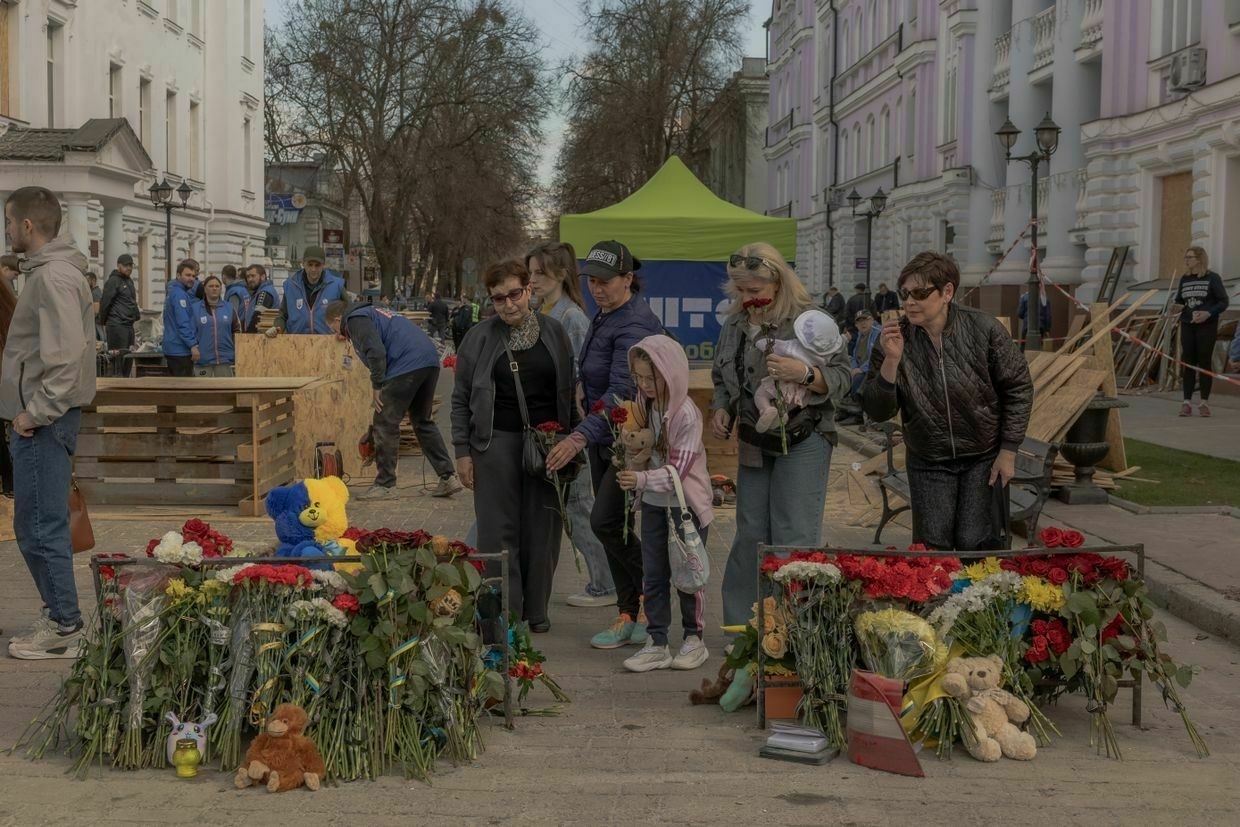
People lay flowers at a memorial at a missile strike site in Sumy, Ukraine, on April 14, 2025. (Roman Pilipey / AFP) Obviously, these numbers could shift further in the future, but right now, Zelensky is in a tricky spot.
But it’s just too early to know what sort of concessions the U.S. will demand of Ukraine, and given the absolute craziness of the last couple of months, it’s impossible to predict.
One point worth stressing, however, is that those polls do not include the views of the millions of Ukrainians currently living under Russian occupation. The debate among politicians and the media tends to focus on land, but it’s also lives that are at stake.
Unfortunately, Trump doesn’t seem to take matters like this into account in his pursuit of just getting deals done, so what is abhorrent to you and I, is nothing of the sort in his mind. — Chris York, news editor
Question: Why doesn’t Ukraine conscript women into the military forces like men?
Answer: I don’t know the official reasoning for why Ukraine doesn’t conscript women, but I think it goes back to the traditional war mentality that women could take over the jobs needed to keep the cities running. Despite the critical manpower shortage, many Ukrainian soldiers — predominantly over the age of 45 — that I have met said the last thing they want is for women to be forced into the war, saying that they are fighting at the cost of their lives to protect women and children.
But Ukrainian women have also proven to be excellent soldiers, sometimes successfully taking over leadership roles and conducting extremely dangerous missions. — Asami Terajima, reporter
Ukrainian Valkyries: Women embrace military training to learn to defend their homeland (Photos)Since Russia launched its full-scale invasion of Ukraine in 2022 and Kyiv announced a general mobilization, thousands of Ukrainians have been called up to defend their homeland. In Ukraine, conscription is mandatory only for men. Despite that, more than 45,000 women have voluntarily joined the Arm…The Kyiv IndependentOksana Parafeniuk
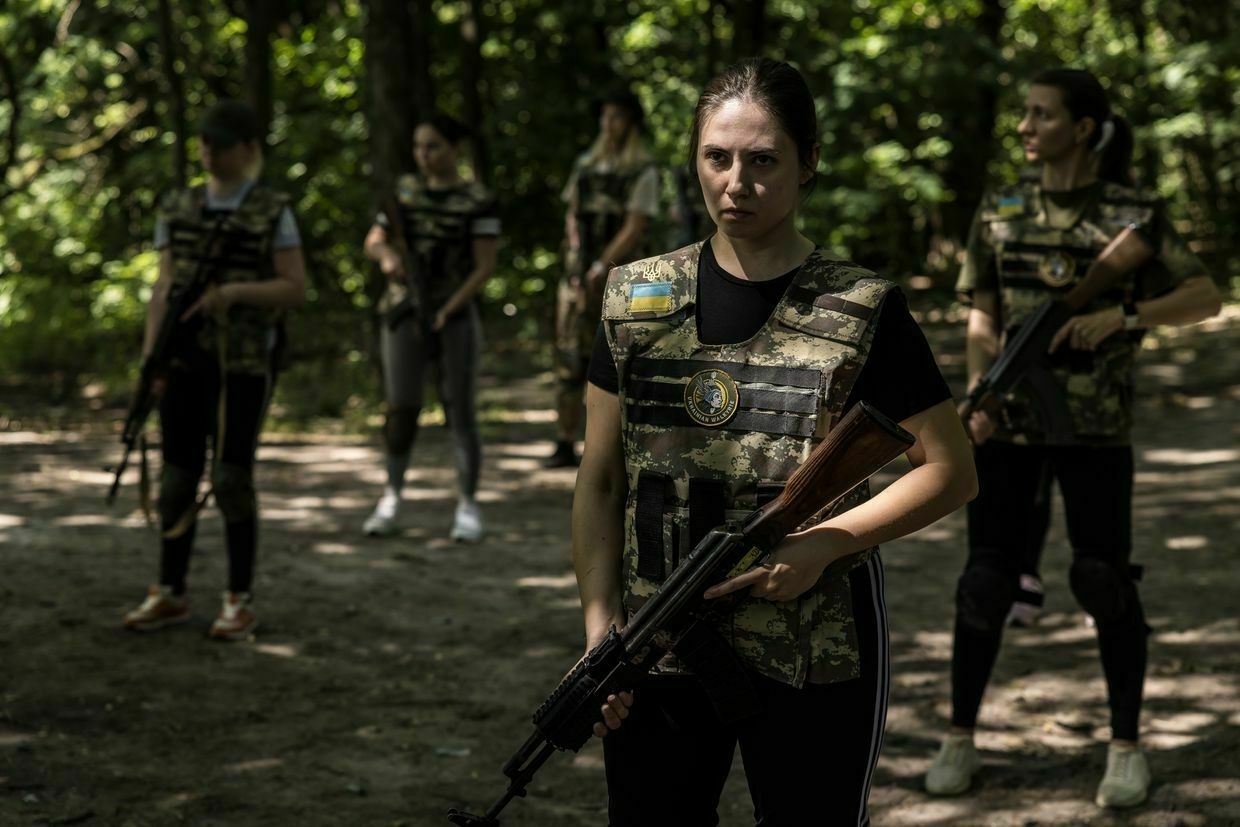
Question: There are a fair number of NATO nations individually providing military equipment. But seeing as they are of different origin, operational characteristics, maintenance needs, and “operating manuals,” has this proven a problem for Ukrainian troops on the front lines?
Answer: Yes, this has been a major issue for Ukrainian soldiers, requiring a fair bit of tinkering with the weapons received. This has particularly complicated the match-up between arms and ammunition, with Ukrainian soldiers reporting the need to re-distribute gunpowder between disparate shells and explosives regularly. — Kollen Post, defense reporter
Question: After the recent interruption of weapons deliveries and intelligence, is everything back to normal? Is my country now meeting its commitments under the Trump administration (as the majority of the American people want)?
Answer: As far as we know, yes, but that comes with a few caveats.
The nature of intelligence sharing means few, if any, details about the state of the current relationship between the U.S. and Ukraine are public, or will be made public, so all we have to go on are the statements made by officials. And, according to both sides, it’s back up and running. Whether or not it’s up and running at the same level it was, we don’t know.
As an aside, there was a great piece in the NYT on the intelligence relationship between the U.S. and Ukraine throughout the full-scale invasion, though notably, it doesn’t cover any of the period since Trump took charge. It’s very much worth a read, though.
As for military aid, that which was allocated by President Joe Biden is still making its way to Ukraine after the pause.
The crucial question here is how long will it last? Trump has yet to authorize any new weapons shipments and has tied future aid to the minerals deal which is still yet to be signed. So it’s all a bit murky as to how it will play out.
One notable recent announcement was that on April 3, U.S. General Christopher Cavoli said more F-16 fighter jets are being prepared for transfer to Ukraine. — Chris York, news editor
Question: What can individuals around the world do to help Ukraine the most?
Answer: This is one of the most frequently asked questions from our readers and members. The most obvious answer is to donate — two well-known organizations that support those on the front line are Come Back Alive and the Hospitallers. Especially since the suspension of USAID funding, donating even a few dollars can make a big difference: Ukraine was the largest recipient of U.S. economic aid, receiving over $14 billion in 2023.
Outside of making a monetary contribution, you can also contact your elected representatives, asking them to vote in favor of initiatives that help Ukraine, boycott companies that still operate within Russia, and read and share news from Ukraine. We’ve even made this list about how to help Ukraine, so it’s easy for you to share. And most importantly, don’t give up — every effort counts. — Brooke Manning, senior community manager
Ukraine’s long-suffering aerospace giants look to Europe to break free from Russian orbitWhere the Donbas meets the Dnipro River, the USSR built out a dense range of massive factories, using the local coal and metal reserves to smelt, weld, and cast the heaviest of machinery — and weaponry — for the whole of the Soviet Union. One of these is Pivdenmash, formerly known byThe Kyiv IndependentKollen Post
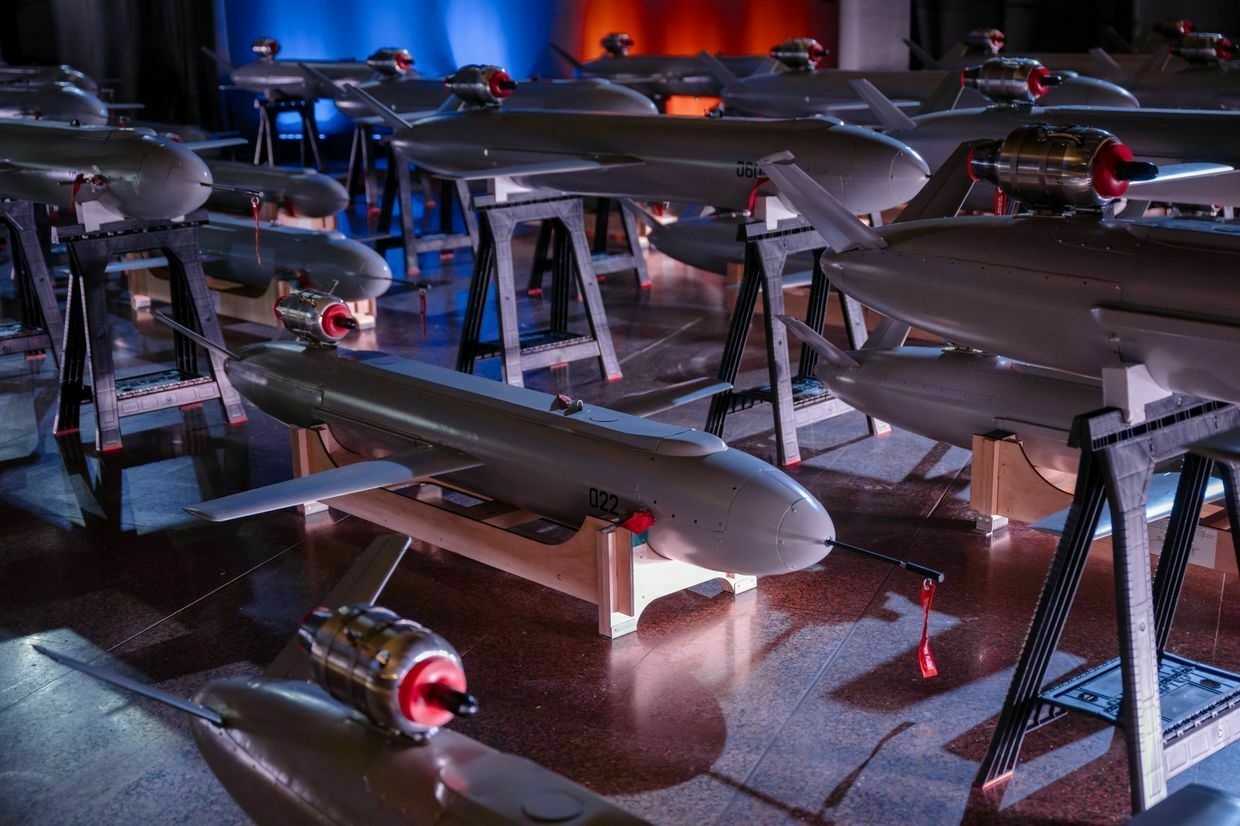
EU unveils new sanctions against Belarus in response to presidential elections
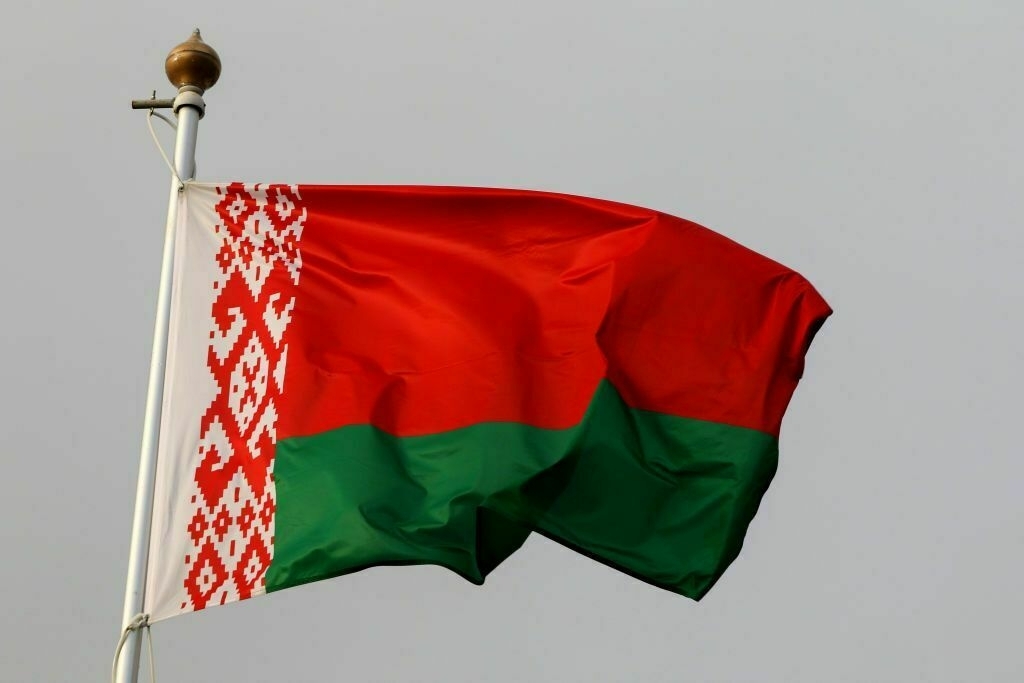
The EU has introduced new sanctions against Belarus on March 27, in response to continued repression and the election of Belarusian dictator Alexander Lukashenko in January.
Lukashenko was inaugurated into his seventh consecutive term as President of Belarus on March 25. Several Belarusian human rights groups have decried the elections as undemocratic and denounced the regime for human rights violations.
In power since 1994, Lukashenko’s rule has been marked by a harsh crackdown on political opposition, free media, and civil society.
Twenty-five individuals and seven entities have been sanctioned for undermining democracy and the rule of law in Belarus.
The sanctions also denounce the role of these individuals and entities in human rights violations, repression, and military support of Russia in its war against Ukraine.
Nine judges have been sanctioned for issuing politically motivated sentences to repress civil society and democratic opposition.
Belarus' Election Commission and its members have been sanctioned for their role in holding elections “conducted in a climate of repression and human rights violations,” the European Council said in its press release.
The chair of Belarus’s largest political party, Aleh Ramanau, has been sanctioned.
Tsybulka-Bel LLC, a Belarusian agricultural company, has been imposed with restrictive measures for coordinating with Belarusian authorities to deploy inmates as forced laborers.
Several companies and their leadership have been subject to restrictive measures for their active participation in the Belarusian military-industrial complex. This includes Precise Electro-Mechanics Plant and its director, Yuri Tchorny.
The Belarusian Election Commission claimed that Lukashenko “won” 86.82% of the vote on Jan. 26.
The other candidates in the election were regime-approved and little-known. Sergey Syrankov got 3.21% of the vote, and Oleg Gaidukevich won 2.02% of the votes.
Ukraine war latest: Russia preparing for new spring offensive in Sumy and Kharkiv oblasts, Zelensky saysKey developments on March 27: * Russia preparing for new spring offensive in Sumy and Kharkiv oblasts, Zelensky says * ‘With or without the US’ — France, UK harden line over Ukraine at ‘Coalition of the Willing’ summit * North Korea sent 3,000 more troops to Russia to offset Ukraine war losses,…The Kyiv IndependentThe Kyiv Independent news desk
